Hazelnut - she is the evoker of wisdom, vanguard regenerator of fire or ice scoured lands and beholder of the watery depths
This is the 30th installment of the Stacking Functions in the Garden, Food Forest and Medicine Cabinet : The Regenerative Way From Seed To Apothecary series.
This post serves as the 30th post which is part of the above mentioned (Stacking Functions in the Garden, Food Forest and Medicine Cabinet : The Regenerative Way From Seed To Apothecary series).
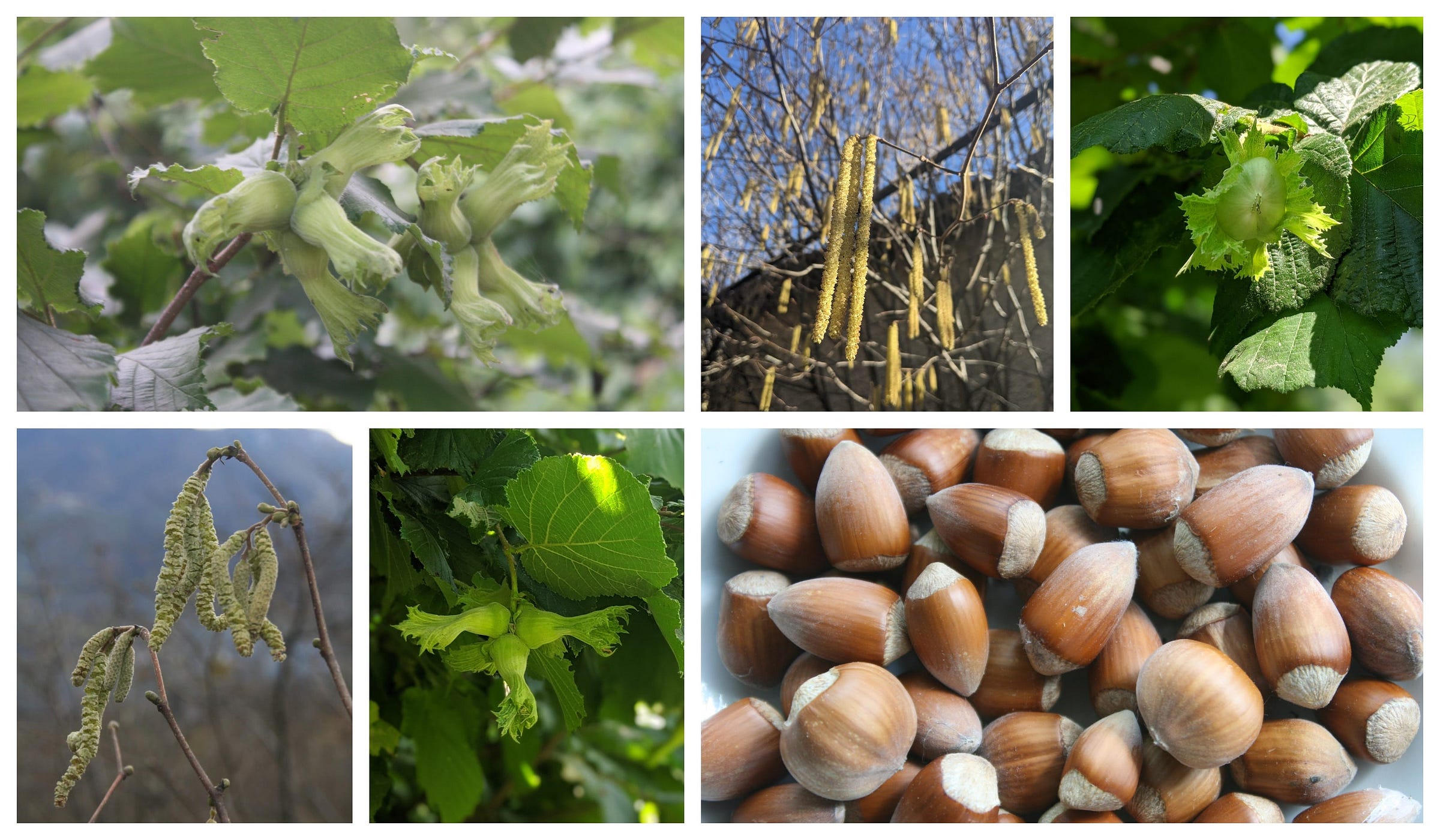
These rooted beings were known as Colltainn or Coll to my Gaelic ancestors. In the Gaelic Ogham script, the hazel tree is represented by the letter "Coll", which is the ninth letter of the alphabet. The Ogham alphabet is often referred to as the "Celtic Tree Alphabet" because each letter is associated with a tree, and Coll is specifically linked to the hazel. The hazel is known for its association with wisdom, knowledge, and creativity in Celtic tradition.
Hazels are so resilient that they have been cultivated by ancient cultures from lands that are now called “Norway”, to “Finland” to “Russia”, “China”, “Alaska” “Newfoundland” and “Labrador” making Hazel (especially beaked hazel) a powerful ally for the northern food forest designer. In some areas of northern Europe and what is now called “Canada” various types of Hazel were cultivated along side other resilient and medicinal crops such as Golden Root (Rhodiola Rosea and Rhodiola integrifolia).
Here on Turtle Island a diverse array of cultures allied with the native Hazel to create food forests that persisted for centuries to millennia. Some of these food forests still produce today (despite the fact that their architects and stewards were forcibly removed in the name of “progress” and “civilization” decades ago). These are trees that can be powerful allies for our human family, enabling multi-generational abundance of both food and biodiversity to be left behind for the 7th generation that comes after we are gone.
They are absurdly tough and long-lived. I recently read that if you cut a mature plant flat to the ground, it will grow right back up the next year. This is because the American half of its ancestry is adapted to the wildfire biome of the American savannah, where wildfire used to be common.1 They tolerate both drought and flood.2 But it gets better. Hazel breeder Phil Rutter has reported that they also survive tornadoes, hailstorms, and downbursts.3 He mentions that it takes something like a backhoe to kill a mature hazel.4
Hazel is a multi-purpose champion of a plant that is super easy to grow, produces delicious nuts, pliable wood (which can be grown regeneratively via coppicing) that can be crafted into a variety of products, provides early fodder for bees and an encouraging spectacle when flowering during the mid-winter.
In a similar way to what I described in my articles on Oak trees, Birch trees as well as Pine trees, this ancient tree family is found in almost the entire Northern Hemisphere, meaning that the Hazel is one of those tethers to the ancient Indigenous history of all people who have ancestors that called the northern hemisphere home.
Thus, these resilient, wise and nourishing rooted elder beings of the Hazel family offer a sacred reminder of a time before arbitrary lines were drawn in the sand by statists for greed and ego back to an era when many of our ancient ancestors knew the trees intimately and had a reciprocal relationship with them. Long before people were swearing allegiance to kings, queens and flags they were swearing allegiance to the living Earth and recognizing our ancient kin (such as these beings we know as Hazel trees/shrubs) and the many gifts they shared with us.
If your ancestors hail from the northern hemisphere Hazel trees/shrubs offer you a sort of universal language to perceive the common ground you share with the ancestors of those now residing in nation states far and wide. This rooted being offers you a glimpse into your own indigeneity and your ancestors relationship to place. Yes, all of us have an indigenous past connected to our blood and our soul. For some of us, that indigeneity is buried under multiple millennia of bloodshed, oppression, re-writing of history and statist propaganda. Though it may be buried deep and many may have sought to erase that part of your heritage from the stories of modern cultures, this part of you exists nevertheless. This is part of your ancient heritage, when your ancestors lived close to the land and the forest and recognized more than human beings as deserving of our respect as conscious beings.
After you read the article below and learn about all the beauty, blessings and the many gifts offered to us by the Hazels of the world, I invite you to look upon her with gratitude and reverence for all that she shares with the world. In doing so, you will be choosing to see the world through the eyes of your ancient ancestors.
Through seeing trees like Hazel as those whose blood flows in your veins now did millennia ago you begin to unlearn the lies, self important delusions and separation mentality that is inherent in modern civilization. In that act to see the Hazel with the understanding and reverence of those who came before you and walked the earth with respect eons ago, you are building a tangible bridge that connects you to your honoured elders and ancestors and a bridge that also directs you towards a more Regenerative, humble and hopeful future.
Such are the blessings we are given when we learn to see the living earth and our rooted elder kin as the ancients did, as wise teachers, protectors, healers, sources of inspiration, regeneration and renewal.
When we learn to perceive and interact with our rooted kin (such as Hazels) as our ancestors did we shatter the modern illusion of separation that nation states attempt to impose on us and begin to speak a universal language that connects us all as equals.
What more can I say.... a plant so exceptional that people started naming their daughters after it.
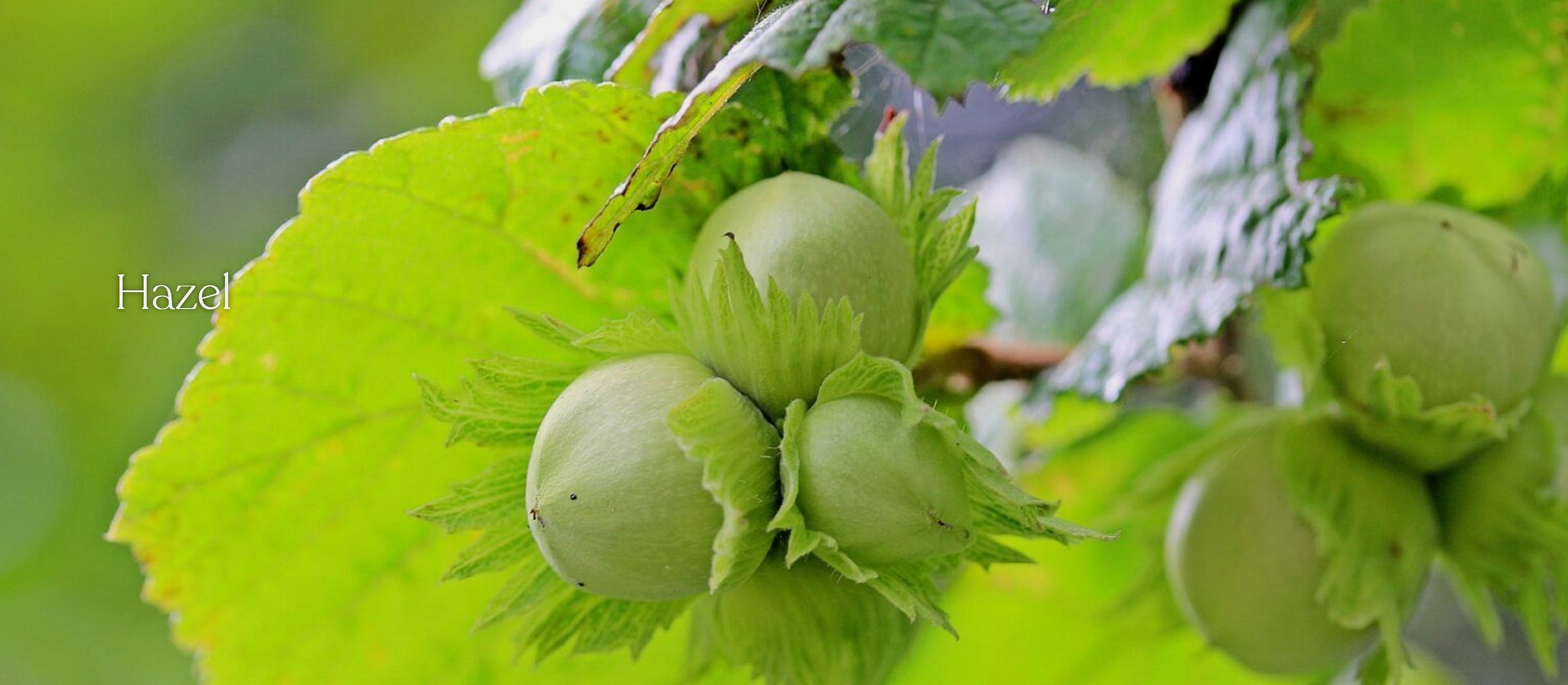
Corylus cornuta, Corylus americana, Corylus avellana, Corylus maxima, Corylus heterophylla
Common Name: Hazelnut, cobnut and filberts
Family: Corylus
Part used for medicine/food: the hazelnut kernel (the nut itself), oil, the leaves and bark
Constituents: healthy fats, protein, fiber, and various vitamins and minerals, including vitamin E, copper, magnesium, thiamine, manganese, procyanidin oligomers, quercetin, catechin, epicatechin, gallic acid
Medicinal actions: The bark, leaves, flowers, catkins and nuts are all considered astringent, wound healing, cardioprotective benefits, Neuroprotective and Neuro-regenerative, blood purifying, Osteoprotective and Osteoregenerative, fever-fighting, Ocular-Protective benefits, and sweat-inducing. Traditionally, hazel has been used to treat conditions like coughs, colds, hemorrhoids, varicose veins, and circulatory problems. Additionally, the nuts are a source of nutrients and have been used to soothe upset stomachs.
Pharmacology: research shows that hazel offers antioxidant, anti-inflammatory, and antimicrobial properties, particularly in hazel leaves and nuts.
Cold Hardiness: 2-9
Native Range:
Hazels have an extensive range and can be found throughout the northern hemisphere anywhere there is an appropriate temperate climate. Hazel species grow wild in North America, Europe, the Caucasus, and parts of Asia, including China, Tibet, and Japan.
Hazels will grow in woodlands, meadows, abandoned fields, forest edges, railways, stream valleys, fencerows, pine barrens, and gardens. Hazels will grow in full sun or partial shade. They’re often an understory species but are more common in open woodlands than those with dense canopies.
Hazel is widely distributed throughout much of Europe, from Britain and Scandinavia eastwards to the Ural Mountains in Russia, and as far south as Spain, Italy and Greece. It also occurs in Morocco, Algeria, Turkey, Iran and the Caucasus region.
Within this large range its distribution is uneven and it typically grows as an understorey component of deciduous forest, especially with oaks (Quercus spp.), although it also occurs with conifers.
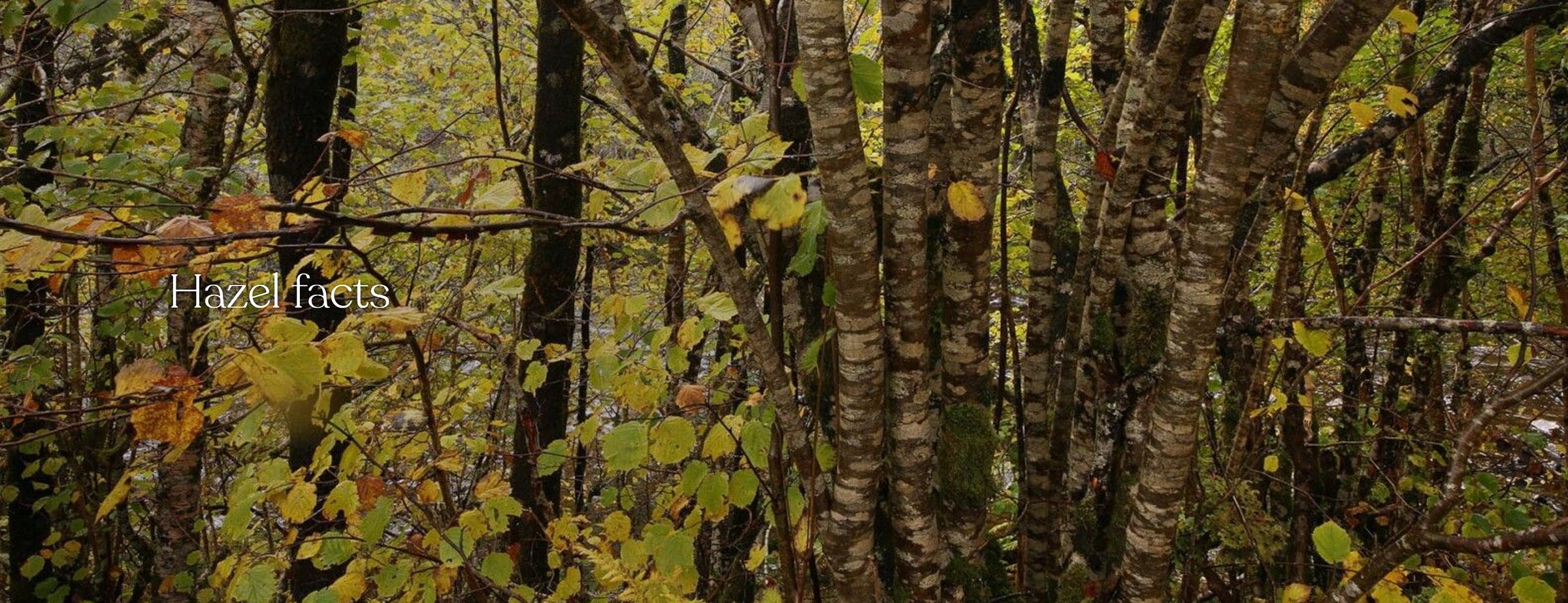
Growth Forms:
Corylus cornuta
also known as beaked hazelnut, is a multi-stemmed, deciduous shrub with an upright-spreading growth habit. It typically reaches a height of 4-8 meters (13-26 feet) and can have stems 10-25 centimeters (4-10 inches) thick. This shrub is known for its ability to form dense thickets through suckering and rhizomes.
Corylus americana
commonly known as American hazelnut, is a multi-stemmed, deciduous shrub that typically grows to a height of 8-16 feet (2.5-5 meters). It has a rounded, spreading habit, often forming dense thickets due to its rhizomatous (underground stem) growth. Under certain conditions, it can even resemble a small tree.
Corylus avellana
commonly known as the common hazel, typically grows as a stout shrub or a small tree with multiple stems. It can reach heights of 3-8 meters (10-26 feet), but can exceptionally grow up to 15 meters (49 ft). The plant can be pruned to maintain a desired shape, either as a shrub or a small tree.
Corylus maxima
commonly known as the giant filbert or giant hazel, typically grows as a large, suckering, deciduous shrub or small tree. It can reach heights of 12-20 feet (4-6 meters). The growth form is characterized by multiple stems, forming a somewhat rounded or spherical crown. Some cultivars, like 'Purpurea', can be trained into a more tree-like form.
Corylus heterophylla
also known as the Asian hazel or Siberian filbert, typically grows as a deciduous shrub or a small tree, reaching heights of up to 7 meters (23 feet). It's characterized by its spreading habit, sometimes forming thickets. The bark is typically gray and can become rough and fissured with age. It's known for its variable leaf shapes, which can be oblong, ovate, or obovate, and have irregularly serrated edges.
Reproduction:
Hazelnuts are monoecious, meaning they have separate male and female flowers on the same tree. Male and female flowers may bloom at different times.
Hazel have a very early flowering time compared to most nut trees. In some areas, the pollination season starts in January. How many plants pollinate during winter? Not many.
It starts with catkins, a long droopy flower that first appear on hazelnuts in the spring. Catkins are the male parts of the tree that produce and release pollen.
The pollen is spread by the wind to these tiny red flowers, the female parts of the hazelnut tree. Pollen can be spread up to 50-feet, but rarely does it have to travel that far. Every hazelnut tree has both male and female flowers, so all the pollen has to do is reach the tree next to the one it came from. In case you’re wondering, hazelnut trees can’t pollinate themselves. The pollen must come from another tree.
What makes the hazelnut truly different from virtually every other plant is that when the pollen reaches a flower, nothing happens. The pollen, or sperm, goes dormant for months while the flower continues to develop. Sometime in late April or early May, the sperm reawakens and finally fertilizes the tree. A mere six weeks later and the nuts of the tree are fully grown.
Habitat and Ecological Niche:
The American hazelnut (Corylus americana) occupies a broad ecological niche, thriving in diverse habitats across eastern North America. It is a mid-seral species, commonly found in woodlands, forest margins, hedgerows, and roadsides, as well as disturbed areas like clearings and reclaimed mine sites. It prefers rich, moist, well-drained soils but can tolerate a range of conditions, including some shade and drier sites.
Ecological Interactions:
Food Source:
The nuts are a valuable food source for many animals, including squirrels, deer, foxes, various bird species (like grouse, turkey, woodpeckers), and rodents. Thus, for those looking to eat meat and hunt, this is a species that invites your dinner to come to you. The male catkins (flowers) are also eaten by grouse and turkey during the winter.
Habitat Provider:
The shrub's dense branching structure and large leaves offer excellent cover and nesting habitat for wildlife, including songbirds.
Pollination:
American hazelnut is not self-fertile and requires cross-pollination from another plant. Bees are attracted to the abundant pollen produced by the male catkins.
Interactions with Other Plants:
It can be found growing alongside various other plant species, including shagbark hickory, raspberries, sumac, and dogwood.
The ecological niche of beaked hazelnut (Corylus cornuta) is characterized by its adaptability to various habitats, including somewhat-wet to wet forests, alder swamps, and forest edges. It thrives in areas with a mix of sun and shade, tolerating partial shade but also preferring open canopies. The species is relatively shade-tolerant but not intolerant of entirely open, hot, and dry conditions. Beaked hazelnut is also known to be a fire-adapted species, readily resprouting from its root crown after fire disturbance.
Ecological Interactions:
Food Source:
Beaked hazelnut nuts are a significant food source for many wildlife species. Squirrels, chipmunks, and other small mammals consume the nuts, burying some for later use, which can aid in seed dispersal. Birds like grouse, pheasants, and some woodpeckers also eat the nuts. Deer, moose and rabbits love them. Thus, , again, for those looking to eat meat and hunt, this is a species that invites your dinner to come to you. The nutrient-rich catkins and buds are consumed by grouse and other birds.
Shelter and Nesting:
The shrub provides cover and nesting habitat for various birds, including ruffed grouse. The dense thickets formed by beaked hazelnut offer protection for smaller animals.
Browsing:
Moose and beaver browse on the stems of beaked hazelnut, particularly in winter. Deer also browse on the foliage, especially during the winter months.
Seed Dispersal:
While squirrels and chipmunks primarily distribute nuts locally, jays like the blue jay and Steller's jay can disperse them over longer distances. The nuts buried by rodents have a good chance of germinating.
Influence on Plant Communities:
Beaked hazelnut can form dense thickets, potentially outcompeting other plant species (so potentially great as a barrier planting on the edge of your food forest). Its ability to resprout after fire can also influence the recovery of plant communities (and means this tree have evolved along side indigenous regenerative fire management on Turtle Island for millennia).
Human Interactions:
Native Americans have long used beaked hazelnut for food, with the nuts being consumed fresh or stored for later use. Twisted twigs were used for tying, and straight stems for arrows or weaving.
Common hazel (Corylus avellana) thrives in a variety of habitats, including woodlands, hedgerows, and forest edges. It prefers well-drained, moderately fertile soils and can tolerate a range of conditions, including full sun to part shade.
Ecological Role:
Food Source: Hazel provides food for various wildlife, including squirrels, deer, turkey, and birds like woodpeckers, pheasants, and jays, who eat the nuts. The catkins are a food source for ruffed grouse in the winter.
Habitat: It offers shelter for ground-nesting birds and other animals.
Soil Stabilization: Being a pioneer species, hazel can help stabilize soil, particularly in disturbed areas.
Support for Other Species: Hazel leaves are food for the caterpillars of numerous moths, and coppiced hazel provides habitat for butterflies and other insects.
At least 21 species of fungus have a mutualistic relationship with hazel.
Hazel is an important understorey tree in the Caledonian Forest, providing nuts for squirrels and other rodents, and it also supports a rare lichen community.
orylus avellana is a common understorey species in naturally regenerated mixed-hardwood stands, a frequent component of traditional field-boundary hedgerows, and has been a key species in European woodlands throughout the last 10,000 years (Hegi, 1981).
Relict forests of uncoppiced Atlantic Hazelwood in western Scotland and Ireland, as well as submontane stands on steep slopes in the Peak District and Lake District of England, may be under-represented in official community designations to date, particularly given their apparent ancient history and the diversity of lichens supported by the regenerating bark of C. avellana (Coppins & Coppins, 2003). These relict temperate forests warrant attention for their abundant diversity of cryptogamic plants; this is a globally uncommon habitat of minimal annual temperature variation together with high humidity and annual precipitation. The stools of C. avellana produce a cycle of bark surface continuity for specialized woodland lichens, for example Graphis alboscripta Coppins and P. James (White Script Lichen) known only from ancient Hazelwood stands in western Scotland.
Many fungal species grow in association with C. avellana in Britain and Ireland although relatively few are specific to this host. It has been suggested (Holden, in Coppins & Coppins, 2010) that soils characteristic of Hazel woodland (characterized by efficient detritivores in the soil, including earthworms) support both fewer fungal species and lower fruit body production than those associated with acidic conditions such as coniferous woodlands or moorlands. Where mature C. avellana grows in the Atlantic seaboard it is an important host for Hypocreopsis rhododendri Thaxt. (Hazel Gloves), a fungal species designated on the IUCN red list as Near threatened (Evans et al., 2006).
Corylus avellana is a member of a wide range of woodland and scrub communities in the National Vegetation Classification system (NVC; Rodwell, 1991), listed in Table 1, in which it is particularly prominent in Ash woodlands W8 (lowland) and W9 (upland). These vegetation types are currently in a state of ecological flux while the introduced fungus Hymenoscyphus fraxineus Baral et al. (Chalara Ash Dieback) sweeps through Ash trees in the region. In the north and west, these woodlands with C. avellana provide a food resource for Red Squirrel (Sciurus vulgaris L.) and Pine Marten (Martes martes L.) and the structural canopy over the river basin for Otter (Lutra lutra L.), Water Vole (Arvicola amphibius L.) and spawning salmonids (e.g. Atlantic Salmon, Salmo salar L. and Sea Trout, Salmo trutta L.). In the first few years following Chalara Ash Dieback and/or anthropogenic removal there may be increased niche availability for the pioneer C. avellana, but it seems reasonable to assume that there would be replacement in the following decades, assuming propagule arrival of larger, longer-lived tree species.
Flowering and Pollination:
Parts of Florets (female) :
Stigma. Portion of the style that is receptive to pollen germination. The stigmatic surface of hazelnut female flowers is red and covers the entire surface of the style.
Style. Elongated stalk that connects the stigma to the ovary.
Ovary. Basal portion of the female flower that bears the ovules. The ovary consists of a wall of tissue (eventually the nut shell) and two ovules.
Ovule. Structure within the ovary that bears the egg.
Egg. Female cell that (after fertilization) develops into the embryo.
Parts of Catkins (male) :
Anther. Pollen-bearing portion of the stamen.
Catkin. Pollen-producing organ.
Pollen. Grains bearing sperm formed in anthers on catkins.
Pollen germination. Growth of a pollen tube out of the pollen grain. This occurs when pollen is placed under suitable conditions, such as on the stigmatic surface of compatible flowers.
Health Benefits of Hazel:
Hazelnuts are incredibly nutritious. Hazelnuts contain 15% protein and are rich (60%) in fatty acids, vitamins and minerals, such as iron, calcium, potassium, selenium and magnesium. They are high in antioxidants, fiber, and healthy fats like omega-6 and omega-9. They also have good folate, vitamin B6, phosphorus, and zinc levels.
Incorporating them into your diet may have heart health benefits. In 2012, researchers had participants consume a diet where 18 to 20% of their daily calorie intake came from hazelnuts. The participants saw reduced cholesterol, triglycerides, and bad LDL cholesterol levels.
Researchers also found that hazelnuts have particularly high levels of antioxidants called proanthocyanidins compared to other nuts like pecans and pistachios. These antioxidants are believed to protect against oxidative stress and may help prevent or treat cancer.
Today, we focus on the nuts, but through the ages, the leaves, bark, flowers, and catkins were all part of medicinal remedies. Herbalists have used the catkins, bark, and leaves to make teas, the catkin tea for colds and flu, the bark tea for fever, and the leaf tea for diarrhea. They also used the bark externally to treat cuts and boils.
In traditional Iranian medicine, hazel leaves have a long history of use. In the past, they commonly used an infusion of hazel leaves to treat liver issues, but it’s still in use today for treating edema, hemorrhoids, phlebitis, and varicose veins.
Modern research supports the use of hazel leaves in traditional medicine. Studies have found that hazel leaves contain high levels of phytochemicals, mainly phenolic compounds, and may have antioxidant, anti-inflammatory, and antibacterial activities. Researchers in a 2023 study on the potential health benefits of hazel leaves predict that the leaves may have therapeutic effects for cancer, lipids, atherosclerosis, and diabetic complications.
Benefits of Hazelnuts
1. Promote Heart Health and offer cardioprotective benefits
Hazelnuts are considered cardioprotective, meaning they can help protect against heart disease. This is due to their high content of beneficial nutrients like monounsaturated fats, omega-3 fatty acids, antioxidants, and fiber. These components work together to reduce risk factors for heart disease, such as high cholesterol, inflammation, and high blood pressure.
Tree nuts are a well-known combatant in the fight against heart disease, and hazelnuts are no exception. There are a handful of vitamins and minerals found in hazelnuts that promote heart health.
Aside from being a great source of fiber, they contain a large amount of monounsaturated fatty acids, which help reduce LDL cholesterol (the “bad” kind) and increase HDL cholesterol (the “good” kind).
Studies conducted by the American Society for Nutrition and published in the European Journal of Nutrition showed that diets high in hazelnuts and other tree nuts resulted in lowered LDL cholesterol, reduced inflammation and improved blood lipids. The American Heart Association also recommends that, for optimum heart health, the majority of the daily fats that individuals should consume should be monounsaturated fats, which are the same found in hazelnuts.
Hazelnuts also contain a considerable amount of magnesium, which helps regulate the balance of calcium and potassium and is crucial to blood pressure.
2. Help Manage Diabetes
When laying out a diabetic diet plan, it’s important to focus on choosing monounsaturated fats over trans fats or saturated fats. Hazelnuts are a great source of these good fats, and eating recommended portions of hazelnuts as a substitute for more damaging,”bad” fat foods is a great way to ensure you gain the benefits of good fats without worrying about gaining additional weight.
In a 2015 study published in the American Journal of Clinical Nutrition, an interesting result occurred regarding how diabetics reacted when supplementing their daily diets with tree nuts. Like other studies, it was concluded that individuals introduced to heightened nut consumption in their diets experienced lowered cholesterol levels. The surprising variable was that higher nut doses provided a stronger effect on diabetics, doing more to lower blood lipids than for non-diabetics.
Diabetics with high cholesterol should consider adding hazelnuts and other tree nuts to their daily diets. Proven to improve glucose intolerance, hazelnuts’ high levels of manganese are also helpful in the fight against diabetes when used as a diet supplement.
Hazelnuts are also a great source of magnesium, which has been proven to decrease the risk for diabetes.
3. Filled with Antioxidants
Hazelnuts have many vitamins and minerals that are powerful antioxidants. Antioxidants wipe out damaging free radicals in the body and help prevent major disease and illness, like cancer and heart disease.
The hazelnut is also a great source of vitamin E, which helps fight aging and disease by reducing inflammation.
One serving of hazelnuts can provide almost an entire day’s amount of manganese as well, which is not an antioxidant but is a huge contributor to enzymes that are. Hazelnuts have the highest content of proanthocyanidins (PACs) as well, a class of polyphenols that gives foods like red wine and dark chocolate their “astringent mouth feel” compared to other nuts.
Studies have shown how PACs have a significantly higher level of antioxidant activity compared to others, like vitamin C and vitamin E, which only work in certain environments.
They also are shown to fight aging and help stave off disease. PACs are known for their ability to help treat urinary tract infections as well.
To get the most antioxidants from hazelnuts, it’s best to consume them with the skins present.
4. Boost the Brain (offering Neuroprotective and Neuro-regenerative benefits)
Hazelnuts should be considered a brain-boosting powerhouse. They’re full of elements that can help improve brain and cognitive function and help prevent degenerative diseases later in life.
Because of high levels of vitamin E, manganese, thiamine, folate and fatty acids, a diet supplemented with hazelnuts can help keep your brain sharp and working at its best, making hazelnuts excellent brain foods.
Higher levels of vitamin E coincide with less cognitive decline as individuals age and can also have a major role in preventing and treating diseases of the mind like Alzheimer’s, dementia and Parkinson’s. Manganese has been proven to play a major role in the brain activity connected to cognitive function as well.
Thiamine is commonly referred to as the “nerve vitamin” and plays a role in nerve function throughout the body, which plays a key role in cognitive function. It’s also why thiamine deficiency can be damaging to the brain.
The high levels of fatty acids and protein aid the nervous system and also help combat depression.
In a study published in Nutritional Neuroscience, hazelnuts were tested for their neuroprotective qualities. When provided as a dietary supplement, hazelnuts were able to improve healthy aging and memory and hinder anxiety.
In addition, a systematic review published in 2021 examined nut consumption’s effects on cognitive performance. While results were ultimately inconclusive in regard to how much eating nuts can protect cognition throughout life, the results suggest nuts do benefit cognition in “individuals at higher risk of cognitive impairment.”
Hazelnuts are also folate foods. Known for its importance for spine and brain development during pregnancy, folate also helps slow brain-related degenerative disorders in older adults.
5. Help Prevent Cancer
Thanks to hazelnuts’ high number of antioxidants, they’re important cancer-fighting foods. Studies have shown vitamin E’s capabilities for helping decrease risk for prostate, breast, colon and lung cancers, while also preventing the growth of mutations and tumors. Vitamin E has also shown possibilities of aiding in multi-drug resistance reversal and cancer treatments.
In other studies, manganese complexes were found to exhibit potential anti-tumor activity. For example, research conducted by the School of Chemistry and Chemical Engineering at Jiangsu University in China and published in the Journal of Inorganic Biochemistry found that manganese complex could be a “potential antitumor complex to target the mitochondria.”
Meanwhile, a 2023 study published in Advanced Biomedical Research determined that “hazelnut oil appears to cause the death of cancerous cells through an apoptotic mechanism.”
6. Hazelnuts offer Ocular-Protective benefits (they improve eye health)
Hazelnuts are good for eye health due to their high vitamin E content. Vitamin E is an antioxidant that helps protect the eyes from harmful molecules and slows the progression of age-related macular degeneration (AMD) and cataracts.
Vitamin E:
Hazelnuts are a good source of vitamin E, an antioxidant that helps neutralize free radicals in the body. Free radicals can damage eye cells and contribute to the development of eye diseases like AMD and cataracts.
Other Nutrients:
Besides vitamin E, hazelnuts also contain other nutrients that are beneficial for eye health, such as zinc and omega-3 fatty acids. These nutrients contribute to overall eye health and protect against vision problems.
7. Hazelnuts offer Osteoprotective and Osteoregenerative benefits (they improve bone health)
hazelnuts are beneficial for bone health. They contain essential minerals like calcium and magnesium, which are crucial for maintaining bone density and strength. Regular consumption of hazelnuts can help reduce the risk of osteoporosis and fractures.
Calcium:
Hazelnuts are a good source of calcium, which is a primary building block for bones and teeth.
Magnesium:
Magnesium plays a vital role in bone health by regulating calcium and potassium balance, crucial for preventing bone loss.
Other Nutrients:
Hazelnuts also contain other bone-friendly nutrients like vitamin E, manganese, and phosphorus.
Antioxidants:
The antioxidants in hazelnuts help protect bone cells from damage and promote healthy bone metabolism.
Reduced Risk of Osteoporosis:
By providing essential nutrients and promoting healthy bone metabolism, hazelnuts can help reduce the risk of osteoporosis and fractures.
8. Hazelnuts enhance Fertility and Reproductive Health
Hazelnuts benefit reproductive health in both men and women due to their rich nutrient profile. They are packed with antioxidants, vitamins, and healthy fats that improve sperm quality, potentially increase fertility, and support overall reproductive health.
For Men:
Hazelnuts are a good source of vitamin E, zinc, and selenium, all of which are crucial for sperm health. These nutrients help protect sperm from damage caused by free radicals and maintain the structural integrity of sperm, which is essential for successful fertilization.
Potential Increase in Sperm Count:
Some studies suggest that consuming nuts, including hazelnuts, may increase sperm count and improve sperm motility.
Testosterone Regulation:
The nutrients in hazelnuts also play a role in regulating testosterone levels, which are vital for male fertility.
For Women:
Supportive of Overall Reproductive Health:
Hazelnuts contain omega-3 fatty acids, folate, and antioxidants, which are important for reproductive health in both men and women.
Potential Fertility Boost:
Some research indicates that foods rich in protein, lipids, and antioxidants, like hazelnuts, help improve fertility in women.
Hormone Regulation:
Hazelnuts also contain minerals like selenium, iron, zinc, and calcium, which can contribute to hormonal balance, a crucial factor for reproductive health.
“The greatest healing provided by hazel is found within its atmosphere. Being near hazel trees or meditating upon a piece of hazel brings spirit alive and allows us to quickly cast off the old and move on to the new. Hazel's atmosphere exudes exhilaration and inspiration.” - source
History and Cultural Relevance of Hazel:
“Hazel was one of the first trees to colonise the land after the end of the last Ice Age,” writes Gabrielle Hatfield, “and for a great period of time it would have been one of the most abundant tree species.”
Humans have been enjoying hazels since prehistoric times and research confirms that hazelnuts provided a staple source of food in cultivated (regenerative fire managed food forests in northern Europe and North America) before the days of wheat. Evidence of large-scale Mesolithic nut cultivation and processing, some 9,000 years old, was found in Scotland and Hazels have been used extensively across the temperate zone throughout all civilizations.
After the glaciers retreated, the continent was a cold tundra of lichens, mugwort, dwarf willow, and sea buckthorn - populated by prehistoric megafauna and migratory bands of humans returning from their Ice Age refugia in the mountains. Around 9,600 BCE, global temperatures rose 7°C in less than a decade, allowing for temperate deciduous forests to return. Populations of Mesolithic humans expanded rapidly across Europe, bringing their most prized plant with them: hazel.
Much as peaches, once introduced, were spread across North America by indigenous people in a matter of decades, the pollen record shows that hazel (Corylus avellana) suddenly becomes ubiquitous across Europe as soon as the climate warmed, brought to every corner of the continent by pre-statist indigenous European cultures. Hazel was the original Tree of Life for Mesolithic Europeans.
Its branches, tall and flexible but slender enough to cut with a flint axe, were used for tools and firewood. Mesolithic thatched huts were often made with hazelwood beams. From cradle to grave, the people of Mesolithic Europe relied on hazel more than any other single plant. Excavations of habitation sites from this period can turn up hundreds of thousands of roasted hazelnut shells and containers where viable seeds were gathered and stored for planting. For over five thousand years, this single plant was the lifegiver to nearly all of Europe’s people.
Whereas modern industrial agriculture is descended from a distinctly imperialist Roman plantation system based on slave labor, European forest garden food production systems (which cultivated Hazel along side other nuts and fruit) are the direct descendants of the indigenous forest gardens of pre-agricultural Europe. Since the Neolithic Revolution, an assortment of farming systems in Europe that relied heavily on monocultures and a handful of finicky staple crops often ended abruptly and violently. The diverse forest gardens of indigenous peoples of Europe, however, have quietly shrugged off ten thousand years of turbulent changes.
In addition to hazel, Mesolithic people saved seeds from, cultivated and used up to 450 different species of edible plants - many of which were common plants of forest edge habitats. Acorns, Hazel nuts and Wild vegetables (many of which are considered weeds today) like nettle, knotweed, lesser celandine, dock, lambs quarters, fruits like sloe plum, rowan, hawthorn, crabapple, pear, cherry, grape, raspberry, and tubers of aquatic plants were all part of the Mesolithic diet. These European native plants were not only utilized, but also actively cultivated selectively by Mesolithic indigenous communities in what is now Europe for the same reason they are often seen as weeds today: they’re extremely resilient, aggressive, and adaptive species that can be encouraged to grow with minimal effort.
These were not bands of starving cavemen constantly on the precipice of death, but rich and resilient societies that had a much more diverse diet than most present-day Europeans. Researchers found that a young girl who died 5,700 years ago in southern Denmark ate duck and hazelnuts - a far richer (and tastier) diet than most kindergarteners in Western countries have today.
After helping to create Europe’s forests by bringing favored plants like hazel with them, they continued to manage their landscape with hand tools, seed saving practices and fire. Europe was not a pristine wilderness, but a continent of handcrafted nut orchards and semi-wild forest gardens carefully managed for thousands of years. This tracks with common themes around the world: indigenous people in Australia, North and South America, and elsewhere have used fire, seed saving and layering (asexual propagation of plants) and specialized hand tools to achieve unprecedented levels of environmental stewardship and management for millennia.
Areas around settlements and camp sites were regularly burned to limit the encroachment of the forest, replanted with choice species (like Hazel) and to favor self-propagating food-producing forest edge trees species as well. These controlled burns established open park-like habitats, which could lead to a tenfold increase in the amount of wild game animals present, creating greater opportunities for hunting red deer, wild boar, and aurochs.
Coppicing was another important strategy for managing the Mesolithic forest garden. Certain trees and shrubs, like hazel, can be cut to the ground every few years. Instead of hurting the tree, this effectively rejuvenates it, allowing the plant to live far longer than it would if unmanaged. Hazel in a wild state generally lives around 70 or 80 years, but with regular coppicing it can thrive and produce wood and nuts for centuries. Willow, another plant with many uses and benefits, is managed in this way as well. Coppicing lent itself perfectly to Mesolithic technology: without saws or metal tools, it was far easier to harvest small-diameter trees and branches than large trunks. For cultivating or regenerating patches of wild vegetables or semi-domesticated grains, Mesolithic Europeans also had a wide range of hand tools at their disposal, including flint axes, wooden and antler hoes, mattocks, and digging sticks. The open forest gardens that surrounded Mesolithic camp sites and settlements could be managed this way for millennia.
The practice of coppicing trees did not end in the Mesolithic either. The wild willow-thick streambanks became managed willow beds that were planted with cuttings of the best plants and grown along side Hazel for both food and weaving materials. These willow and hazel beds were coppiced every year for crafts and toolmaking. Hazel and Willow Wicker basketry became such an elevated artform in the British Isles that fine Celtic baskets were imported by Roman aristocrats. The word ‘basket’ itself (originally ‘bascauda’) is one of the only words of Celtic origin in the deeply colonized English language. Coppice woods of chestnut, linden, hazel, and other useful species have remained an essential and ancient part of the British landscape, providing materials for housing, tools and crafts, charcoal production, mushroom cultivation, and even rich pockets of endangered biodiversity.
Mesolithic people were not unaware of grain growing - they had been experimenting with it for millennia before Near Eastern farming cultures entered the scene. The spread of farming, therefore, was not due to the supposed superiority of grains, but because repeated periods of shifts in weather (large ice sheets melting) and the resulting social chaos pushed Mesolithic Europeans to adopt new ways of life to survive.
In other areas, the adaptation of the Mesolithic forest garden took the form of fruit-chestnut silvopastures created as semi-natural open forests. These included diverse nut and fruit assemblages (such as chestnut, carob, almond, fig, olive, hazel, cork oak) that allowed for livestock grazing beneath them. A culture of chestnut forest management in Corsica shows how the use of perennial nut crops as a staple has never left Europe.
Indeed, Mesolithic indigenous communities continued to live peaceably side-by-side with “Neolithic” farming communities for thousands of years before some adopted monoculture based agriculture. As in many parts of Europe, the cultures of Mesolithic Sweden had depended on hazelnuts for millennia - with some scholars even dubbing this period the “Nut Age.” When Neolithic grain-farming communities entered southern Sweden around 5,500 BCE, the native hazel-based cultures continued to practice their traditional ways for another 1,600 years. It was only when a period of dramatic cooling began that hazel populations in the region plummeted and Mesolithic communities, now without their sacred life-giving tree, adopted grain farming by 3,900 BCE. This was a story repeated throughout Europe. And while nearly all of Europe eventually came to adopt grain farming, the resilience of these Mesolithic cultures over the course of millennia demonstrates that hazelnuts are perhaps the best option for a perennial crop that can replace grains in a temperate climate.
“Hazelnut still remained important in rural Sweden until recent times; and there are a number of placenames and surnames that come from it, Hasselblad ‘Hazel leaf’ for example.” -
Little wonder the hazel tree has become deeply entrenched in our ancient history, beliefs and customs.
Hazel forests provided materials for making houses, fences, furniture, baskets and tools.
Its charcoal gave early people the thrill of gunpowder. The nuts have provided a valuable source of sustenance probably since prehistory.
People told epic stories about the tree and its fruit (hazelnuts) from ancient Greece to Medieval Europe, and it had a magical reputation in many traditions.
It is one of the characteristic trees of the ‘Atlantic Hazelwoods’ that have been increasingly recognised as ‘Celtic Rainforest’ in recent years, and it has a long history of being used and loved by the people of Scotland.
The modern Gaelic name for the species is calltainn – mentioned in a short Gaelic rhyme about native trees and their favoured locations:
Seileach nan allt is calltainn nan creag,
Feàrna an lòin is beithe nan eas,
Uinnseann an dubhair is darach na grèine,
Leamhan a’ bhruthaich is iubhar an lèana.
The willow of the streams and the hazel of the rocks, the alder of the damp meadow and the birch of the waterfalls, the ash of the shade and the oak of the sun, the lime of the hill and the yew of the plain.In the form calltainn, the hazel is found named in several locations on the landscape e.g. Camas a’ Challtainn ‘the bay of the hazel’ on Loch Shiel and Àirigh a’ Challtainn ‘the shieling of the hazel’ in Glen Strae. However, students of the ‘arboreal alphabet’ of the Gaels will know that the letter ‘C’ in ancient times was represented by an older name for the hazel – coll or call. This is also present in old place-names such as Badcall i.e. Bad Call ‘hazel copse’, found in at least three locations in the North West Highlands (although the species does not give us the name for the island of Coll or the village of Coll in Lewis).
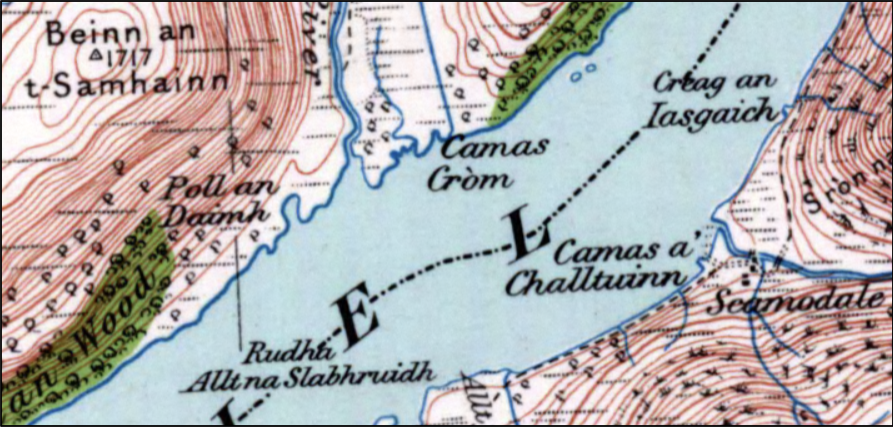
In Lowland Scotland there are numerous examples of Cowie and Cowden names, many of which are likely to have originated in a Gaelic reference to hazels. Watson was able to prove this in the case of Cowden near Comrie in Perthshire, which was Coldon in old documents and which Gaelic speakers in his day still referred to as A’ Challtainn ‘the hazel wood’.
Hazelnuts also have a special place in Gaelic folklore in both Scotland and Ireland, with a particular form being known as cnò an eòlais ‘the nut of knowledge’. It was by eating the flesh of a salmon that had itself consumed some of these special nuts, that Fionn mac Cumhail, the great legendary leader of the Fianna, achieved his superior knowledge. In one of the great legends of Skye, the warrior queen Sgàthach and her student Cù Chulainn fought some stupendous battles with neither coming out on top – until each of them, by taking a meal of roasted hazelnuts, acquired the wisdom to discontinue the conflict!
Yet, for all its vaunted power, in the language of flowers, Hazel signifies reconciliation and peace.
The Hazel tree has provided people with food to eat, flowers to heal, and wood to build for many centuries. This is true for the indigenous peoples of Europe as well as those indigenous to Turtle Island.
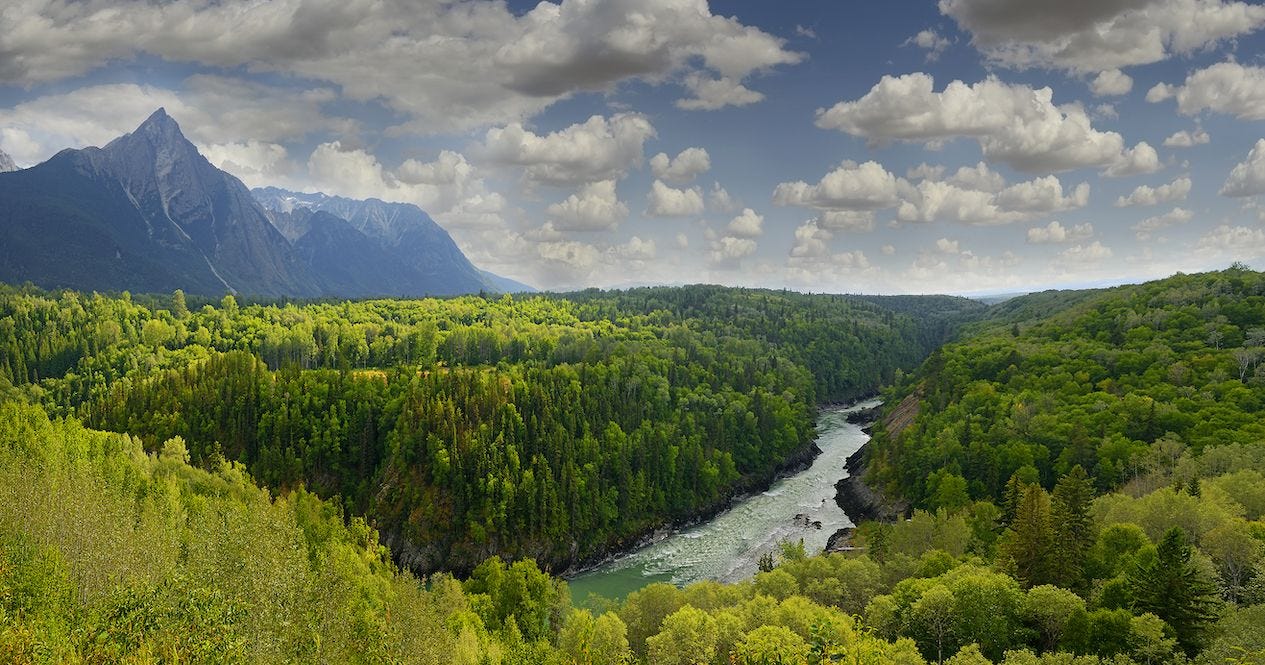
Scientists have now discovered 7000 thousand year old food forests in northern BC, Canada (yes that is right, seven thousand). These food production systems were designed, installed and tended reverently for centuries until their creators and stewards were forced to flee.
The hazelnut tree has long been a part of the landscape in parts of British Columbia. A 19th-century settler gave the village of Hazelton in northern B.C.'s Skeena region its name because of the abundance of hazelnuts in the area.
A new study published in the Proceedings of the National Academy of Science indicates Indigenous peoples in what is now B.C. had been cultivating the beaked hazelnut for thousands of years. According to study researchers, the findings "challenge settler colonial views about past Indigenous land-use practices."
The findings indicate hazelnuts had been transplanted and cultivated for at least 7,000 years by Gitxsan, Tsimshian, and Nisga'a peoples.
Study co-author Chelsey Geralda Armstrong, assistant professor of Indigenous studies at Simon Fraser University, says the research emphasizes Indigenous peoples' contributions to the creation and maintenance of the region's ecosystems and "cuts through assumptions of B.C. and the Northwest Coast being wild and completely untouched."
"We've known for a long time, and in fact, a lot of Indigenous communities know, that Indigenous stewardship practices helped shape plant species distributions and kept populations of salmon healthy, all of that," Geralda Armstrong said.
"So, our research is adding to that by challenging the dominant narrative, which is that, 'Oh yeah, this hazelnut is wild, and it's just growing here.'"
For the study, researchers sequenced the DNA of more than 200 hazelnuts and found five genetic subgroups, many of which could be traced to locations far apart from each other, indicating the nuts weren't distributed naturally through birds and squirrels but through concerted efforts by Indigenous peoples.
The study also highlights linguistic evidence, noting that the word for "hazelnut" used by the Gitxsan and Nisga'a in the northwest was borrowed from Coast Salish territories in the south, suggesting a trade in nuts.
Armstrong started collecting hazelnut leaf tissue samples from around the province a decade ago. Her findings were “so confounding” that it led her to dig deeper by examining linguistics and archeology associated with the food staple, she said.
The research could have big implications for Indigenous land claims, Armstrong added, by challenging existing narratives that First Nations lived passively on the landscape rather than actively tending it.
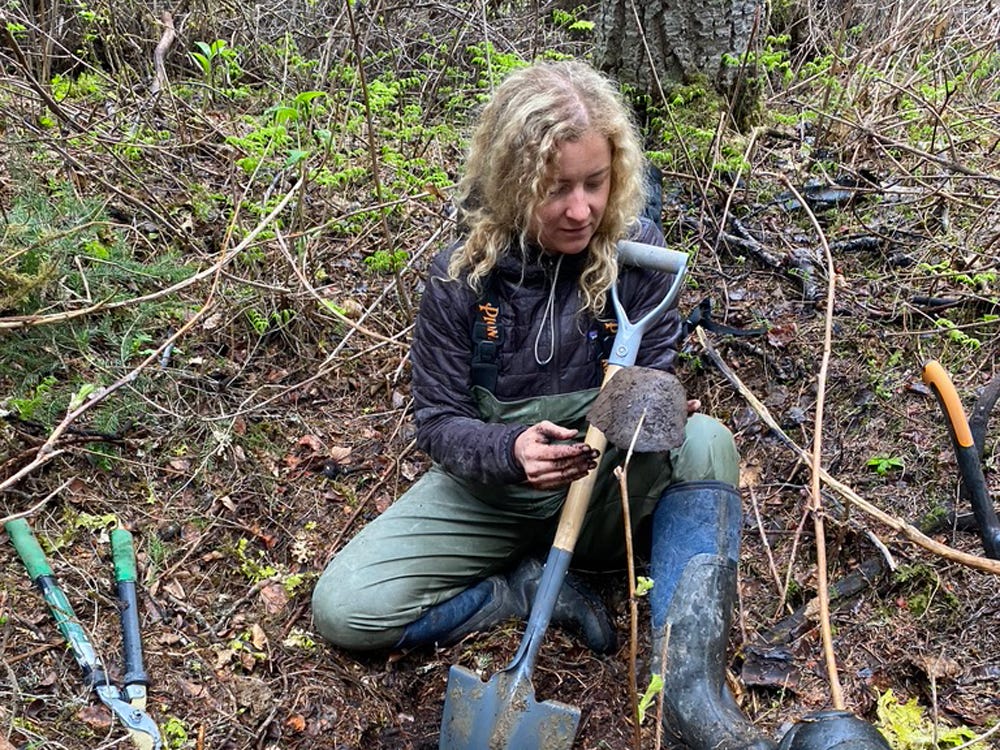
Her research reveals that the region’s early inhabitants moved hazelnuts long distances and managed the shrubby plants, creating and maintaining “large-scale ecosystems and sometimes entire watersheds through prescribed burning and forest clearing, transplanting [and] rock wall constructions” to foster perennial plant species.
The study examined three regions. On the south coast, it found just one genetic cluster of hazelnuts. In the Interior, there were two.
But most intriguing was the complexity in northwest B.C., where five distinct genetic hazelnut clusters are scattered around the area surrounding Temlaxam — a region that today includes the community of Hazelton.
Armstrong said the findings were the “opposite of what you’d expect” from plants in an isolated grouping, which would normally lack genetic diversity.
“The pattern here with increased genetic diversity... that’s huge unto itself,” she said. “When you drill down and you start to look at the ethnographic record, the archeological record, things start to come together in this really neat way.”
The same study that unearthed the 3,500-year-old landslide at Seeley Lake, about 10 kilometres west of Hazelton, also found that hazelnut pollen abruptly appeared at the location about 7,000 years ago.
The hazelnuts also overlap with ancient village sites, which form islands of distinct hazelnut groupings in the northwest.
The Kispiox Valley and Hazelton area had its own unique hazelnut, which continued a distance down the Skeena River before disappearing.
The next cluster appeared at Kitselas Canyon, a national historic site east of Terrace with a vast archeological record. To the west of Terrace, at the ancient Kitsumkalum village of Dałk Gyilakyaw, a distinct population exists that is not related to any other hazelnuts.
“It is exclusively associated with a village site,” Armstrong said. “Then, when you go up to the Nass, same thing — there’s nothing until you’re at Gitwinksihlkw.”
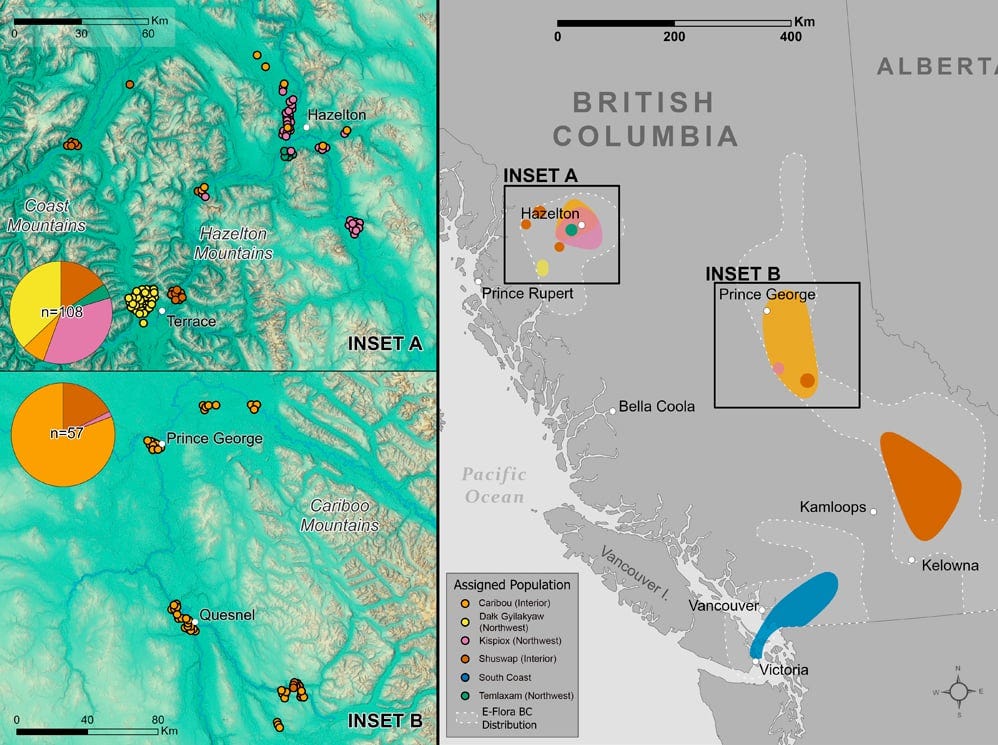
Hazelnuts travelled long distances
Hazelnuts from three large village sites — Gitwinksihlkw and Gitlaxt’aamiks in the Nass Valley and Kitselas Canyon east of Terrace — are all closely related to those in the Shuswap, roughly 700 kilometres to the southeast.
A linguistic review indicates it wasn’t only the hazelnuts that travelled those distances. The term for hazelnut also moved with them. The Gitxsan (sgan-ts’ek’ or sgan-ts’ak’) and Nisga’a (ts’ak’a or ts’inhlik) bear similarities with the Proto-Salish word for hazelnut, s-ts’ik’ or s-ts’ik.
Jacob Beaton, the executive director of the Indigenous Food Sovereignty Association and a member of the Ts’msyen Nation, grew up in the Hazelton area, surrounded by the proliferating nuts.
“I remember my mom, who’s First Nations, telling me when I was a kid, if I could pick a whole bucket of hazelnuts, that she’d make homemade Nutella,” he said. “Those stories exist everywhere here in the First Nations communities of picking and harvesting hazelnuts.”
While Beaton always knew about the nuts’ existence, he never understood why they were so populous in the area. But he always wondered. He said there was “massive resistance” in the scientific community to the idea that they were brought there by Indigenous Peoples.
Beaton, who wasn’t directly involved in Armstrong’s research, said he had previously seen research indicating that First Nations had tended forest gardens in the area for at least 800 years. He said he was “very, very surprised” by Armstrong’s findings because they date back thousands, instead of hundreds, of years.
“To have this hazelnut study come out and learn that it’s around 7,000 years that the First Nations brought hazelnuts and planted them here was insane,” he said, noting that it meant First Nations were growing food “before ancient Egyptians were planting their wheat fields.”
These indigenous people were cultivating these food forests (at the same latitude as where BC meets Alaska) before wheat farming began in Egypt. They did not only provide for the 7th generation, they are providing for the 300th generation. That is the potential of food forest design.
These food forests contain hazelnuts, wild cherry, elderberry, wild ginger, wild rice root, soapberry, thimbleberry, red huckleberry, crabapples, serviceberries, blueberries, cranberries, hawthorn, rhodiola rosea and medicinal herbs.
These food forests still persist and produce abundant (and nutrient dense) Free Food today.
That is a form of horticulture and social technology we should all be striving to learn from and apply locally.
The fact they could create such a resilient, stable and nutritionally diverse food production system that far north shows us how we are only limited by our imagination and pattern recognition skills with regards to food forest design.
We can do it using a range of different species to fill the relevant ecological niches in our bioregion and we can effectively boycott the corporate/statist hegemony through decentralizing our access to food and medicine, blending our gardens with forest ecology, sharing the abundance and planting the seeds for an emergent regenerative subculture/parallel society.
Erichsen-Brown notes in Medicinal and other uses of North American Plants: A Historical Survey with Special Reference to Eastern Indian Tribes the extensive uses of Hazelnut among Native Americans in North America. Archeological evidence demonstrates Hazelnuts at an Iroquan site and in caves in what is now Ohio in Pennsylvania; this evidence dates from 800-1400 AD that large amounts of nuts were consumed by the tribes living here. Hazelnuts were dried, ground up, made into meals and gravies, and used to create mush. The oil was also used for hair and mixed with bear grease by the Iroquois.
Medicinally, the Hurons used a bark poultice of the hazelnut tree for ulcers and tumors. The Chippewa used hazel and white oak roots combined with the inner bark of chokecherry and the heart of ironwood for hemorrhages or serious lung conditions. Similarly, the Ojibwa used the bark poultice on cuts.
The inner bark was used by the Chippewa (along with butternut or inner bark of white oak) as a dye for blankets, rushes, and more. A recipe given in Erichson-brown is to use the hulls from the nuts to set the black dye of butternut when boiled with tannic acid. The Chippewa and the Ojibwe also made drumsticks of hazel along with brooms and twig baskets. The bark was also used to expel worms, in a similar fashion to walnut. (source)
“The hazel tree has an unusual history. The last ice age forced the land to rest. Frost action, combined with the scouring of glaciers, pulled the riches of macro- nutrients from the surface of rocks. After the ice receded, the land was as fresh as a new pin. The low-growing hazel was perfectly suited to be the first crop of forest.
Scientists have taken core samples of the earth from periods just after the last ice age. These samples, every- where, are contaminated with a huge amount of pollen from hazel woods that seemed to drift in shoals on the surface of the soil. Some of it would have come from climatic stress on the trees that forced them to reproduce; the other factors for that first efflorescence of pollen are unknown. We are now witnessing releases as bountiful as they were at the end of the last ice age. Make of that what you will.
The Celts loved to eat hazelnuts. Indeed they were a favourite table treat for Celts from Ireland and all across their civilization into Turkey. They were also enjoyed further afield in China and Japan.
“Within European folklore the Hazelnut has been associated with fertility, wisdom, love, luck, birth, and regeneration. Blooming twice each year, the Hazel was seen as a sign of abundant fertility. The nuts were used for divination around love and marriages. And it was common to throw hazelnuts and carry hazel wands at weddings to ensure fertility for the new couple. Teutonic people associated the Hazle with Thor, the god of storms, lightning and the sky. The Hazelnut itself was believed to have the ability to avert as well as hold the life giving, fertilizing power within storms. And Germanic peoples placed the nuts on windowsills to avert lightning from the home.” - Earthen Venus: On Hazelnut love charms, Mandrake root amulets, Wild Women and Deer Goddesses by
One thing the Roman’s predecessors (the Greeks) apparently did get right is that they also associated the Hazelnut with fecundity and fertility.
Modern research confirms that Hazelnuts benefit reproductive health in both men and women.
Thus, after discovering this fact while researching for my Hazel article, I went back and updated my article on Fertility and Reproductive Health Enhancing whole foods and naturally occurring compounds with pertinent info on Hazel’s benefits in that realm (specific part of article updated linked here (screenshot shown below).
In one part of Albion, there were Celts that practised a sophisticated method of two-tier farming involving both hay and hazel. Hazel trees enjoy the stability of roots feeding undisturbed in a field of grass. A hedgerow of hazel protects the hay from blowdown. So both grew together to benefit each other-the better the hay crop, the larger the nutmeat. The hay was cut, dried and harvested first. The ripe hazelnuts were gathered immediately afterwards.
Hazel trees travelled with all of the old civilizations. The fresh bark of the hazel tree was removed by the Greeks and used to write on. The word passed along in language, today making an appearance in "protocol," from protokollen: the first sheet of papyrus roll from which a document of record is made.
Before the advent of drilling machines and drilling rigs with pounders or diamond bits, people depended on instinct alone to find water underground. Individuals who inherited this instinct for discovery were of great value to any community. The water for my well in Ontario was found by the local dowser (using a hazel fork) who also happened to be the water driller. After he estimated the greatest flow rate per minute and per hour, he drilled the well and the house went up over it.” - Diana Beresford-Kroeger from To Speak for the Trees
In Gaelic tradition, Hazel is one of the "nobles of the wood" (airig fedo), a classification of trees in pre-colonial Gaelic law that signifies their sacred importance and value as a being that teaches, provides nourishment and is protected against exploitation.'
Hazel trees often grow by water which has long been associated with intuition – dowsing rods are often made of hazel wood.
There is a story from the land of my ancestors on the Isle of Skye about hazelnuts.
(for a Gaelic reading of this story, go to this website)
“There was at one time a strong, powerful woman living on the island. Her name was Sgàthach. She was living in Dunscaith Castle in Sleat. She had a fighting school.
The school became internationally famous. The Ulster hero, Cuchullin, heard about it. He was renowned in Ireland. He was brave and strong.
Cuchullin went to Skye in three bounds. He was expecting Sgàthach to give him a warm welcome. But she didn’t. He wasn’t famous in Scotland like he was in Ireland.
Cuchullin was angry. He was fighting with the other students in the school. He defeated them. Then Sgàthach noticed him. She gave him permission to fight her daughter. After two days and a night, Cuchullin defeated her daughter.
Sgàthach herself came. She and Cuchullin fought for two days and a night. But neither of them was victorious.
Sgàthach’s daughter obtained deer milk. She made cheese with it. But neither her mother nor Cuchullin ate any of the cheese. The daughter sent out heroes to kill a deer. She roasted the meat. But neither Sgàthach nor Cuchullin ate any of it.
Then she sent out the heroes to hazel trees on the side of a mountain near Sligachan – Broc Bheinn. They brought back hazel nuts. The daughter roasted another deer. She stuffed the deer with roasted hazelnuts. Sgàthach and Cuchullin ate that.
Sgàthach hoped, with the knowledge from the nuts, that she would defeat Cuchullin. Cuchullin hoped, with the knowledge from the nuts, that he would defeat Sgàthach. But when the two of them ate the nuts, they gained the knowledge of peace. They pledged they would no longer fight each other. Perhaps we should all eat more hazelnuts!”
“Hazel in the Western Magical Traditions
While Hazel is a critically important tree in the mythology and magical tradition of Druidry and in Europe more broadly, The Hazel is one of the sacred trees identified by the druids as a tree tied to wisdom and the flow of Awen, and it is one of the sacred trees found in the Ogham. But here in North America, despite having our own native hazels (American Hazelnut and Beaked Hazelnut), we often turn our eyes towards Europe’s mythology and understandings. Thus, in this post, I’d like to share more about the American Hazelnut, and the ecology, uses, herbalism, magic, and myths of this most sacred tree.
In Celtic mythology, Hazel was an extremely important tree and tied directly to the mythology of the druid tradition. In Irish mythology in the Finnean cycle, it is written that the Hazel tree is the very first tree to come into creation and that all of the knowledge of the world was contained in the Hazel tree. The Salmon of Wisdom (An Bradán Feasa) lived in the Well of Wisdom (Tobar Segais) which was surrounded by nine sacred Hazel trees with their wisdom-containing nuts. The nuts of the trees dropped into the water and eaten by the Salmon. The first person to catch and eat the Salmon would gain this knowledge. While many tried and failed, Finnegas spent seven years fishing and finally caught it. Finnegas sets his apprentice, the young Deimne Maol, to prepare the fish but not to eat it. Deimne sets the fish upon a spit and begins to cook it. In the process of cooking when the fish is nearly prepared, Deimne burns his thumb and puts his thumb in his mouth to ease the pain–and, of course, acquires all of the knowledge from the Salmon of Wisdom. Deimne becomes Fionn mac Cumhaill (Fin McCool), the leader of the fabled Fianna and hero of many Irish tales. Those students of Welsh druidry will note the similarities between this story and the one describing how Gwion became Taliesin. In modern revival Druidry, the wisdom of the hazel and the Salmon of Wisdom in the sacred pool remains very important symbols of our tradition.
Greer notes in the Encyclopedia of Natural Magic that Hazel has been used by magicians extensively throughout the West. Hazel is best used for wands and various kinds of divination rods and sticks (including dowsing). Cut the hazel with a single stroke with a consecrated knife at sunrise on a Wednesday for the best effect. Hazelwood makes an excellent wand and transmits energy effectively. Greer also notes that the nuts are excellent for communing with Mercury or connecting with Mercurial energies. One area that I disagree with Greer about, however, is that he says that Witch Hazel (Hamamelis Virginiana) and American Hazel are interchangeable. In my own experience, while witch hazel became the traditional wood for dowsing rods, I do not believe these woods serve similar functions on the landscape, and thus, I have found them to have different magical qualities.
In Celtic Tree Mysteries, Steve Blamires notes that the wood was used for dowsers extensively in the British Isles. In the Ogham, hazel is noted as the “fairest of the trees” and is tied to the flow of Awen, divine inspiration, particularly for the crafting of poetry. The other thing Blamires notes, which I have not been able to find an original source for, is that there is a ritual by the druids called “Diechetel Do Chenaid” where chewing hazelnuts were used for inspiration or to learn of something lost. Finally, Hazel wands (probably due to their Mercurial connections) were used as a symbol for a herald.” - Dana O'Driscoll (from her post titled Sacred Trees in the Americas: American Hazel (Corylus americana) Magic, Ecology, and Sacred Uses)
(Perhaps the ritual of the Druids called “Diechetel Do Chenaid” where chewing hazelnuts were used for inspiration or to learn of something lost that Dana mentioned above can be explained (at least in part) from a modern neuroscience perspective via accounting for Hazelnuts cognitive function enhancing health benefits?)
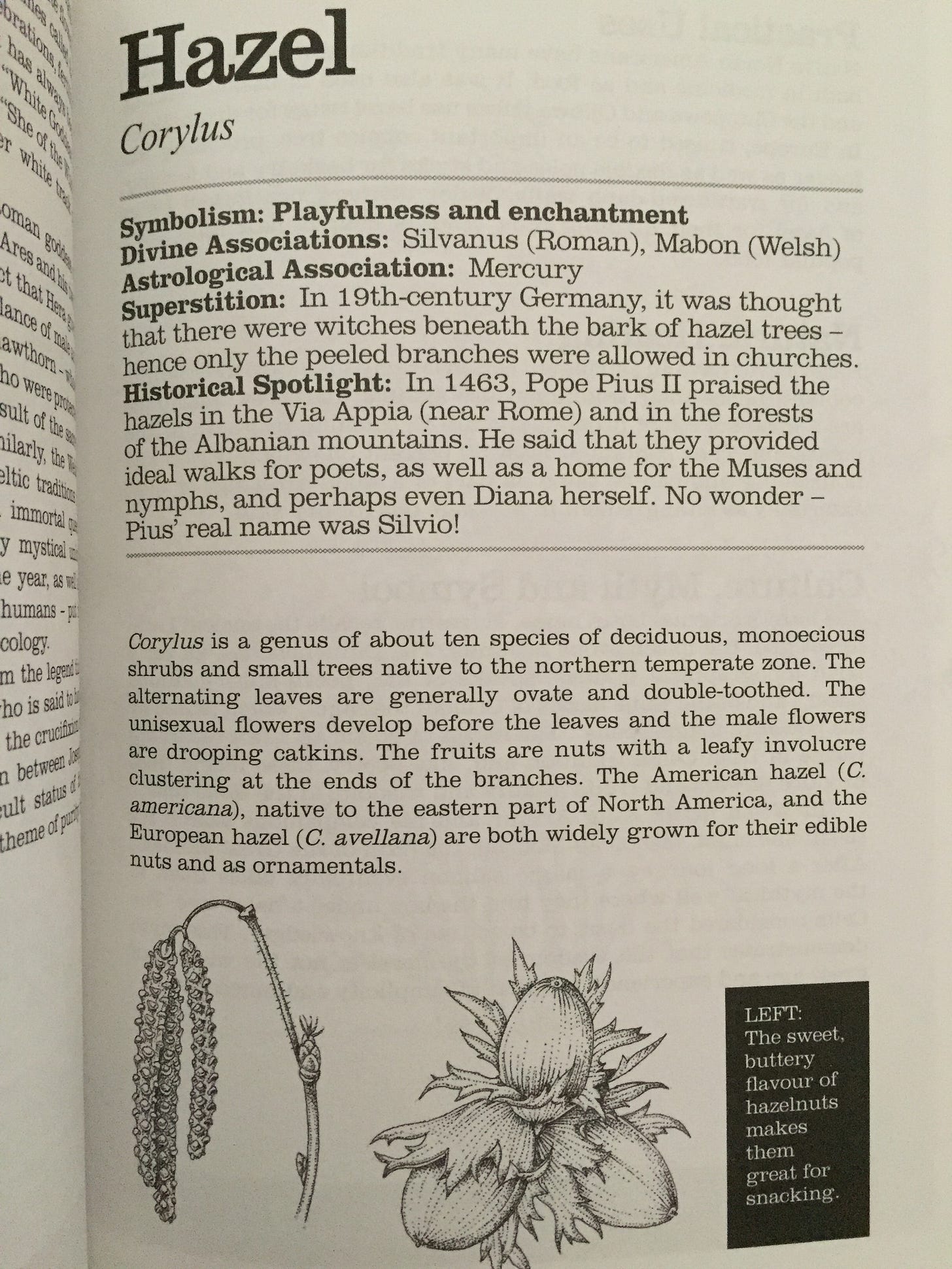
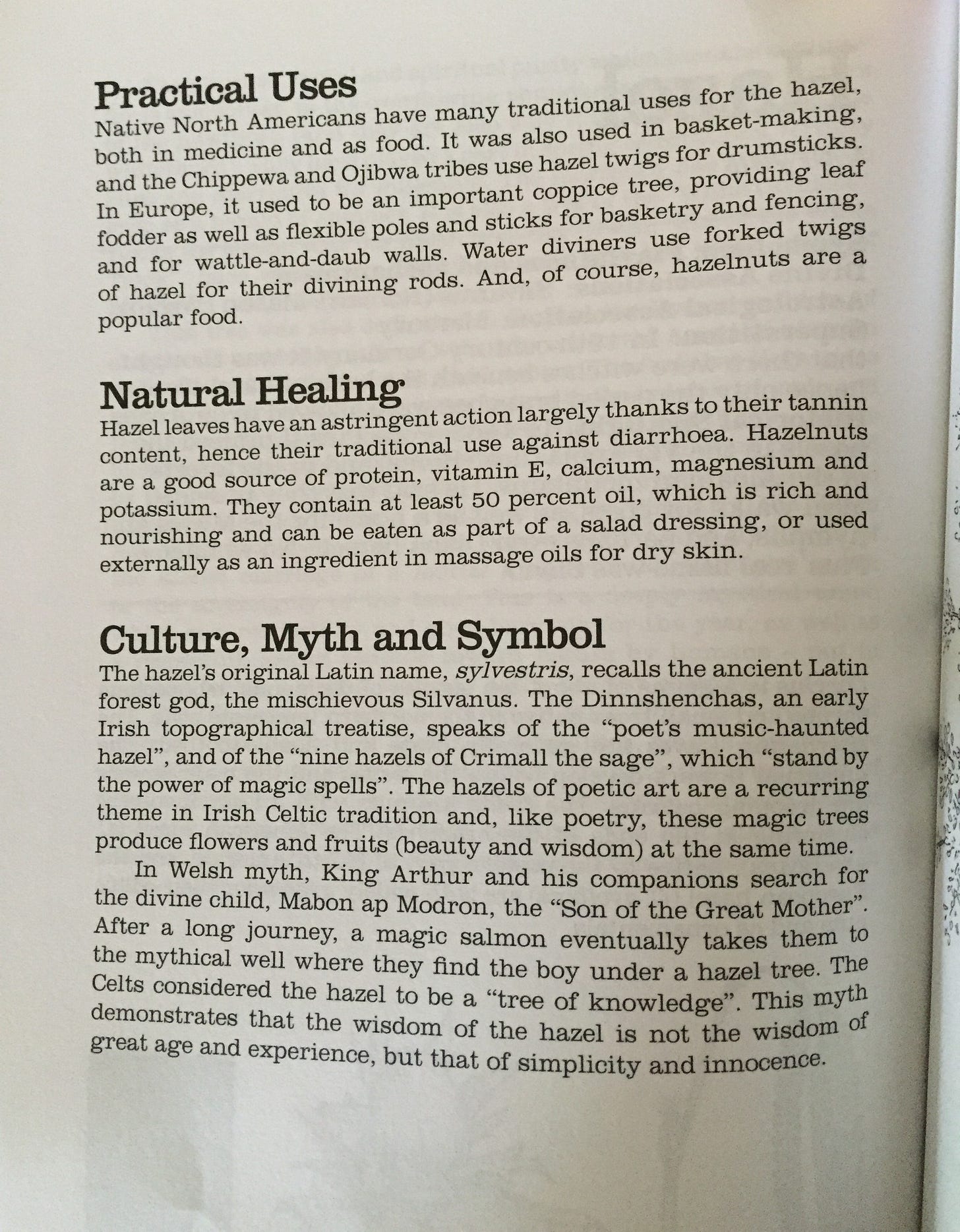
“The most prolific legends concerning hazel come from Ireland and we look to that Emerald Isle for the greatest understanding of the tree. In Keating's History of Ireland we are told of a king named Mac Coll, meaning 'Son of Hazel', who was one of the three earliest rulers in Ireland. Mac Coll was one of the last of the kings of the Tuatha de Danaan. The hazel tree from which he took his name and power was specifically associated with wisdom. In the Triads of Ireland it is recorded that Coll (hazel) and Quert (apple) were the only two sacred trees whose wanton felling carried the death penalty. In the Dinnsbenchas, an early topographical treatise of Ireland, the hazel and apple are associated with oak, for the burst it. The Great Tree of Mugna is recorded as containing within itself the virtues of apple, hazel and oak.
Ireland was a land of trees in the time of Saint Patrick arriving.
Below is a verse from an Druidic poem which described the pre-colonial landscape of Ireland aka Éire (which means Abundant Land).
Look at the line in the ancient poem in the pic this video (also linked below) where a Druid is describing the lands of Ireland.
“Her forests that shed showers of nuts and all other fruit”
I have no doubt that Ireland once had beautiful food forests tended by the wise Druids and Gaelic folk that revered their "Nobles Of The Wood".
St. Patrick and his fellow Roman imperialists, weaponized the Christian belief system to be a tool for ethnic cleansing, deforestation and cultural genocide.
The video linked below shows footage of the last remnant of ancient oak, hazel, pine, beech, rowan and apple forests in Ireland (Tomnafinnoge Woods). That type of forest would have covered over 70% of the island prior to the arrival of the Roman Imperialists (such as St. Patrick, his disciples and their successors, that gave orders to cut down all the sacred groves and forested placed where Druids gathered).
The Roman Imperialists managed to destroy a good amount of the forests, but substantial amounts remained up until the arrival of the subsequent waves of the imperialist colonial forces of the Anglo-Saxons, Norman invasion and British Crown (the British Statists were the ones that really finished the job of decimating the Irish Hazel/Oak and apple food Forests).
Even as late as 1634, these woods were estimated to cover tens of thousands of acres, but from then on they were heavily exploited especially for British Navy shipbuilding.
In 1670, the woods were reported to be still extensive, “being nine or ten miles in length'“ and a valuation in 1671 found a total of 3905 acres (1579 hectares) of woodland there.
The forest is now 160 acres in size.
Most people think of Ireland and Scotland and think of endless rolling sheep pastures, but this only serves to show us how powerful generational amnesia and the shifting baseline syndrome can be in shaping prevailing perspectives.
There were no doubt food forests all over, and the groves that were sacred like the forests of Brocéliande and Caledon and others that were consecrated by pre-colonial Gaelic priests like the land in Wales dedicated to St Bueno.
Tomnafinnoge Woods (Ireland's Last Remnant of intact Oak/Apple/Hazel forest):
(For more on the progress of so called “civilization” read this)
Man's ancient use of the combinations of different trees, mixing their energies and qualities in order to obtain specific results, is shown in many excavations, especially those of burial mounds. From such a mound in Tresse, Brittany, charcoal of willow, hazel and oak was recovered in quantities enough to suggest that they had constituted the funerary pyre. One possible theory of their use is that they brought the qualities of enchantment, wisdom and royalty (respectively) to the funerary proceedings. In which case the Great Tree of Mugna may well have represented beauty, wisdom and strength.
Also recorded in the Irish treatise is a description of Connla's Well: a beautiful fountain, over which nine hazels of poetic art produced flowers and fruit [beauty and wisdom] simultaneously'. And we are told that as the nuts dropped from the trees into the water, so the salmon which lived in the well ate them, and whatever number of nuts the salmon swallowed, that many bright spots appeared on its body.
Other druidic legends concerning Connla's Well describe it as being under the sea and the source of the River Shannon, and tell us of the salmon of wisdom. This father of all salmon, when first going to the sea, was drawn to the magical well and his journeyings thence instilled in all future salmon their migratory genes. On reaching the well the salmon was given the great gift of wisdom by the well's guardians, for each of the nine hazel trees dropped a sacred hazelnut into the water. On swallowing these nuts the salmon became the recipient of all knowledge.
For another version of this story read:
The sacred hazelnut was so highly esteemed that it was called the food of the gods. That people desired to eat it, together with its mythical recipient the sacred salmon, is also apparent from old lore. Druidic land legend tells of Fionn, a pupil of a chief druid who lived on the River The haz Boyne. The druid master intended to eat the salmon of knowledge which he had caught in a deep pool, for its flesh, it was said, 'would make him conscious of everything that was happening in Ireland'. Young Fionn was ton fell told to cook the salmon for his master, but not to taste it. Yet while he pographic cooked the fish a blister appeared on its side and Fionn used his thumb to Dak, fort burst it. Having burnt his thumb, he automatically put it into his mouth for relief. Thus it was Fionn who received the salmon's gift of farsight, 'seeing all that was happening in the High Courts of Tara'. This story has a Welsh equivalent in the legend of Cerridwen and Gwion.
In Scottish legend there was a pair of mystical fishes which were regarded as the presiding spirits of a similar sacred well and its hazel tree guardians. These fish were holy and to kill or eat them was a grievous crime punishable by the gods themselves.
The atmosphere around a hazel tree is easily recognizable, for it is quick-moving and mercurial, like silvery fish. In south-west Britain country people say that 'silver snakes' surround the hazel's roots, which illustrates the swiftness of its energies. To understand this energy better we can look at the associations of hazel and the god Mercury, for the hazel- nut was especially sacred to him and is still held to be under the influence of the planet Mercury.
Mercury, or Mercurius, is often given the same attributes as the Greek god Hermes, and they both have three extra articles which aid their speed, namely a travelling hat, a staff and a pair of sandals. The hat has a broad rim, which is often replaced by wings, and the sandals, which carry the god across land or sea with the rapidity of the wind, also provide wings at his ankles. The staff is sometimes depicted with two ribbons attached to it, which show the speed of travel as they flow through the air. Often these ribbons form into snakes intertwining along and it becomes the staff, becoming the caduceus symbol of the healing arts used by heal. ers and physicians to this day. Mercurius and Hermes were heralds of the gods, and they gave the qualities of eloquence, heraldry, inventiveness and cunning to the lives of men. They taught the arts of cultivation and hazel and flying, and were regarded as gods of the roads who offered protection to travellers.
Thus the spirit of the hazel is strongly aligned to speed through the families an air as well as through water, and in its legendary links with the sacred much with the salmon we see possibly the birth of both these elemental associations, for salmon swim exceedingly fast in water and then leave the waters in mighty leaps, appearing to fly through the air.
The shoots and twigs of hazel have the power to show where water is flowing underground and have been used throughout time for dowsing. Cornish people still use hazel to dowse for mineral veins as well as for water, though they stress that they do not have success without help from the piskies (Cornish faeries). Before the seventeenth century hazel rods were used to discover the whereabouts of thieves, murderers and treasure, and in France they were used for beating the bounds, i.e., boundaries of a community, so they did not fall into neglect.
In Wales supple hazel twigs were woven into 'wishing-caps' which granted the desire of the wearer. Hazel hats were also used by sailors when they had to weather hard storms at sea, for it was believed that they gained magical protection from them. Pilgrims' staffs were made food for co from hazel and so attached did the owners become to them that they were buried alongside them after death.
In ancient days hazel was plentiful in Scotland, for the name Caledonia comes from Cal Dun, which means 'Hill of Hazel'. Also possibly born in that land was the Hallowe'en hazelnuts with the names of lovers and placing them in the hot embers of a fire. If the nuts burn quietly side by side the lovers are faithful, but if one nut moves away the relationship is seen as ill-fated as one of the lovers is faithless. Aengus, the Celtic god of love, carried a hazel wand.
In Anglo-Saxon England swineherds used 'haesel' rods to control their animals, and it is thought that the name passed from the rod to the tree and it became known as hazel, rather than Cal or Coll. Haslemere in Surrey is a very evocative place-name, linking both basle, 'hazel', and mere, 'a pool' or 'the sea'. This implies a connection between hazel and the creatures of the deep sea, which emphasizes the Druidic associations of hazel and the salmon. No doubt Haslemere was named for its inspira- tional atmosphere, for many well known artists and poets have chosen to live and work there. The area also has strong associations with musical families and great recitals were played on antique instruments much the creative hazel energy, fully captured in an ancient place-name.” - from Tree Wisdom: The definitive guidebook to the myth, folklore and healing power of Trees By Jacqueline Memory Paterson
Ancient Celtic deities which represent the qualities of Coll are Mannanan Mac Lir and Brighid, ‘goddess of inspiration’.
The Gael equated hazelnuts with concentrated wisdom and poetic inspiration, as is suggested by the similarity between the Gaelic word for these nuts, cno, and the word for wisdom, cnocach.
There are several variations on an ancient tale that nine hazel trees grew around a sacred pool, dropping nuts into the water to be eaten by some salmon (a fish revered by Druids) which thereby absorbed the wisdom. The number of bright spots on the salmon were said to indicate how many nuts they had eaten.
The nine hazels that hang over the well represent wisdom, inspiration, and poetry. The trees put forth leaves, flowers, and nuts simultaneously, which fall into the water to be eaten by the salmon of wisdom who swim in the well. For every nut a salmon eats, it develops a spot (possibly a reference to a lost series of initiations or poetic grades) and any person who eats one of these magical salmon will become wise. The waters of the well develop bubbles of inspiration from the dropping of the nuts that flow out to be drunk by all people of arts (áes dána).
In rivers there is a mysterious reverse current, which salmon utilize in their ascent of waterfalls and rapids. The salmon of wisdom who venture out into the great sea of life unerringly return to the Source, an inspiring feat for any seeker of wisdom. This process is related to the Druidic art of going within to find the answer to a problem.16
The tenth-century encyclopedia of Irish oral tradition, Sanas Cormac (Cormac's Glossary), refers to caill crinmón, "the hazels of scientific composition," from which a new composition breaks out. Hazel symbolizes the hard work of attaining knowledge through breaking the hard shell to get at the sweet meat inside.
Ancient Druids and early Irish bishops carried hazel wands.
The hero Finn mac Cumhaill gained his prophetic powers wisdom by eating a salmon of wisdom that had fed on the hazelnuts that dropped into the Well of Segais. This happened when Finn was a young apprentice.
In an Irish variation of this legend, one salmon was the recipient of all these magical nuts. A Druid master, in his bid to become all-knowing, caught the salmon and instructed his pupil to cook the fish but not to eat any of it. However in the process, hot juice from the cooking fish spattered onto the apprentice’s thumb, which he instinctively thrust into his mouth to cool, thereby imbibing the fish’s wisdom. This lad was called Fionn Mac Cumhail and went on to become one of the most heroic leaders in Irish mythology.
The Gaelic word for hazel is Coll. It appears frequently in placenames in the west of Scotland, such as the Isle of Coll and Bar Calltuin in Appin, both in Argyll-shire where the tree and its eponymous placenames are the most common. It also appears in the name of Clan Colquhoun whose clan badge is the hazel. The English name for the tree and its nut is derived from the Anglo-Saxon haesel knut, haesel meaning cap or hat, thus referring to the cap of leaves on the nut on the tree.
Hazel trees frequently grow as a clump of slender trunks, and when they do adopt a one-trunk-and-canopy tree shape, they readily respond to coppicing, a practice which can actually extend and even double the lifespan of a hazel. Either way, people have put the young shoots or whips and the thin trunks to a variety of uses.
Hazel has long been a favourite wood from which to make staffs, whether for ritual Druidic use, for medieval self defence, as staffs favoured by pilgrims, or to make shepherds crooks and everyday walking sticks. In the case of the latter two, the pliancy of the hazel’s wood was used to bend the stems into the required shape, though it was also customary to bend the hazel shoots when still on the tree to ‘grow’ the bend into a crook or walking stick. The wood readily splits lengthways and bends easily, even right back on itself, which makes it ideal for weaving wattle hurdles for use as fencing or as medieval house walls when daubed with mud and lime. Hazel stakes bent to a U-shape were also used to hold down thatch on roofs. Like willow, young coppiced hazel shoots were used to weave a variety of baskets and other containers. Forked twigs of hazel were also favoured by diviners, especially for finding water. Hazel leaves are usually the earliest native ones to appear in spring and often the last to fall in autumn, and were fed to cattle as fodder. There was also a belief that they could increase a cow’s milk yield.
In days gone by hazelnuts would have provided a plentiful and easily stored source of protein, and they were often ground up and mixed with flour to be made into nourishing breads. Cultivated hazelnuts called filberts take their name from St Philibert’s Day on 20 August, the date by which hazelnuts were supposed to start ripening. Holy Cross Day on 14 September was traditionally given as a school holiday for children to go nutting, a custom which persisted in England until the First World War. Various places celebrated Nutcrack Night sometime during November, when the stored nuts were opened, though apparently some parishioners were in the habit of taking hazelnuts to church on the following Sunday to be cracked noisily during the sermon. Today hazelnuts continue to be eaten, though more frequently in luxury foods such as chocolate and as hazelnut butter, and as a Christmas delicacy. Woodland crafts using hazel are also enjoying a resurgence, and hazel wattle hurdles have even been used as sound screens along motorways.
“And fill all fruit with
ripeness to the core;
To swell the gourd,
and plump the hazel shells
With a sweet kernel”
From ‘To Autumn’ by John Keats
In the ancient Ogham script and the Gaelic tree alphabet, the letter "C" is represented by Coll — the hazel tree.
The Word Oghams connected to this tree are as follows. In the Word Ogham of Morainn mic Moin, hazel is cainiu fedaib, ithcar cnocar, and caincar fid-"beautiful tree, edible nut, fairest tree." In the Word Ogham of Mic ind Oic: carae bloesc, "friend of cracking"; and milsem fedo, "sweetest tree" from Briatharogam Con Culainn.
Hazel trees hold deep significance in Celtic tradition, symbolising wisdom, creativity, and knowledge. In mythology, the Nine Hazel Trees of Wisdom stood around a sacred well, dropping nuts into the water, which were eaten by the Salmon of Knowledge. Anyone who ate the salmon gained great wisdom — a legend closely tied to Fionn MacCumhaill in Gaelic folklore.
Hazel wood was also prized for divination and protection, with druids using hazel wands for mystical practices. Even today, the tree is associated with inspiration and learning.
Functions In The Wilderness and in the Food Forest:
The American Hazelnut plays a vital role in supporting local ecosystems and providing habitat for wildlife. Its dense foliage and spreading habit offer shelter and nesting sites for birds and small mammals, while its nuts provide a valuable food source for a variety of wildlife species.
Because American hazelnuts are wind pollinated, they don’t produce any nectar. However, bees will sometimes gather the abundant pollen from the male flowers, even though they do not play a role in pollinating American hazelnuts. The foliage is also eaten by several different species of moth caterpillars. Those caterpillars and / or the moths they become provide food for songbirds, bats, parasitoid wasps, and many other types of wildlife.
Fertilized female flowers produce hazelnuts. Our native hazelnuts are smaller and sweeter than the exotic species cultivated for commercial sales. The hazelnuts can be eaten raw, cooked, or ground into flour and used for baking. Historically, Native Americans would use hazelnuts to flavor soups. Hazelnuts are high in protein and very nutritious. They are also a valuable food source for many different types of wildlife including deer, turkeys, squirrels, woodpeckers, quail, grouse, blue jays, and many others
Hazels prefer full sunlight but will tolerate deep shade, nut production will be reduced proportionately to light reduction. Most species prefer a medium soil moisture, and a neutral soil. Hazel trees are one of the few trees (along with Pawpaw trees) that can tolerate juglone, which is a natural ‘herbicide’ produced by black walnuts… Hazelnuts could effectively be used as a buffer between walnut trees and the garden, hazelnuts in general create a good dividing line between the garden and the wild area.
Hazelnuts typically produce after 3 or 4 years, their heavy nut producing life is typically 50 - 70 years (though they can live for centuries if coppiced).
Ecological Functions:
Hazel leaves provide food for the caterpillars of moths, including the large emerald, small white wave, barred umber and nut-tree tussock. In managed woodland where hazel is coppiced, the open, wildflower-rich habitat supports species of butterfly, particularly fritillaries. Coppiced hazel also provides shelter for ground-nesting birds, such as the nightingale, nightjar, yellowhammer and willow warbler.
However, note that coppice management of hazel is not recommended in all contexts. Important habitats with unique, disturbance-sensitive bryophytes and lichens such as the ancient Atlantic hazel woods of Scotland's rainforest zone could be damaged by the introduction of a coppicing regime. Specialist management advice should be sought for this type of hazel woodland.
Hazel has long been associated with the dormouse (also known as the hazel dormouse). Not only are hazelnuts eaten by dormice to fatten up for hibernation, but in spring the leaves are a good source of caterpillars, which dormice also eat.
Hazelnuts are also eaten by woodpeckers, nuthatches, tits, wood pigeons, jays and small mammals. Hazel flowers provide early pollen as a food for bees. However, bees find it difficult to collect and can only gather it in small loads. This is because the pollen of wind-pollinated hazel is not sticky and each grain actually repels against another.
The trunks are often covered in mosses, liverworts and lichens, and the fiery milkcap fungus grows in the soil beneath.
Hazel Guild Profiles:
I love to grow these along side Pawpaw and Hickory trees in my designs.
Some of my other favored companions for the hazelnuts are plants that are Nitrogen-fixing or plants that attract pollinators and improve the soil around them. These plants include comfrey, Primrose, coriander, asparagus, wild garlic, currants, and various bulbs.
As noted above, in some areas of northern Europe and what is now called “Canada” various types of Hazel were cultivated by indigenous people in pre-colonial regenerative horticultural practices along side other resilient and medicinal crops such as Golden Root (Rhodiola Rosea and Rhodiola integrifolia). Thus, for those creating food forests and regenerative gardens in the north, hazel can be added to that pairing with the addition of other long lived northern food forest crops that produce highly nutritious food and medicine (such as Pinus cembra ssp. sibirica or pinus koraensis). Other cold hardy and medicinally potent species such as Schisandra chinensis can be grown to climb up taller members of a hazel guild (such as Hickory, Wild Apple, Birch, Pine, or Oak depending on how far north) and the hazel could grow and produce in the part shade below (stacking a great many functions with a relatively small amount of space).
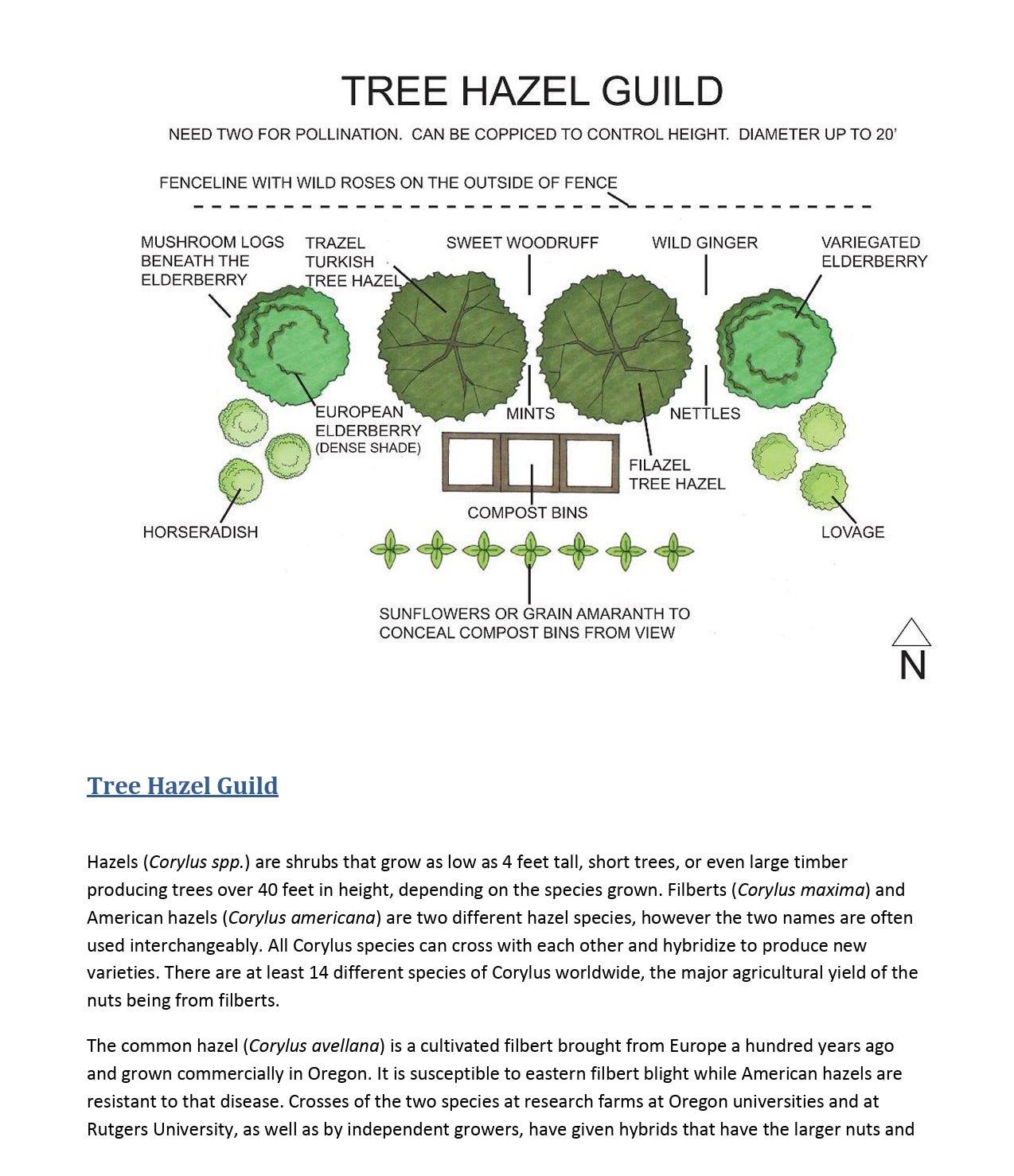
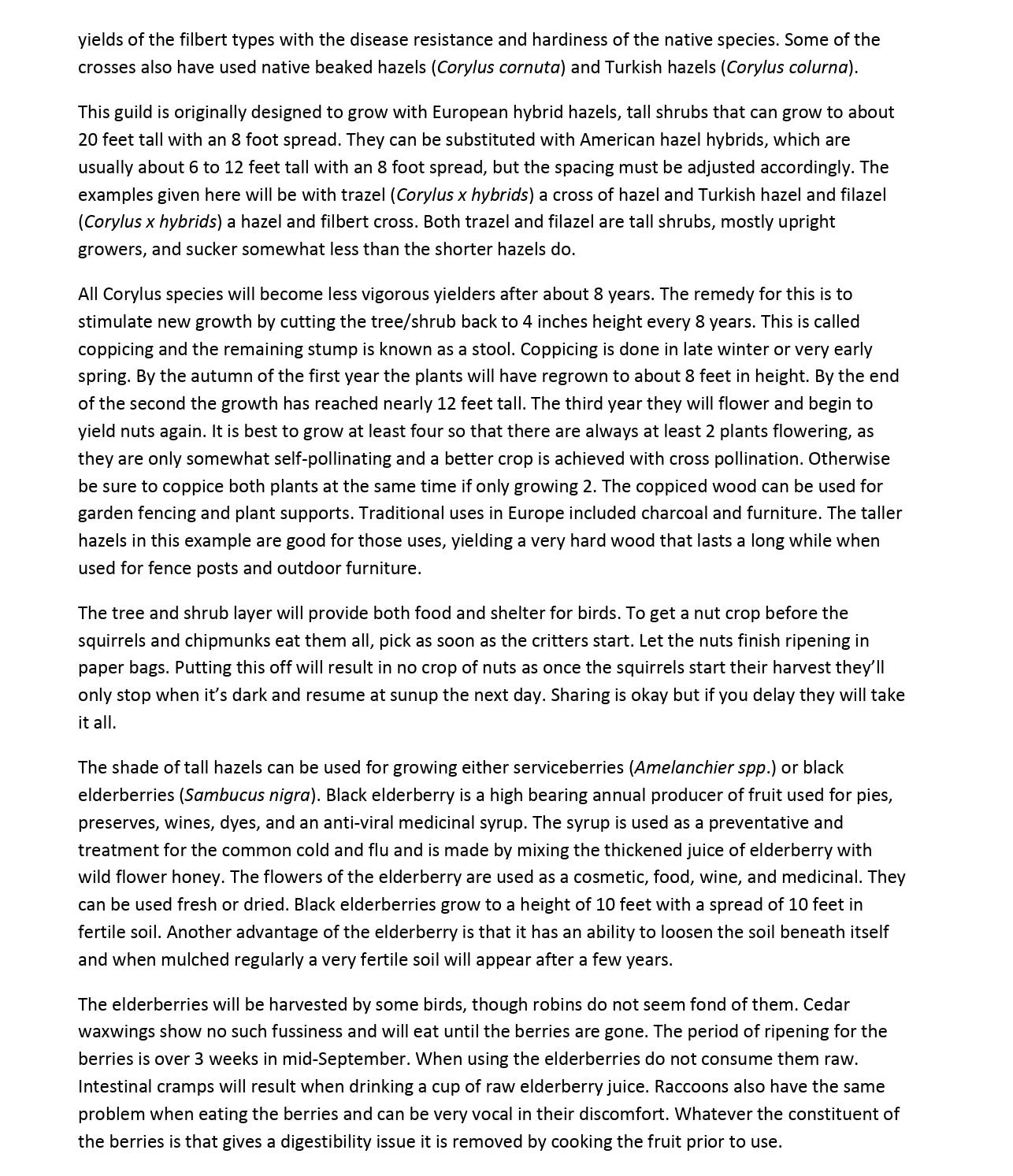
Hazels can also work well in Shade Ecosystems or Hedgerows/Windbreaks.
Many plants will get scorched in full or even part sun. Edibles such as mesclun, leafy greens, and tender understory herbs need shady areas. You can grow salad greens and valuable herbs such as ginseng or goldenseal in your shady spots.
In the Northeast, there are many native plants that need shade, so a native plant guild is one way to utilize the space. Several of these plants are medicinal, including American ginseng, goldenseal, blue cohosh, black cohosh, sassafras, witch hazel, and hawthorn.
For food production, lettuces and greens (such as kale, chard, kohlrabi) prefer cooler, less sunny areas. Mix those with some mushroom logs and you have a fairly diverse edible landscape in your shady spot.
There are also shade-loving or tolerant fruit trees and bushes, for example, paw paw, black currant, mulberry, and black raspberry. Here is an example of a shade-tolerant guild that you can use if you have the space:
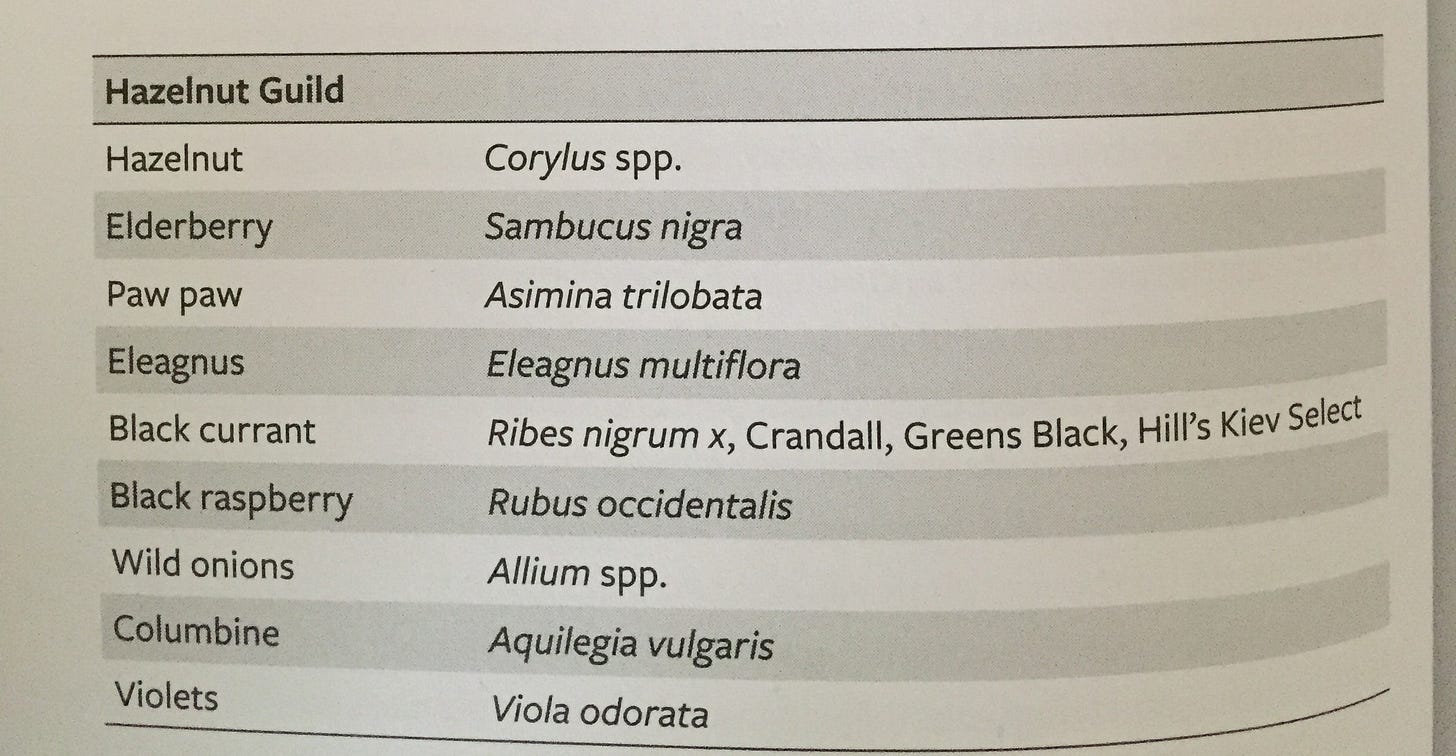
Tree Lines, Hedgerows, and Windbreaks
A tree line is a row of trees that springs up, is planted, or is allowed to grow between fields or along property lines. A hedgerow traditionally is a spe- cific type of tended tree line. Common in Britain and Europe, hedgerow design and management is a centuries-old art form. A windbreak, or shelter- belt, is a hedgerow or tree line strategically placed to moderate the climate downwind.
Tree lines can naturally spring up along fence rows and between fields where the soil is undisturbed and the land is not mowed. Over time, as trees mature the diversity increases. Native plants take root, trees mature, and shrubs fill the understory. As the shade increases the shrub layer expands towards the open edges and understory plants and vines take root.
Hedgerows tend to be planted densely and pruned to provide a definite barrier. The term implies moderate tree heights, often under 25 feet tall. In England, hedgerows have traditionally been created by planting hawthorn (Crateagus spp) and/or blackthorn (Prunus spinosa) saplings in a close spacing and weaving the thorn trees together with hazel rods to form a dense barrier. This weaving process is known as pleating.
These hedgerows and similar but unwoven hedgerows are also planted with other useful fruits, herbs, forage plants, medicinal plants, and wild seeds are carried in by the wind, birds, or animals. edibles. Over time a hedgerow naturally tends to become more diverse as the seeds are gifted by winged beings.
The traditional English woven hedgerow may be a bit sophisticated for the average food forest planting. Part of the hedgerow concept is that it serves as a living fence to keep livestock enclosed. A hedgerow may also have an earthen mound, or stone-wall base to help contain livestock. So if livestock control is your aim, it might pay to more closely study the ancient art of weaving trees together into a living fence. But a dense planting of useful trees, shrubs, and other perennials can serve well as a hedgerow. The spacing density of a hedgerow does not allow each tree or shrub to attain full growth and will reduce the yield of each individual plant. Still a diverse hedgerow can provide a high yield of mixed harvests, while functioning to moderate climate extremes and provide fencing.
In comparison, the term "hedge" in Canada and the United States usually refers to a single species planted and pruned heavily and maintained as a border or landscape feature. For the sake of clarity, I refer to hedgerows here as a more diverse planting that is not pruned intensively.
Windbreaks are designed to slow the wind but let some pass through. Allowing some wind to pass through prevents wind resistance, which could damage the trees, and prevents turbulent air flows on either side of the wind- break. The windbreak should have multiple layers, widespread canopies, and full understory to avoid gaps. When space allows, a windbreak can have a central row of taller and shorter trees and shrubs on one or both sides. A windbreak will modify the air speed anywhere from five to ten times its height. That is, a 30-foot-tall windbreak will slow the wind for somewhere between 150 feet to 300 feet downwind. The effect would be strongest within the first 50 feet downwind. Windbreaks help moderate the climate. Slowing the wind will help keep soil and plants from excess drying and will lessen airborne erosion and wind chill. Lowering wind chill can help protect plants from extreme weather and will reduce heat loss from buildings.
Hedgerows and tree lines are perfect for food forest design. If you have an existing tree line with minimal understory, you can easily begin to add useful plantings between and around the trees. The existing trees will give clues to possible guild combinations. The size and natural form of existing trees will help plan the layout to maximize productive potential. If your goals are to create a closed canopy to grow shade-loving forest plants and mush- room inside plant you will want to create a denser canopy.
The ideal tree line runs east to west. With this orientation you will get a side in full sun most of the day. Sun-loving plants would be on the south side. Shade-tolerant plants go between the larger trees and to the north of the existing trees. If the tree line tends to run north to south, you can add sun-loving plants on either side and use the understory for shade-tolerant species, with each side getting at least half a day of full sun.
When establishing a new tree line where none exists, you will need to plan more for succession over time. The larger trees should be placed at a reasonable distance apart for full growth and a succession of plants can be planted between or underneath. Trees can be placed to allow for the spacing desired. A well-designed tree line has width as well as height, if space allows. The higher trees form the central line and smaller trees are planted on either side. As trees develop, a succession of crops can be grown between the young trees. Small fruits such as raspberries make a good transitional crop. Soil building understory should also be included in the early years of tree line development. As the trees mature and the canopy spreads, the understory can be planted with a more diverse mix of food forest crops.
Both tree lines and hedgerows can greatly enhance biodiversity. They offer birds nesting sites and food. They provide shelter and food for a wide range of insects, spiders, reptiles, and small mammals. They also can harbor so called “pests”, such as groundhogs and squirrels, and their predators-fox, hawks, and snakes. Essentially, the more diverse the plantings are the more diversity the landscape will have.

Here is an example of a fruit tree guild that includes Hazelnuts:
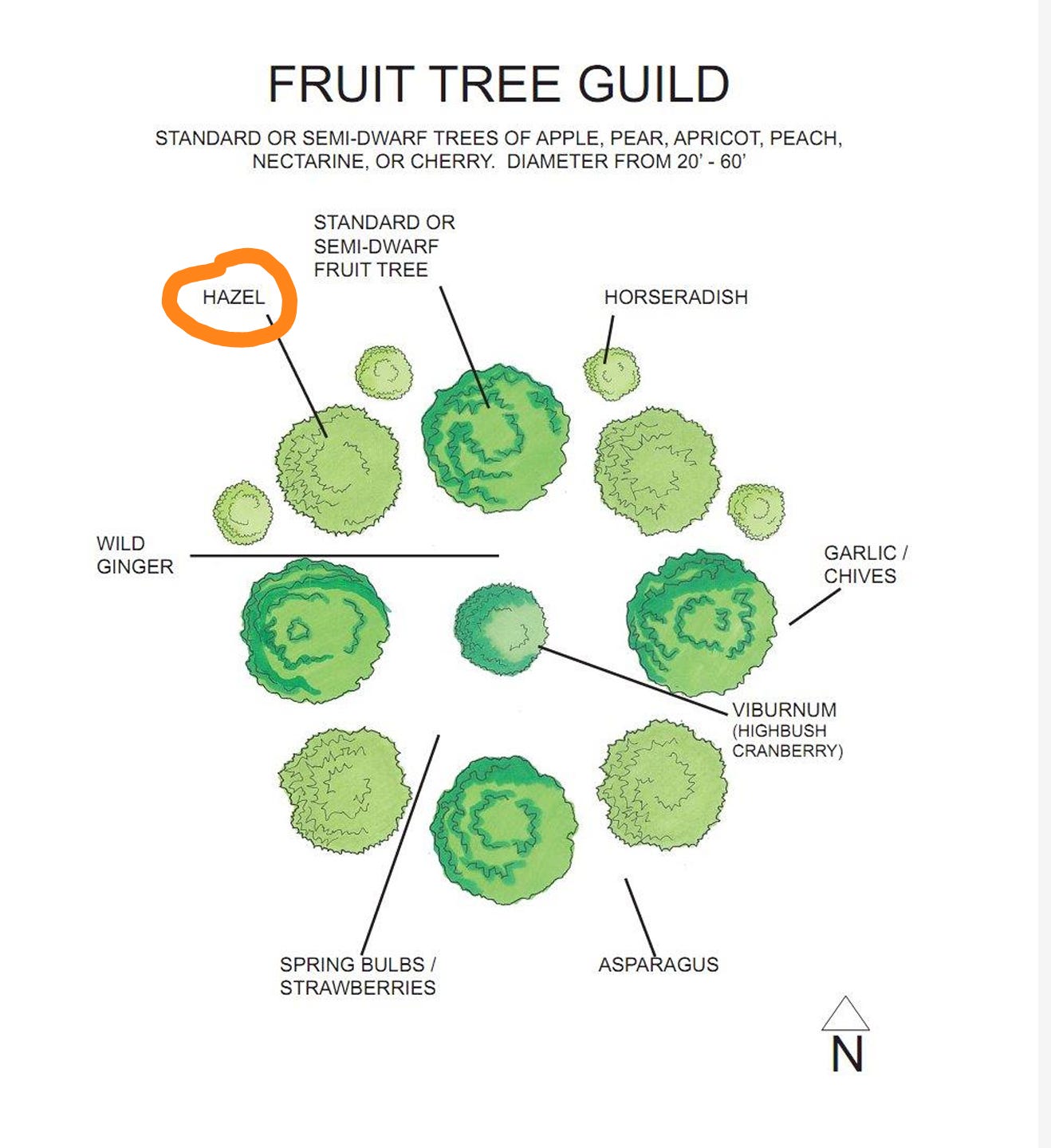
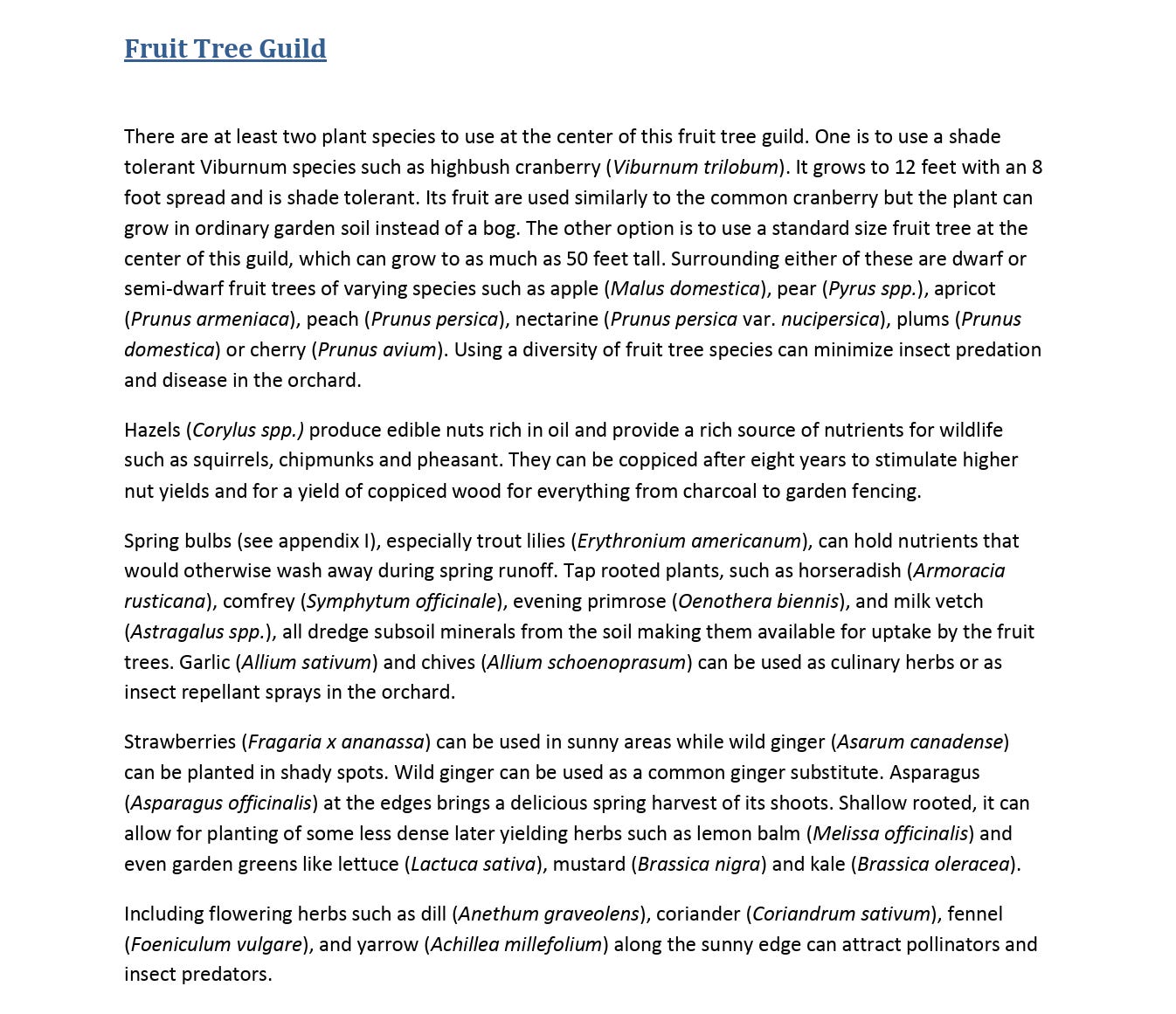
Here is an example and account of a community food forest design which included Hazel as a central feature (from the book linked in the caption above).
“A Food Forest Grows in Pittsburgh: Hazelwood Food Forest
In the summer of 2009, my partner Juliette Olshock and I (Michelle) embarked on creating the first food forest in the city of Pittsburgh, Pennsylvania, on vacant urban lots. Vacant lots here are often strewn with trash, their soil contaminated with lead from old paint. Many lots have buried dilapidated houses, in which the house had been imploded into the basement and covered with a thin layer of soil. It took almost a full year of planning, acquiring materials, and working with local government and organizations to go from idea to planting. The food forest was planted in the spring and summer of 2010.
Having recently completed my Masters of Science in sustainable systems, I had practiced many skills and points of knowledge including composting, lead remediation, creating sustainable systems, and permaculture design and really wanted to share and express that by creating a public oasis. Involved with herbalism for years, I had just begun to grow food as well. A food forest combined all of this. Creating it on vacant lots represented even more to me: a chance to make wastelands new again, evolve space, move energy, and mold this energy to form. It was also valuable in envisioning and bringing into material existence new ways of living in the world, in particular what to do with urban spaces that have become wastelands.
Our starting point was our vision: a food forest as a multi-layered, permaculture-based system of food production, specifically fruits and nuts. The permaculture-based food forest model involves three or more layers of production and is more permanent than an annual-based food system. The layers are made up of canopy trees such as pear, a bush and shrub layer with plants such as blueberries, and understory species of more traditional annual crops. Herbs figure prominently in any permaculture design, for in addition to medicinal and culinary value, they act as nectar plants, attracting bees and beneficial insects, are beautiful, and form companion relationships with other plants.
A permaculture system is intentionally created to meet the needs of humans, animals, and plants, includes food, medicine and sensual delights, and does this by mimicking nature. While working with the ecosystem, the landscape is manipulated to form microniches, for example, a south-facing, U-shaped arrangement of sun-loving plants to capture all that sunlight. Permaculture design is all about co-creation, acting in partnership with the Earth and learning from the natural systems all around us.
The Hazelwood Food Forest design included 56 species: 4 semi- dwarf trees, 7 dwarf trees, 9 bushes, 3 vines, and 33 herbs. A snap shot of plants that are at the food forest are Asian pear (Pyrus pyrifolia), sassa- fras (Sassafras albidum), paw paw (Asomina trilobota), peach (Prunus persica), red currant (Ribes rubrum), echinacea (Echinacea purpurea), black cohosh (Actaea racemosa), and comfrey (Symphytum officinale).
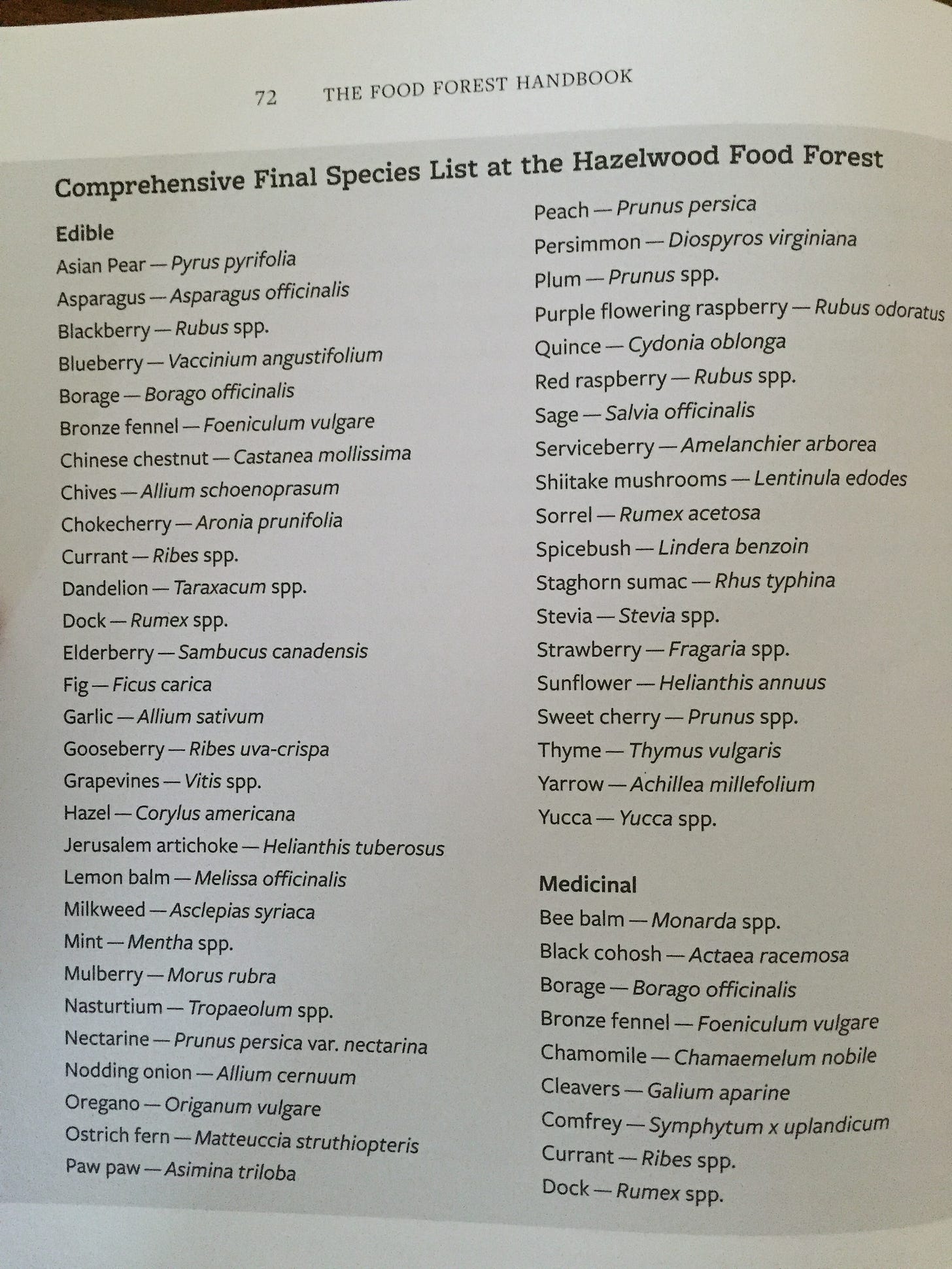
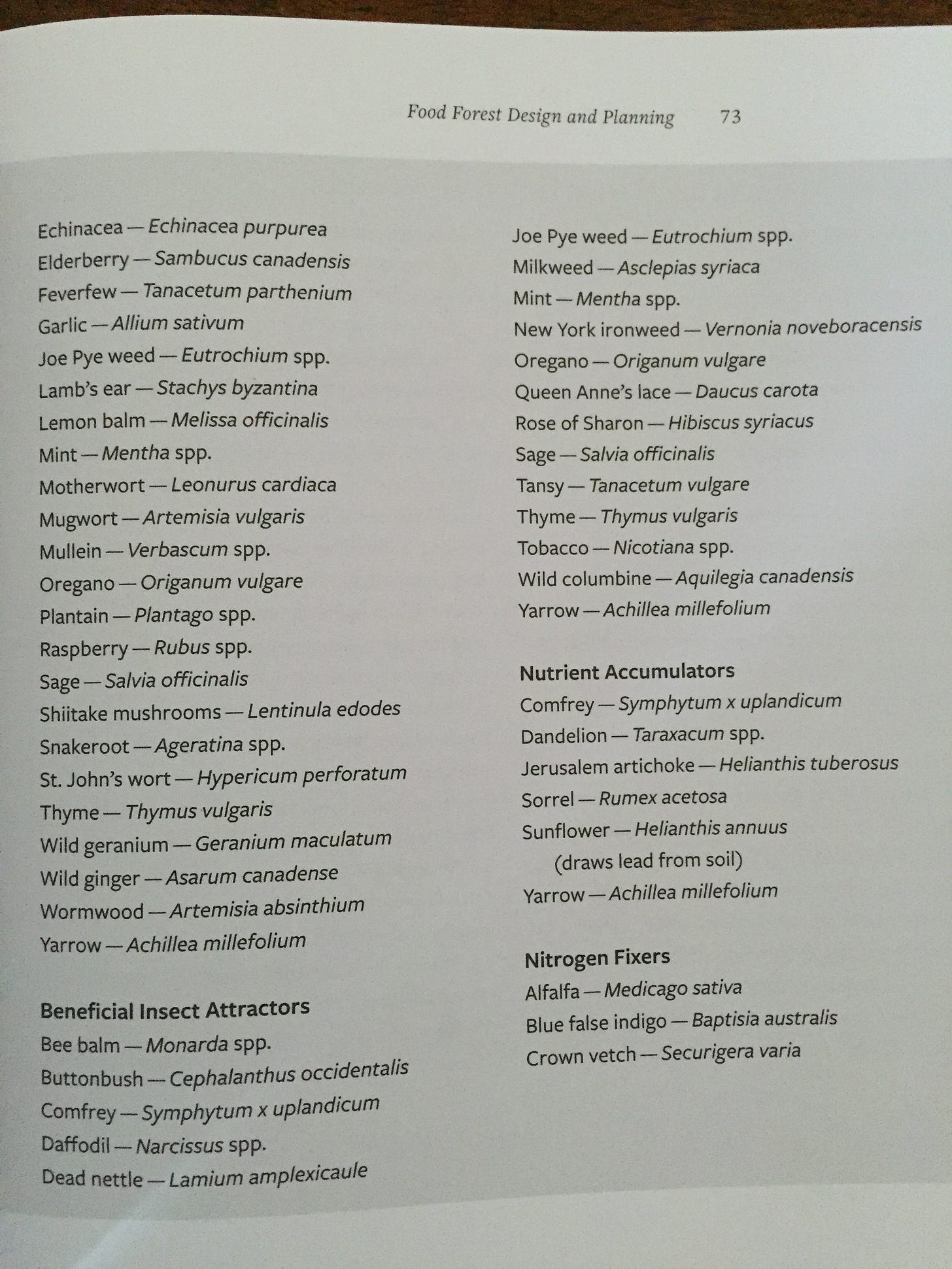
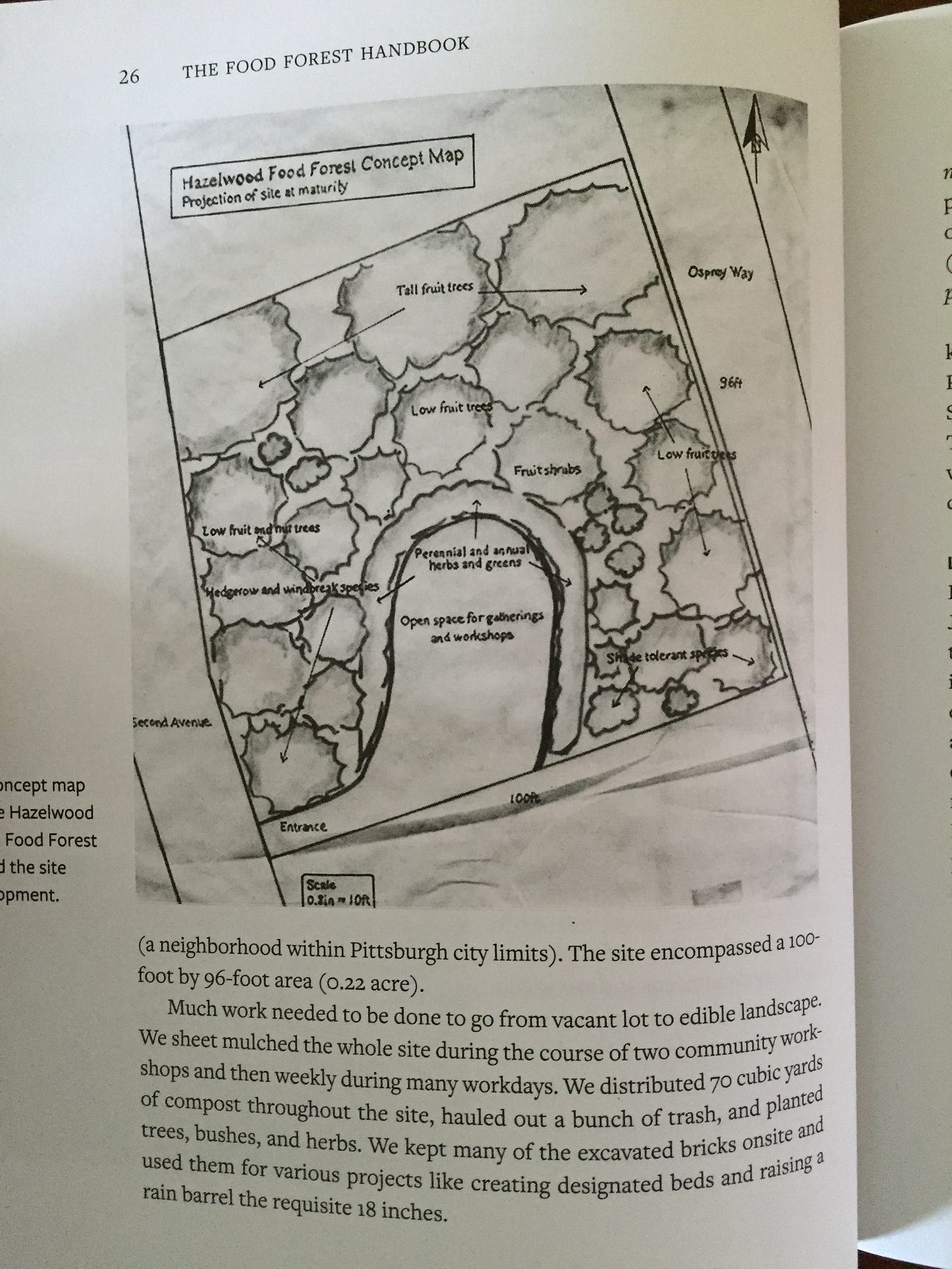
For more info on the community food forest example above: https://communityfoodforests.com/hazelwood-food-forest/
Hazel Polycultures
Hazels are excellent plants for use in polycultures. They are tolerant of shade so suitable in the under story, are not very nutrient demanding or competitive and are relatively compact and easy to manage. They tolerate pruning very well and can be used for chop and drop plants grown between fruit trees or in hedgerows. If nut production is sought after they should be given a prime position but can still accommodate a range of productive and useful plants around them.
We have used hazel in various polycultures including living hedges, main crop contour plantings and habitat polycultures.
Here’s an example of a design with hazel planted in a polyculture hedge designed for Permaculture Orchard - Orehite Ranch - Veslec
We’ll be planting out Hazel in our new trial garden — Ataraxia, where we’ll try growing it along with asparagus, currants, wild garlic and various bulbs in 1.5 m wide beds.
Here’s a short list of ground cover and bulbous plants that the good people at The Polyculture Project have observed growing well with hazel.
Scilla bifolia — Alpine Squill
Trifolium repens — White Clover
Corydalis bulbosa — Spring Fumewort
Agroforestry Potential Of Hazels
There is great potential for hazels in agroforestry systems. Traditionally, in Europe, hazels were grown in a silvopasture system with sheep grazing the pasture beneath the trees, this has an added benefit of controlling suckering growth. Hazel has also been grown with vines and in Kentish orchards gooseberries and currants were traditionally inter planted with young hazel.
Here is one idea for an agroforestry design:
Being shade tolerant the trees are good candidates for use in an under storey. In deep shade the plants will not produce a significant yield of nuts but they can be used for coppicing or mulch production. In partial shade they can still produce good yields.
For a YouTube video with info on Supporting Hazelnuts in my Permaculture Food Forest
Practical Uses:
Within the permaculture community, Hazelnuts are an important crop for food forests and to support perennial agriculture. The entire idea behind perennial agriculture is that we can plant trees or other crops once and then gain many harvests, and cultivate a food forest rather than an annual vegetable garden. This has made nut crops, like chestnut and hazelnut, important symbols in that movement.
American Hazel, like all other hazels, has the ability to be coppiced. This means that once established, you can cut the tree back to the roots and harvest the thin trunks. There are coppiced hazels in parts of Europe that have been a continual source of raw material for centuries; this is a very sustainable and regenerative practice. Within a few years, the hazel will send up new wood and regrow.
Because Hazels are understory trees without thick trunks, most of the wood applications in Hazel have to do with their ability to produce lots of small, flexible branches and be coppiced. Hazelwood has been traditionally used for building small structures like fences, in wattle and daub natural construction, in building the traditional coracle boat, or for creating supports in a garden. (Source)
Hazel wood can be twisted or knotted, and as such it historically had many uses. These included thatching spars, net stakes, water-divining sticks, hurdles and furniture. Hazel was also valued for its nuts, or 'cobs'.
Today, hazel coppice has become an important management strategy in the conservation of woodland habitats for wildlife. The resulting timber is used in lots of ways and is becoming increasingly popular as pea sticks and bean poles used by gardeners.
Hazel was grown in the UK for large-scale nut production until the early 1900s. Cultivated varieties (known as cob nuts) are still grown in Kent, but most of our hazelnuts are now imported.
Beyond the nutritious delicious nuts hazels can be used for a variety of purposes.
Wood — Hazel is almost as well known for coppicing as it is for its nuts. The poles from coppice (known as ‘wands’) are long and flexible and have traditionally been used for wattle fencing, thatching spars, walking sticks, fishing rods, basketry, pea and bean sticks and firewood. The wood is soft and easy to split but not very durable (See Hazel Coppice below).
Oil — The nut oil is used as edible oil and contains 65% of a non-drying oil that can be used in paints, cosmetics etc.
Animal Fodder — The twigs can be used to feed rabbits and goats all year around and the leaves are very palatable to cattle.
Leaves — Leaves contain on average 2.2% N. 0.7% K and 0.12% P and when applied as mulch make a great fertilizer. The plant has potential to be grown as chop and drop component in a polyculture system.
Hedging — Hazel makes a great hedge taking well to trimming and providing a dense screen. Nut production is not as high as when grown as free standing plants but some nuts can be harvested from the hedge. The plants are also tolerant of wind and a 2 or 3 row windbreak can be set up where alternate rows are coppiced on a 7 year cycle.
Bee Fodder — Hazel is an excellent source of early forage for bees providing a source of pollen from February through to March. The good people at The Polyculture Project include hazel in their Early Polleniser Polyculture, a polyculture dedicated to providing an early source of pollen/nectar to a wide diversity of pollinating insects.
Medicinal uses — The leaves are used in allopathy: their effect is to stimulate circulation and bile production, and they are used for liver and gall disorders. Hazelnuts are rich in protein, monounsaturated fat, vitamin E, manganese, and numerous other essential nutrients.
Hazel Coppice
Hazel coppice has been practiced extensively in the past and still provides an excellent source of valuable wood especially if you are adding value with wood crafting.
Contrary to what you may expect, coppicing the hazel can extend the life of the plant considerably with some well managed coppices being centuries old.
Hazel can be grown on various coppice cycles for a supply of poles (‘Wands’) that are used for a variety of purposes as listed above. A 7–10 year rotation is often practiced and is planted out at a rate of 1500–2000 plants per ha (spacing is 2.2–2.6 m between plants).
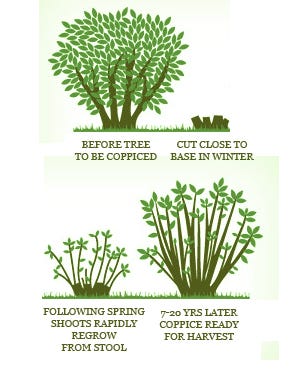
In the 7th — 10th year the shoots should be 4–5m long and can be cut at any point during the year apart from August but is usually carried out in the winter. If you cut the coppice in the summer, leaves from the wood make an excellent cattle feed or mulch. Regrowth will quickly reestablish and is vulnerable to browsing from wild and domestic animals. After the first few coppice cycles, regrowth will be fast but after 15 years it will decline. If a hazel coppice is not well managed i.e cut at regular intervals for 40+ years it will die back.
How much wood can be harvested? — A site with 1500 plants per ha can yield 20 tonnes of dry wood or 40 m3 of wood per ha per cycle.
Hazel coppices are often combined with standard trees to make a two storey forest. Sweet Chestnut is a classic combination in the South of England. Oak is also very commonly grown with hazel at a rate of 30–100 standard trees per Ha. Too many standard trees will shade out the hazel.
Seed Propagation:
If collecting your own seeds:
1.
After extraction and sorting them out, perform a test that will establish seeds you will use during planting. In a bucket full of water, drop the seeds and allow them to settle. Some will float, and others will sink. Use those that sink to plant as they are more likely to yield more. Those that float may not produce healthy seedlings.
If buying seeds from a company like this.
SEED PRETREATMENT: Soak seeds in water for 24 hours. Mix seeds with a moistened grow medium equal to 3-4 times seed volume. Place in a plastic bag, covered tray/cells or container.
STRATIFICATION: After soaking seeds, start 30 days warm/moist (20°C), the top of your fridge is a good spot for this. Monitor for mold. Next, 180 days cold/moist (5°C), in your fridge is a good spot for this. Inspect periodically for even moisture and germination.
POST-STRATIFICATION: Sow stratified seeds 1” deep, ideally in a peat/perlite mix. Water evenly and regularly.
GERMINATION: When all previously mentioned requirements are fulfilled, germination generally occurs in 60-75 days.
For more info read: “Propagating Your Own Hazelnuts” and
Seed and seedling sources:
https://northernfoodforest.ca/product/hybrid-hazelnut-2-yr-old/
https://www.incredibleseeds.ca/products/hazelnut-seeds-american
Cultivation details:
They’re hardy shrubs and will tolerate nearly any soil type, including acidic, neutral, and alkaline soil and sand, clay, loam, and silt. However, Hazels need areas that are adequately moist but well-draining. You won’t find Hazels growing in boggy or swampy areas.
It may seem counter-intuitive, but if you want to grow Hazel, it’s best not to go overboard enriching the soil. Hazel trees in very rich, productive soil tend to produce more foliage and fewer hazelnuts.
Where to Plant
Climatic limitations — Both species (they are referring to Corylus avellana and Corylus maxima here) crop best in areas with cool, moist summers and mild cool winters or in maritime climates. Areas with high summer temperatures are not ideal although good cultivar selection can improve results. Areas with extreme winter cold can also be problematic. The shoots of the plants are hardy to -29 C (-20 F) although winter temperatures below -10 C (-13 F) during the flowering period may damage the male flowers reducing the likelihood of fruit set that year.
The plants will not grow well in tropical or sub tropical climates and require a winter chilling period of 800–1200 hrs below 7 C (45 F) which is similar to apples.Soil — Hazel tolerates a wide variety of soils from calcareous to acid, loam to clay and prefers soil that’s well drained and fairly low in nutrients; overly rich soil gives plenty of leaf growth at the expense of flowers and nuts. Hazels will not grow well in water logged and peaty soils. Shallow soils will restrict the growth and height of hazel.
Location — If growing for nut production in cold climates you should avoid planting in frost pockets, and in hot climates avoid windy sites. Hazelnut trees also cannot tolerate excessive heat or a long dry season. A sheltered area with a reliable source of irrigation is essential in hot climates.
The plants are in theory self fertile meaning the pollen from the male flowers can pollinate and fertilize the female flowers on the same plant. However, the blossoming times of the male and female flowers on the same plant do not always coincide and for this reason it is recommended to plant 2 or more different cultivars to increase the likelihood of pollination occurring. Wild growing hazel nearby will serve as good pollinating agents for most cultivars and there are many cultivars that work well together to ensure fuller cropping. There are some cultivars that absolutely require pollinating partners so research your cultivars well A good rule of thumb for how many pollinator plants you need to support you main cropping cultivar is 1 to 18. On sites where wet weather is common during the flowering period this can be increased. The pollinating partner should be a maximum of 45 m away and upwind from the main cropping plants.
Pollen is released from the male flowers in bursts across a 4- 6 week period in January — March. Interestingly, the pollen germinates as soon as it reaches a receptive flower but the fertilization process does not take place for another 4–5 months in June. Once fertilized the female flowers develop into nuts very rapidly with 90% growth occurring within 4–6 weeks. - Source
Fertility, Irrigation and Care
Fertility — On good soils hazel will not need fertilizers. On poor soils, planting out with 30 L of compost (applied to the surface) and mulching well with straw and repeating this each spring for 4- 5 years will provide a good boost to growth. Planting nitrogen fixing companions can also be very effective. I have seen very healthy orchards growing in Ordu, Turkiye where the owners use the bracts left over from the hazelnut harvest to mulch the trees, as you can see in the below photo.
Irrigation — In cooler climates such as the UK irrigation is not necessary. In warmer climes with hot summers and long periods without rain, applying 30 L of water per tree every 3–4 weeks without rain and mulching well is very effective.
Weeding — Mulching plants with a 10 -20 cm deep mulch each spring and pulling weeds that start to grow through in the summer is good practice especially when the plants are young.
Pruning — When planting out single stemmed whips it’s good practice to prune the top down to 45 cm to encourage lower branching (a practice known as formative pruning). Hazel plants often sucker (send up many shoots from the base of the plant. Suckering growth should be removed to keep the stems clear and the crown less congested. Beyond formative pruning and removing suckers we don’t prune our Hazels but there is a tradition, as with most fruit trees, to prune in order to achieve an open centered goblet shaped bush.
If you are going to prune than it’s important to know that female flowers (that will form the nuts) are produced from buds on growth from the previous seasons growth. For optimal nut production you should aim to have plenty of previous years stems at least 15–25 cm long.
I read an interesting comment regarding a traditional pruning method used to increase nut production called ‘brutting’. This involves prompting more of the trees’ energy to go into flower bud production, by snapping, but not breaking off, the tips of the new year shoots’ six or seven leaf groups from the join with the trunk or branch, at the end of the growing season. I’ll be trying this on a few of our plants this year.
Harvesting — The nuts are fully ripe when the husks begin to yellow and can be picked by hand. Nuts will naturally drop over a 4–6 week period. It’s important to not pick before they are ripe as they will shrivel and do not keep well.
Propagation — We have grown hundreds of hazels from locally gathered seed and this is a very easy and reliable method to propagate these plants. Most of our seedling stock we use for coppice plants and hedging plants. For nut production we use cultivars as they generally fruit within the 3rd and 4th year after planting and you know what kind of nut you will end up with.
Seedlings can take up to 6 or 7 years to produce nuts and you never know what they will be like. Saying that, we have some great nut producing seedlings that we propagated from local plants. They appear to be more resistant to the winter cold and have been providing a reliable crop each year even after bitter cold late winters.
Another great way to propagate hazel, including cultivars that are grown on their own roots, is by stooling and layering. Stooling involves heaping soil at the base of the plant, leaving it for 12 months and then dividing the rooted stems. Layering is burying the stems in the soil for 12 months and cutting them off the main plant once the stem has rooted
Hazels that are grafted onto their own roots will send up suckers. The suckers can be dug out in the winter and planted on. The suckers can be a nuisance and will need cutting back to promote better production. Corylus colurna — Turkish hazel is often used as a rootstock as these are non-suckering and have a deeper rooting habit. Cultivars on Corylus colurna rootstocks are often very vigorous.
Recipes:
Hazelnuts are a great snack that’s high in protein and healthy fats. They are also excellent additions to baked goods, granola, and trail mix. You can also use them to make hazelnut milk or use them in savory recipes like soups, pesto, or crusty toppings for meat and fish.
Don’t forget that you can eat the hazel leaves too! Hazel leaves are best harvested in the spring or summer before they dry out and change color in the fall. The hairs on the leaves aren’t a problem after cooking, and they have a mild flavor. Use them as you would other greens, in soups, stir-fries, or sautéed by themselves.
Whip up something a bit more savory with this Hazelnut and Oregano Pasta Recipe from BBC Good Food.
Check out this delicious, foraged Wild Ramps and Hazelnut Pesto from Beyond Sweet and Savory.
Make good use of the leaves with this fun recipe for Hazel Leaf Crumble Parcels from Nature Nuture Sussex.
Or try these other delicious hazelnut recipes:
Wild garlic, hazelnut and smoky chipotle “pesto”
-
Hazelnut cheeses
There are some excellent hazelnut cheese recipes in “Wildcrafted Fermentation: Exploring, Transforming, and Preserving the Wild Flavors of Your Local Terroir” by Pascal Baudar
Some pics of his various wild nut cheese batches shown below
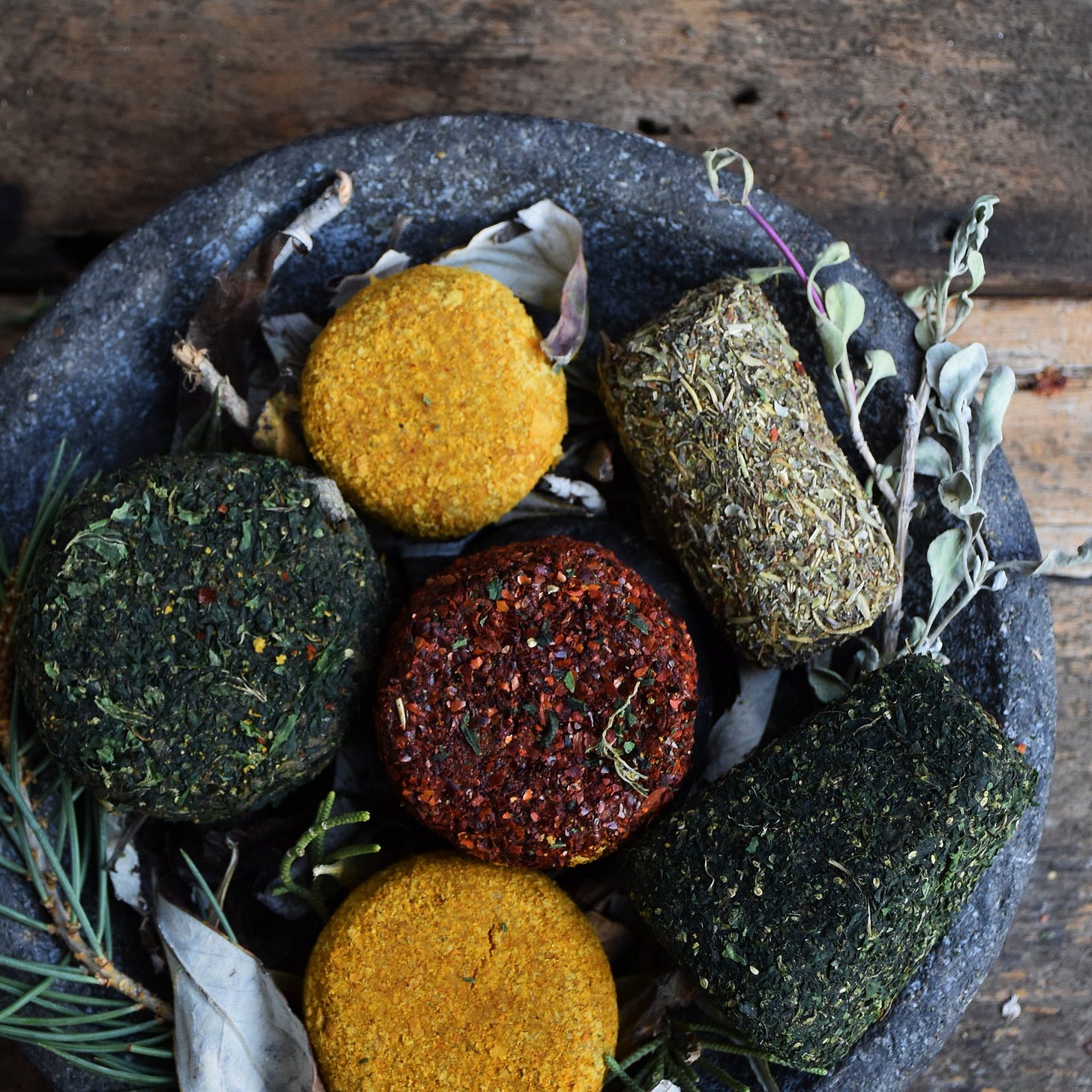
Pascal Baudar’s pic, Herbs used: nettles, black sage, white sage, California sagebrush, California bay, herbes de provence. Those were fermented using the young brine (still fermenting actively) of spicy sauerkraut. 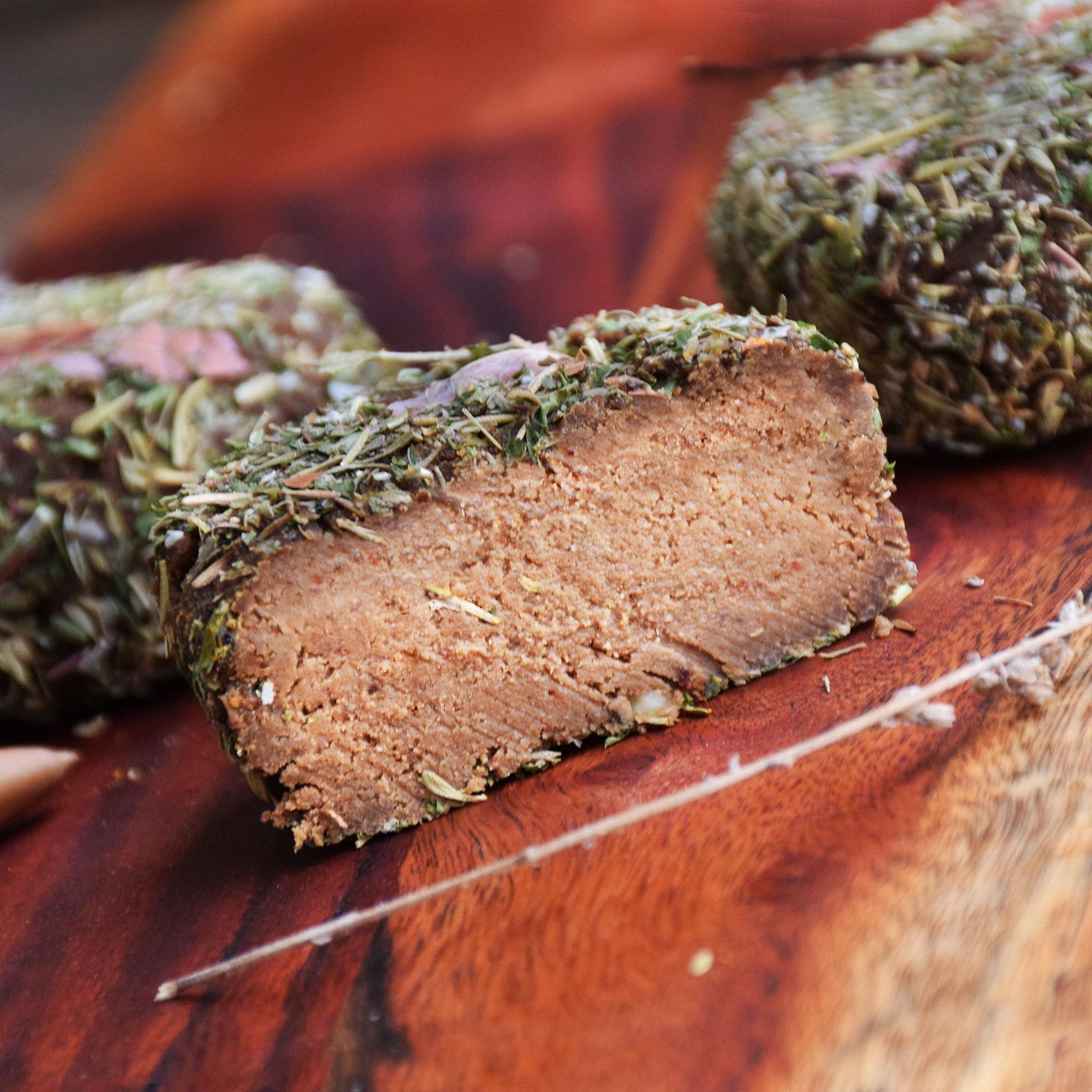
Wild nut fermented cheese, Pascal Baudar’s pic 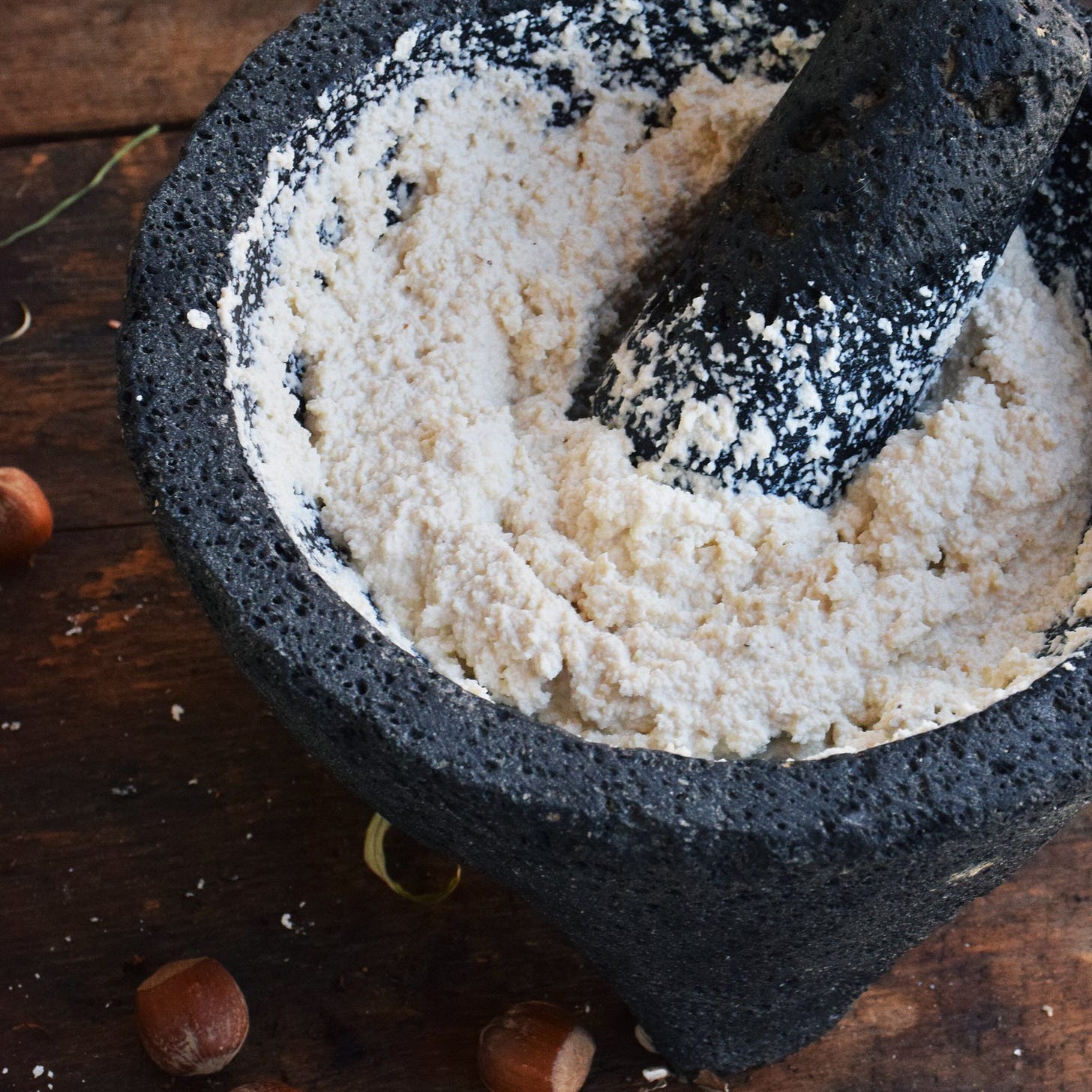
for Pascal Baudar’s full instructions on how to make a soft fermented hazelnut cheese, check out this post Fried Egg with Hazelnuts, Chanterelles, Green Garlic, and Blackberries
Wild Mushroom and Hazelnut Baked Brie
Or, Satisfy your sweet tooth with this Wild-Bleuberry Hazelnut Cake with Meadowsweet Cream recipe from the Forager Chef.
Use your hazelnut harvest immediately with this Green Hazelnut Chocolate Brownie recipe from The Hedgecombers.
Elderberry Ice-cream with Hazelnut crunch
Links to Even more recipes! :
Foraging for, Harvesting and processing Hazelnuts:
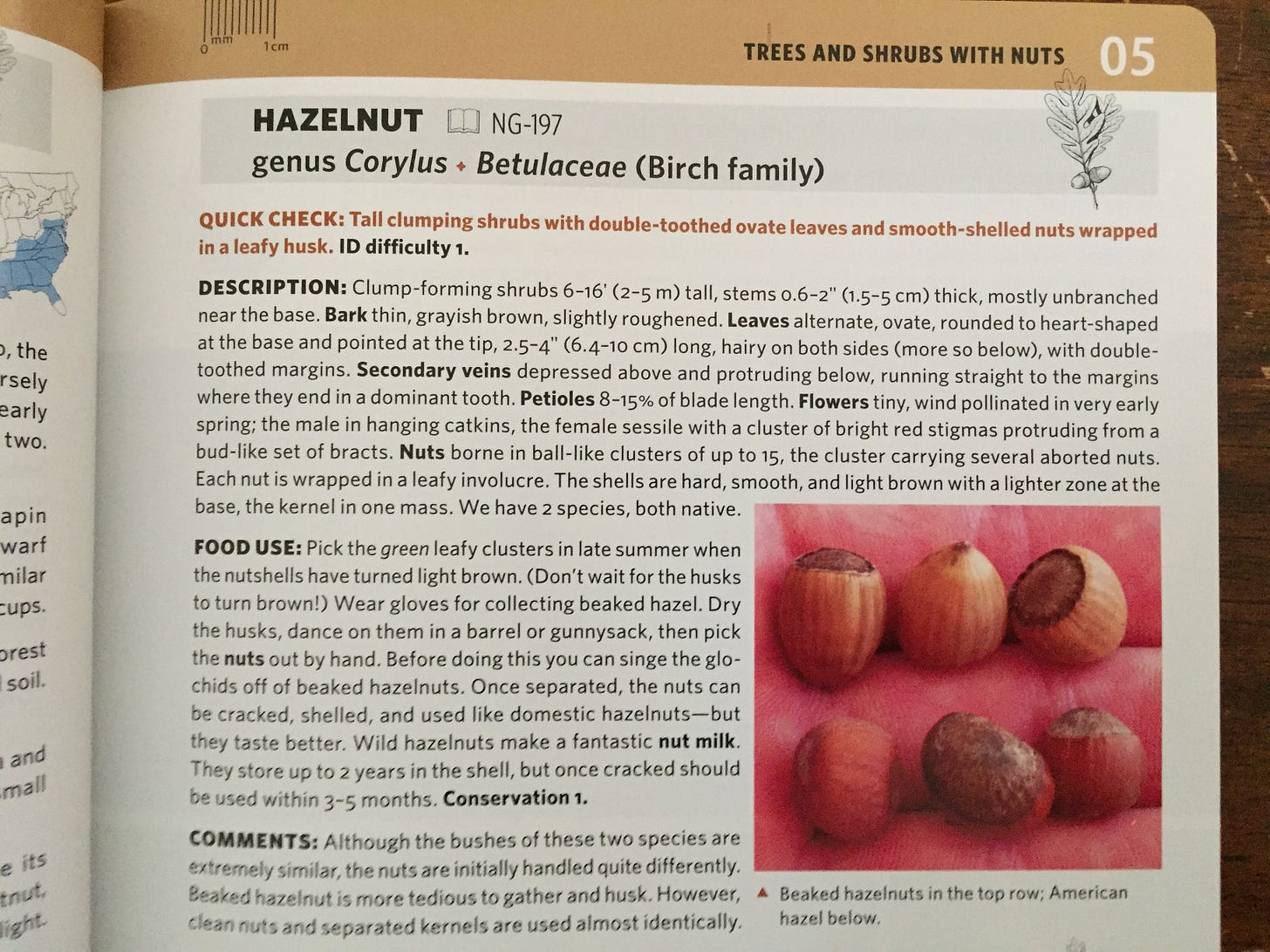
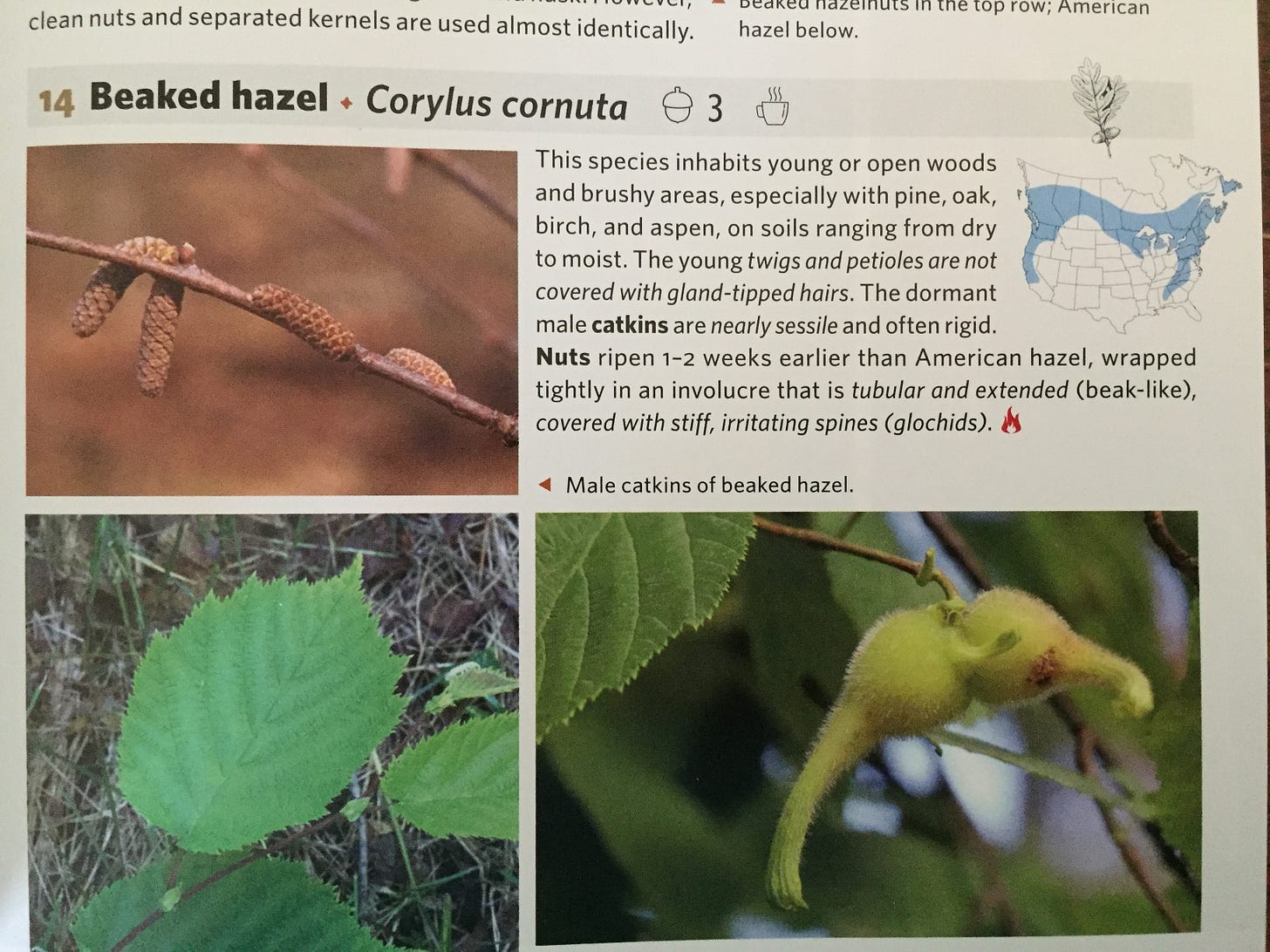

Depending on where you live and what species grows in your area, you may be able to harvest hazelnuts from July through October. In southern areas like Georgia, they ripen as early as July. In northern areas, like Maine, they may ripen as late as October.
While many people wait until the husk turns brown to harvest, hazelnuts are ripe weeks before this. To beat the squirrels to the hazelnuts, gather them as soon as they’re ripe. Pry a few husks open in late summer, and if the top half of the shell is brown, they’re ready to harvest. When they’re underripe, the shell will be cream-colored rather than brown.
You want to begin checking the bushes for hazelnuts in late summer and early fall. You can harvest the nuts when the husks are still green or starting to get reddish or brown patches. Usually, if you wait until the husk is entirely brown and dry, the squirrels will have eaten them all!
You don’t need to peel hazelnut husks off in the field. Grab entire clusters of nuts and twist them as you pull them off the bush. The hairy husks of Beaked Hazel can be irritating, so you may want to wear gloves to harvest.
You can use a float test on fresh hazelnuts, which expert forager Sam Thayer recommends. Place fresh hazelnuts in a bucket of water and give them a stir. Any hazelnuts that float are usually bad or infested with worms. This test won’t work with dry hazelnuts.
If you want, you can husk and use your hazelnuts right away. Both can be peeled by hand, shelled, and eaten right on the spot. However, Sam has also devised clever ways of processing larger amounts of hazelnuts rather than hand-peeling them.
Find a spot you can lay them out where the squirrels won’t get to them for a couple of weeks until the husks turn brown. At this point, they are much easier to hand process, or you can use Sam’s bulk technique, dumping a few gallons into a wooden barrel and stepping on them until the husks are separated from the shells. Then, pick out the nuts.
The tricky husks of baked hazelnuts can be harder to process. Sam recommends burying them in wet sand or mud for about one month rather than drying them. After this point, he places them in a sack and steps on them to loosen the now rotting hulls. Then, you can pick out the separated nuts.
After you remove the husks, you can store your hazelnuts. They keep well in the shell. When you’re ready to use your hazelnuts, you’ll need to shell them. You don’t need fancy tools; you can crack the shells with a hammer or large, sturdy mortar and pestle. However, there are some nutcrackers available that are designed for hazelnuts, which may make the process easier.
For more info on foraging for American and Beaked Hazelnuts: https://ouroneacrefarm.com/2013/09/03/hazelnuts/
Foraging for European hazelnuts
The Hazel Nut, also called a Filbert or Cobnut, is one of a small number of edible nuts that can be harvested in the UK. Hazel Nuts are the fruit of the Hazel, a large shrub or small deciduous tree that is native to Europe. Hazels have simple, rounded leaves with double-serrate margins and flower in early spring before the leaves develop.
For more info, read: https://www.thegrizzlyforager.co.uk/hazelnuts/
and: https://www.wildfoodie.co.uk/post/hazel-tree-hazelnuts-identification
Videos on that topic:
References:
https://chriscondello.wordpress.com/2013/04/03/practical-permaculture-nuts-about-hazelnuts/
https://pfaf.org/user/plant.aspx?LatinName=Corylus+avellana
https://www.permaculture.co.uk/articles/the-essential-guide-to-hazel/
https://balkanecologyproject.blogspot.com/2017/07/the-amazing-hazel-essential-guide-to.html
https://pubmed.ncbi.nlm.nih.gov/29120757/
https://pubmed.ncbi.nlm.nih.gov/19422224/
https://www.healthline.com/nutrition/hazelnut-benefits#TOC_TITLE_HDR_3
https://pmc.ncbi.nlm.nih.gov/articles/PMC9929368/#:~:text=Galenic%20preparations%20of%20hazel%20leaves,to%20treat%20pain%20(5).
https://southsidepermaculturepark.org/plant-index/american-filbert/
https://www.researchgate.net/publication/299468333_Corylus_avellana_in_Europe_distribution_habitat_usage_and_threats
https://www.science.org/content/article/indigenous-tribes-engineered-british-columbia-s-modern-hazelnut-forests-more-7000-years
https://ouroneacrefarm.com/2013/09/03/hazelnuts/
https://thedruidsgarden.com/2021/03/07/sacred-trees-in-the-americas-american-hazel-corylus-americana-magic-ecology-and-sacred-uses/
https://thetyee.ca/News/2024/12/04/Hazelnuts-Reveal-Secrets-Ancient-BC-City/
https://treesforlife.org.uk/into-the-forest/trees-plants-animals/trees/hazel/
https://practicalselfreliance.com/hazelnuts-corylus-sp/
https://besjournals.onlinelibrary.wiley.com/doi/full/10.1111/1365-2745.14008
https://pmc.ncbi.nlm.nih.gov/articles/PMC8910742/
Becerra-Tomás N., Paz-Graniel I., Kendall C.W.C., Kahleova H., Rahelić D., Sievenpiper J.L., Salas-Salvadó J. Nut consumption and incidence of cardiovascular diseases and cardiovascular disease mortality: A meta-analysis of prospective cohort studies. Nutr. Rev. 2019;77:691–709. doi: 10.1093/nutrit/nuz042. [DOI] [PMC free article] [PubMed] [Google Scholar]
Ros E., Singh A., O’Keefe J.H. Nuts: Natural pleiotropic nutraceuticals. Nutrients. 2021;13:3269. doi: 10.3390/nu13093269. [DOI] [PMC free article] [PubMed] [Google Scholar]
Zhang D., Dai C., Zhou L., Li Y., Liu K., Deng Y.-J., Li N., Zheng Y., Hao Q., Yang S., et al. Meta-analysis of the association between nut consumption and the risks of cancer incidence and cancer-specific mortality. Aging. 2020;12:10772–10794. doi: 10.18632/aging.103292. [DOI] [PMC free article] [PubMed] [Google Scholar]
Becerra-Tomás N., Paz-Graniel I., Hernández-Alonso P., Jenkins D.J.A., Kendall C.W.C., Sievenpiper J.L., Salas-Salvadó J. Nut consumption and type 2 diabetes risk: A systematic review and meta-analysis of observational studies. Am. J. Clin. Nutr. 2021;113:960–971. doi: 10.1093/ajcn/nqaa358. [DOI] [PubMed] [Google Scholar]
Luo C., Zhang Y., Ding Y., Shan Z., Chen S., Yu M., Hu F.B., Liu L. Nut consumption and risk of type 2 diabetes, cardiovascular disease, and all-cause mortality: A systematic review and meta-analysis. Am. J. Clin. Nutr. 2014;100:256–269. doi: 10.3945/ajcn.113.076109. [DOI] [PubMed] [Google Scholar]
Wu L., Wang Z., Zhu J., Murad A.L., Prokop L.J., Murad M.H. Nut consumption and risk of cancer and type 2 diabetes: A systematic review and meta-analysis. Nutr. Rev. 2015;73:409–425. doi: 10.1093/nutrit/nuv006. [DOI] [PMC free article] [PubMed] [Google Scholar]
Zhou D., Yu H., He F., Reilly K.H., Zhang J., Li S., Zhang T., Wang B., Ding Y., Xi B. Nut consumption in relation to cardiovascular disease risk and type 2 diabetes: A systematic review and meta-analysis of prospective studies. Am. J. Clin. Nutr. 2014;100:270–277. doi: 10.3945/ajcn.113.079152. [DOI] [PubMed] [Google Scholar]
Brown R., Tey S., Gray A., Chisholm A., Smith C., Fleming E., Parnell W. Association of nut consumption with cardiometabolic risk factors in the 2008/2009 New Zealand Adult Nutrition Survey. Nutrients. 2015;7:5351. doi: 10.3390/nu7095351. [DOI] [PMC free article] [PubMed] [Google Scholar]
O’Neil C.E., Keast D.R., Nicklas T.A., Fulgoni V.L. Nut consumption is associated with decreased health risk factors for cardiovascular disease and metabolic syndrome in U.S. adults: NHANES 1999–2004. J. Am. Coll. Nutr. 2011;30:502–510. doi: 10.1080/07315724.2011.10719996. [DOI] [PubMed] [Google Scholar]
Bes-Rastrollo M., Sabate J., Gomez-Gracia E., Alonso A., Martinez J.A., Martinez-Gonzalez M.A. Nut consumption and weight gain in a Mediterranean cohort: The SUN Study. Obesity. 2007;15:107–116. doi: 10.1038/oby.2007.507. [DOI] [PubMed] [Google Scholar]
Nishi S.K., Viguiliouk E., Blanco Mejia S., Kendall C.W.C., Bazinet R.P., Hanley A.J., Comelli E.M., Salas Salvadó J., Jenkins D.J.A., Sievenpiper J.L. Are fatty nuts a weighty concern? A systematic review and meta-analysis and dose–response meta-regression of prospective cohorts and randomized controlled trials. Obes. Rev. 2021;22:e13330. doi: 10.1111/obr.13330. [DOI] [PMC free article] [PubMed] [Google Scholar]
Altamimi M., Zidan S., Badrasawi M. Effect of tree nuts consumption on serum lipid profile in hyperlipidemic individuals: A systematic review. Nutr. Metab. Insights. 2020;13:1178638820926521. doi: 10.1177/1178638820926521. [DOI] [PMC free article] [PubMed] [Google Scholar]
Del Gobbo L.C., Falk M.C., Feldman R., Lewis K., Mozaffarian D. Effects of tree nuts on blood lipids, apolipoproteins, and blood pressure: Systematic review, meta-analysis, and dose-response of 61 controlled intervention trials. Am. J. Clin. Nutr. 2015;102:1347–1356. doi: 10.3945/ajcn.115.110965. [DOI] [PMC free article] [PubMed] [Google Scholar]
Sabaté J., Oda K., Ros E. Nut consumption and blood lipid levels: A pooled analysis of 25 intervention trials. Arch. Intern. Med. 2010;170:821–827. doi: 10.1001/archinternmed.2010.79. [DOI] [PubMed] [Google Scholar]
Yu Z., Malik V.S., Keum N., Hu F.B., Giovannucci E.L., Stampfer M.J., Willett W.C., Fuchs C.S., Bao Y. Associations between nut consumption and inflammatory biomarkers. Am. J. Clin. Nutr. 2016;104:722–728. doi: 10.3945/ajcn.116.134205. [DOI] [PMC free article] [PubMed] [Google Scholar]
Xiao Y., Huang W., Peng C., Zhang J., Wong C., Kim J.H., Yeoh E.-k., Su X. Effect of nut consumption on vascular endothelial function: A systematic review and meta-analysis of randomized controlled trials. Clin. Nutr. 2018;37:831–839. doi: 10.1016/j.clnu.2017.04.011. [DOI] [PubMed] [Google Scholar]
Xiao Y., Xia J., Ke Y., Cheng J., Yuan J., Wu S., Lv Z., Huang S., Kim J.H., Wong S.Y.-s., et al. Effects of nut consumption on selected inflammatory markers: A systematic review and meta-analysis of randomized controlled trials. Nutrition. 2018;54:129–143. doi: 10.1016/j.nut.2018.02.017. [DOI] [PubMed] [Google Scholar]
Silveira B.K.S., da Silva A., Hermsdorff H.H.M., Bressan J. Effect of chronic consumption of nuts on oxidative stress: A systematic review of clinical trials. Crit. Rev. Food Sci. Nutr. 2022;62:726–737. doi: 10.1080/10408398.2020.1828262. [DOI] [PubMed] [Google Scholar]
Guarneiri L.L., Cooper J.A. Intake of nuts or nut products does not lead to weight gain, independent of dietary substitution instructions: A systematic review and meta-analysis of randomized trials. Adv. Nutr. 2021;12:384–401. doi: 10.1093/advances/nmaa113. [DOI] [PMC free article] [PubMed] [Google Scholar]
20.Alasalvar C., Shahidi F. Tree nuts: Composition, phytochemicals, and health effects: An overview. In: Alasalvar C., Shahidi F., editors. Tree Nuts: Composition, Phytochemicals, and Health Effect. Taylor & Francis Group; Boca Raton, FL, USA: 2008. pp. 1–10. [Google Scholar]
Di Nunzio M. Hazelnuts as source of bioactive compounds and health value underestimated food. Curr. Res. Nutr. Food Sci. 2019;7:17–28. doi: 10.12944/CRNFSJ.7.1.03. [DOI] [Google Scholar]
Pelvan E., Alasalvar C., Uzman S. Effects of roasting on the antioxidant status and phenolic profiles of commercial Turkish hazelnut varieties (Corylus avellana L.) J. Agric. Food Chem. 2012;60:1218–1223. doi: 10.1021/jf204893x. [DOI] [PubMed] [Google Scholar]
Pelvan E., Olgun E.Ö., Karadağ A., Alasalvar C. Phenolic profiles and antioxidant activity of Turkish Tombul hazelnut samples (natural, roasted, and roasted hazelnut skin) Food Chem. 2018;244:102–108. doi: 10.1016/j.foodchem.2017.10.011. [DOI] [PubMed] [Google Scholar]
Dreher M.L. A comprehensive review of almond clinical trials on weight measures, metabolic health biomarkers and outcomes, and the gut microbiota. Nutrients. 2021;13:1968. doi: 10.3390/nu13061968. [DOI] [PMC free article] [PubMed] [Google Scholar]
Jamshidi S., Moradi Y., Nameni G., Mohsenpour M.A., Vafa M. Effects of cashew nut consumption on body composition and glycemic indices: A meta-analysis and systematic review of randomized controlled trials. Diabetes Metab. Syndr. 2021;15:605–613. doi: 10.1016/j.dsx.2021.02.038. [DOI] [PubMed] [Google Scholar]
Asbaghi O., Hadi A., Campbell M.S., Venkatakrishnan K., Ghaedi E. Effects of pistachios on anthropometric indices, inflammatory markers, endothelial function and blood pressure in adults: A systematic review and meta-analysis of randomised controlled trials. Br. J. Nutr. 2021;126:718–729. doi: 10.1017/S0007114520004523. [DOI] [PubMed] [Google Scholar]
Fogacci F., Cicero A.F.G., Derosa G., Rizzo M., Veronesi M., Borghi C. Effect of pistachio on brachial artery diameter and flow-mediated dilatation: A systematic review and meta-analysis of randomized, controlled-feeding clinical studies. Crit. Rev. Food Sci. Nutr. 2019;59:328–335. doi: 10.1080/10408398.2017.1368007. [DOI] [PubMed] [Google Scholar]
Malmir H., Larijani B., Esmaillzadeh A. The effect of walnut consumption on cardiometabolic profiles of individuals with abnormal glucose homoeostasis: A systematic review and meta-analysis of clinical trials. Br. J. Nutr. 2021:1–31. doi: 10.1017/S0007114521004414. [DOI] [PubMed] [Google Scholar]
Mohammadi-Sartang M., Bellissimo N., Totosy de Zepetnek J.O., Bazyar H., Mahmoodi M., Mazloom Z. Effects of walnuts consumption on vascular endothelial function in humans: A systematic review and meta-analysis of randomized controlled trials. Clin. Nutr. ESPEN. 2018;28:52–58. doi: 10.1016/j.clnesp.2018.07.009. [DOI] [PubMed] [Google Scholar]
B. D. Smith, Documenting plant domestication: The consilience of biological and archaeological approaches. Proc. Natl. Acad. Sci. U.S.A. 98, 1324–1326 (2001).
G. Larson et al., Current perspectives and the future of domestication studies. Proc. Natl. Acad. Sci. U.S.A. 111, 6139–6146 (2014).
N. G. Mueller, The earliest occurrence of a newly described domesticate in Eastern North America: Adena/Hopewell communities and agricultural innovation. J. Anthropol. Archaeol. 49, 39–50 (2018).
F. J. Aceituno, N. Loaiza, The origins and early development of plant food production and farming in Colombian tropical forests. J. Anthropol. Archaeol. 49, 161–172 (2018).
J. P. Londo, Y.-C. Chiang, K.-H. Hung, T.-Y. Chiang, B. A. Schaal, Phylogeography of Asian wild rice, Oryza rufipogon, reveals multiple independent domestications of cultivated rice, Oryza sativa. Proc. Natl. Acad. Sci. U.S.A. 103, 9578–9583 (2006).
M. D. Purugganan, D. Q. Fuller, Archaeological data reveal slow rates of evolution during plant domestication. Evolution 65, 171–183 (2011).
L. Kistler et al., Multiproxy evidence highlights a complex evolutionary legacy of maize in South America. Science 362, 1309–1313 (2018).
D. Q. Fuller, T. Denham, R. Allaby, Plant domestication and agricultural ecologies. Curr. Biol. 33, R636–R649 (2023).
A. Casas, A. Otero-Arnaiz, E. Pérez-Negrón, A. Valiente-Banuet, In situ management and domestication of plants in Mesoamerica. Ann. Bot. 100, 1101–1115 (2007).
C. Fausto, E. G. Neves, Was there ever a Neolithic in the Neotropics? Plant familiarisation and biodiversity in the Amazon. Antiquity 92, 1604–1618 (2018).
N. J. Turner, Ancient Pathways, Ancestral Knowledge: Ethnobotany and Ecological Wisdom of Indigenous Peoples of Northwestern North America (McGill-Queen’s University Press, 2014).
M. K. Anderson, Tending the Wild: Native American Knowledge and The Management of California’s Natural Resources (University of California, 2013).
N. J. Turner, From “taking” to “tending”: Learning about Indigenous land and resource management on the Pacific Northwest Coast of North America. ICES J. Mar. Sci. 77, 2472–2482 (2020).
N. J. Turner, S. Peacock, "Solving the perennial paradox: Ethnobotanical evidence for plant resource management on the Northwest Coast" in Keeping It Living: Traditions of Plant Cultivation on the Northwest Coast of North America, D. E. Deur, N. J. Turner, Eds. (University of Washington Press, 2005), pp. 101–150.
T. Denham et al., The domestication syndrome in vegetatively propagated field crops. Ann. Bot. 125, 581–597 (2020).
M. Carney, S. Tushingham, T. McLaughlin, J. d’Alpoim Guedes, Harvesting strategies as evidence for 4000 years of camas (Camassia quamash) management in the North American Columbia Plateau. R. Soc. Open Sci. 8, 202213. (2021).
D. E. Deur, N. J. Turner, Eds., Keeping It Living: Traditions of Plant Use and Cultivation on the Northwest Coast of North America (University of Washington Press, 2005).
N. J. Turner, C. G. Armstrong, D. Lepofsky, Adopting a root: Documenting ecological and cultural signatures of plant translocations in Northwestern North America. Am. Anthropol. 123, 879–897 (2021).
C. G. Armstrong et al., Historical ecology of forest garden management in Ts’msyen Lahkhyuup and beyond. Ecosyst. People 19, 2160823 (2023).
J. E. Terrell et al., Domesticated landscapes: The subsistence ecology of plant and animal domestication. J. Archaeol. Method Theory 10, 323–368 (2003).
N. Bassil, P. Boccacci, R. Botta, J. Postman, S. Mehlenbacher, Nuclear and chloroplast microsatellite markers to assess genetic diversity and evolution in hazelnut species, hybrids and cultivars. Genet. Resour. Crop. Evol. 60, 543–568 (2013).
M. Zvelebil, "Hunting, gathering, or husbandry? Management of food resources by the late Mesolithic communities of temperate Europe" in Before Farming: Hunter Gatherer Society and Subsistence, D. Campana, Ed. (University of Pennsylvania, Museum of Archaeology and Anthropology, 1995), pp. 79–104.
A. M. G. McComb, D. Simpson, The wild bunch: Exploitation of the hazel in Prehistoric Ireland. Ulster J. Archaeol. 58, 1–16 (1999).
M. Regnell, Plant subsistence and environment at the Mesolithic site Tågerup, southern Sweden: New insights on the “Nut Age”. Veget. Hist. Archaeobot. 21, 1–16 (2012).
R. J. Warren, Ghosts of cultivation past-Native American dispersal legacy persists in tree distribution. PLoS ONE 11, e015070707 (2016), https://doi.org/10.1371/journal.pone.0150707.11,1-16.
P. Kuneš, P. Pokorný, P. Šída, Detection of the impact of early Holocene hunter-gatherers on vegetation in the Czech Republic, using multivariate analysis of pollen data. Veget. Hist. Archaeobot. 17, 269–287 (2008).
R. R. Bishop, M. J. Church, P. A. Rowley-Conwy, Firewood, food and human niche construction: The potential role of Mesolithic hunter–gatherers in actively structuring Scotland’s woodlands. Q. Sci. Rev. 108, 51–75 (2015).
D. Holst, Hazelnut economy of early Holocene hunter–gatherers: A case study from Mesolithic Duvensee, northern Germany. J. Archaeol. Sci. 37, 2871–2880 (2010).
G. Hines, Life on the Plains of the Pacific (C.M. Saxton, Barker & Co., 1859).
M. Lewis, W. Clark, Original Journals of the Lewis and Clark Expedition, 1804–1806 (Dodd, Mead & Company, 1905).
H. B. Zenk, Contributions to Tualatin Ethnography: Subsistence and Ethnobiology (Portland State University, Portland, OR, 1976).
E. Gunther, Ethnobotany of Western Washington: The Knowledge and Use of Indigenous Plants by Native Americans, Revised Edition (University of Washington, 1973).
N. J. Turner, L. C. Thompson, M. T. Thompson, A. Z. York, Thompson Ethnobotany: Knowledge and Usage of Plants by the Thompson Indians of British Columbia (Royal BC Museum, 1990).
L. M. Johnson, Health, Wholeness, and the Land: Gitksan Traditional Plant Use and Healing (University of Alberta, Edmonton, AB, 1997).
L. A. Charlie, N. J. Turner, Luschiim’s Plants: A Hul’q’umi’num’ (Cowichan) Ethnobotany (Harbour Publishing, 2021).
C. G. Armstrong, W. M. Dixon, N. J. Turner, Management and traditional production of beaked hazelnut (k’áp’xw-az’, Corylus cornuta; Betulaceae) in British Columbia. Hum. Ecol. 46, 547–559 (2018).
T. Marks-Block, F. K. Lake, R. Bliege Bird, L. M. Curran, Revitalized Karuk and Yurok cultural burning to enhance California hazelnut for basketweaving in northwestern California, USA. Fire Ecol. 17, 6 (2021).
M. C. Aikens, Archaeology of Oregon (Bureau of Land Management, U.S. Department of the Interior, 1993).
M. C. Aikens, T. J. Connolly, D. L. Jenkins, Archaeology Oregon, Illustrated Edition (Oregon State University Press, 2011).
G. L. Prouty, B. L. O’Neill, T. J. Connolly, “Aboriginal plant use at the chalker and long tom sites” in A Holocene Geoarchaeological Record for the Upper Willamette Valley, Oregon: The Long Tom and Chalker Sites, University of Oregon Anthropological Papers, B. L. O'Neill, T. J. Connolly, D. E. Freidel, Eds. (Museum of Natural History and Department of Anthropology, 2004), pp. 211–220.
T. Hoffmann et al., Engineered feature used to enhance gardening at a 3800-year-old site on the Pacific Northwest Coast. Sci. Adv. 2, e1601282 (2016).
B. Klinkenberg, “E-Flora BC: Electronic atlas of the plants of British Columbia” in Lab for Advanced Spatial Analysis (Department of Geography, University of British Columbia, Vancouver, 2020).
D. M. Brenner, Variation in Wild Hazelnuts ( Marsh.) of The Northwest United States (University of Oregon, 1986).
A. J. Miller, B. A. Schaal, Domestication and the distribution of genetic variation in wild and cultivated populations of the Mesoamerican fruit tree Spondias purpurea L. (Anacardiaceae). Mol. Ecol. 15, 1467–1480 (2006).
C. M. V. Finlay, C. R. Bradley, J. Preston, J. Provan, Low genetic diversity and potential inbreeding in an isolated population of alder buckthorn (Frangula alnus) following a founder effect. Sci. Rep. 7, 3010 (2017).
M. A. Lemay, Genetic differentiation of beaked hazelnut (Corylus cornuta) in western North America. National Center for Biotechnology Information (NCBI). https://www.ncbi.nlm.nih.gov/bioproject/PRJNA1138710. Deposited 22 July 2024.
J. A. Hamilton, C. G. Eckert, Population genetic consequences of geographic disjunction: A prairie plant isolated on Great Lakes alvars. Mol. Ecol. 16, 1649–1660 (2007).
J. A. Brown, G. E. Beatty, W. I. Montgomery, J. Provan, Broad-scale genetic homogeneity in natural populations of common hazel (Corylus avellana) in Ireland. Tree Genet. Genomes 12, 122 (2016).
A. Laforet, A. York, Spuzzum: Fraser Canyon Histories 1808–1939 (Canadian Museum of Civilization, 1998).
W. P. Smith, Ecology of Glaucomys sabrinus: Habitat, demography, and community relations. J. Mammal. 88, 862–881 (2007).
T. C. Blackburn, K. Anderson, Eds., Before the Wilderness: Environmental Management by Native Californians (Ballena Pr, (1993).
J. M. Black, “Plant dispersal by Native North Americans in the Canadian Subarctic” in The Nature and Status of Ethnobotany, R. I. Ford, Ed. (University of Michigan Press, ed. 2, 1994), pp. 255–262.
L. J. Johnston, Architects of Abundance: Indigenous Regenerative Food and Land Management Systems and The Excavation of Hidden History (University of Alaska Fairbanks, Fairbanks, AK, 2022).
T. D. Schneider, L. M. Panich, Eds., Archaeologies of Indigenous Presence (University Press of Florida, 2022).
The Food Forest Handbook: Design and Manage a Home-Scale Perennial Polyculture Garden by Darrell Frey and Michelle Czolba
Tree Wisdom: The definitive guidebook to the myth, folklore and healing power of Trees By Jacqueline Memory Paterson
The Living Wisdom of Trees : A Guide to the Natural History, Symbolism and Healing Power of Trees by Fred Hageneder
Sam Thayer's Field Guide to Edible Wild Plants: of Eastern and Central North America by Sam Thayer
A Druid's Herbal of Sacred Tree Medicine
by Ellen Evert Hopman
https://www.shelterwoodforestfarm.com/blog/the-lost-forest-gardens-of-europe#:~:text=Coppicing%20was%20another%20important%20strategy,managed%20this%20way%20for%20millennia.
https://static1.squarespace.com/static/5b271c001aef1d89f00e92ae/t/5f0a54dbb197041778aae4b5/1594512604670/joffre1999.pdf
https://static1.squarespace.com/static/5b271c001aef1d89f00e92ae/t/5f0a2b1426f258058c14943c/1594501909874/FULLTEXT02.pdf
https://edepot.wur.nl/119324
https://www.sciencedirect.com/science/article/pii/S0277379114004429#:~:text=This%20paper%20assesses%20the%20evidence,and%20oak%20during%20greenwood%20collection.
https://www.researchgate.net/publication/283329895_Alternative_strategies_to_agriculture_the_evidence_for_climatic_shocks_and_cereal_declines_during_the_British_Neolithic_and_Bronze_Age_a_reply_to_Bishop
https://www.sidestone.com/books/rethinking-neolithic-societies
https://www.sciencedirect.com/science/article/pii/S0277379123003438#:~:text=Highlights,was%20less%20favourable%20for%20hazel.
https://pryorfrancis.wordpress.com/2012/12/27/hazel-nuts-britains-first-farmed-food-part-2/#:~:text=Neolithic%20and%20Mesolithic%20people%20would,Star%20Carr%20(8500%20BC).
https://www.sciencedirect.com/science/article/abs/pii/S0305440310002256#:~:text=Various%20lines%20of%20evidence%20point,use%20throughout%20the%20early%20Mesolithic.
"The Spirit of Trees: Science, Symbiosis and Inspiration" by Fred Hageneder
For a review of that book, read post linked below:
August, September (and October's) Book Club Review of "The Spirit of Trees: Science, Symbiosis and Inspiration"
·I give this book a 9.5 out of 10.
The above post was the 30th installment of a series titled Stacking Functions in the Garden, Food Forest and Medicine Cabinet : The Regenerative Way From Seed To Apothecary.






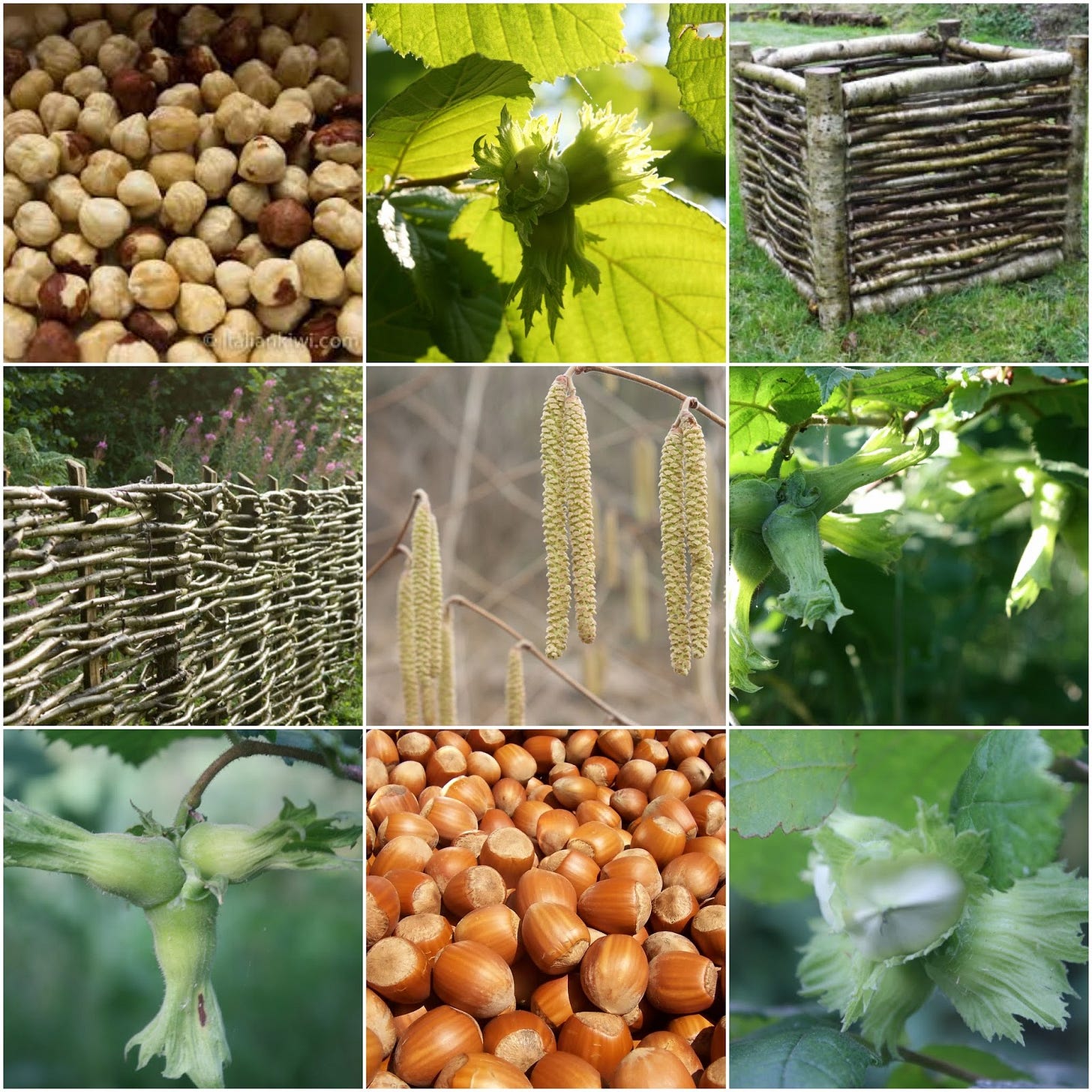
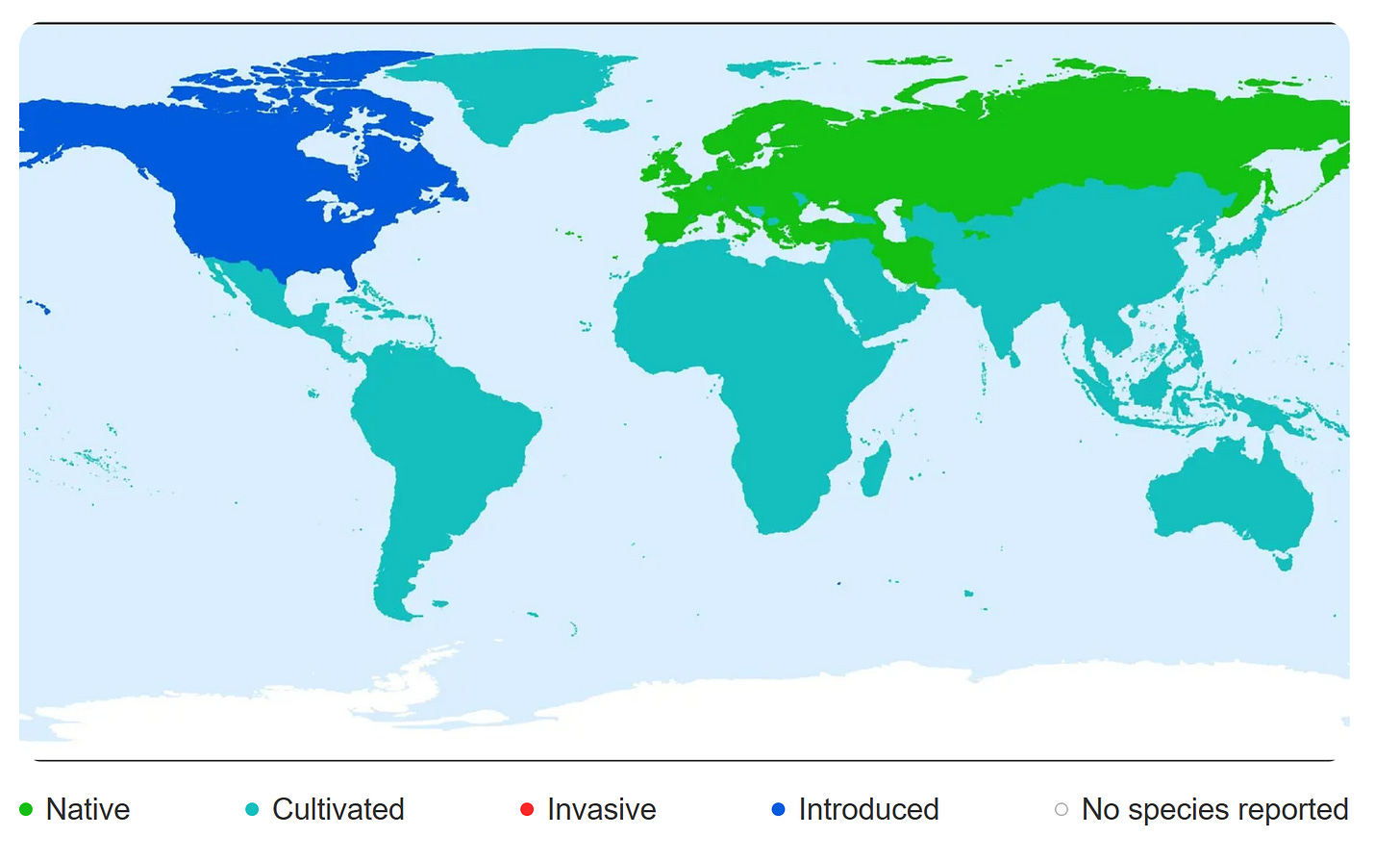
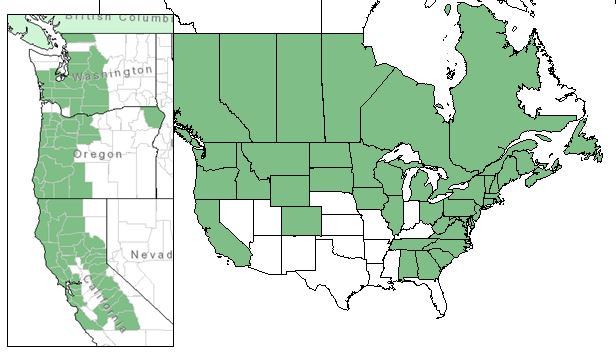
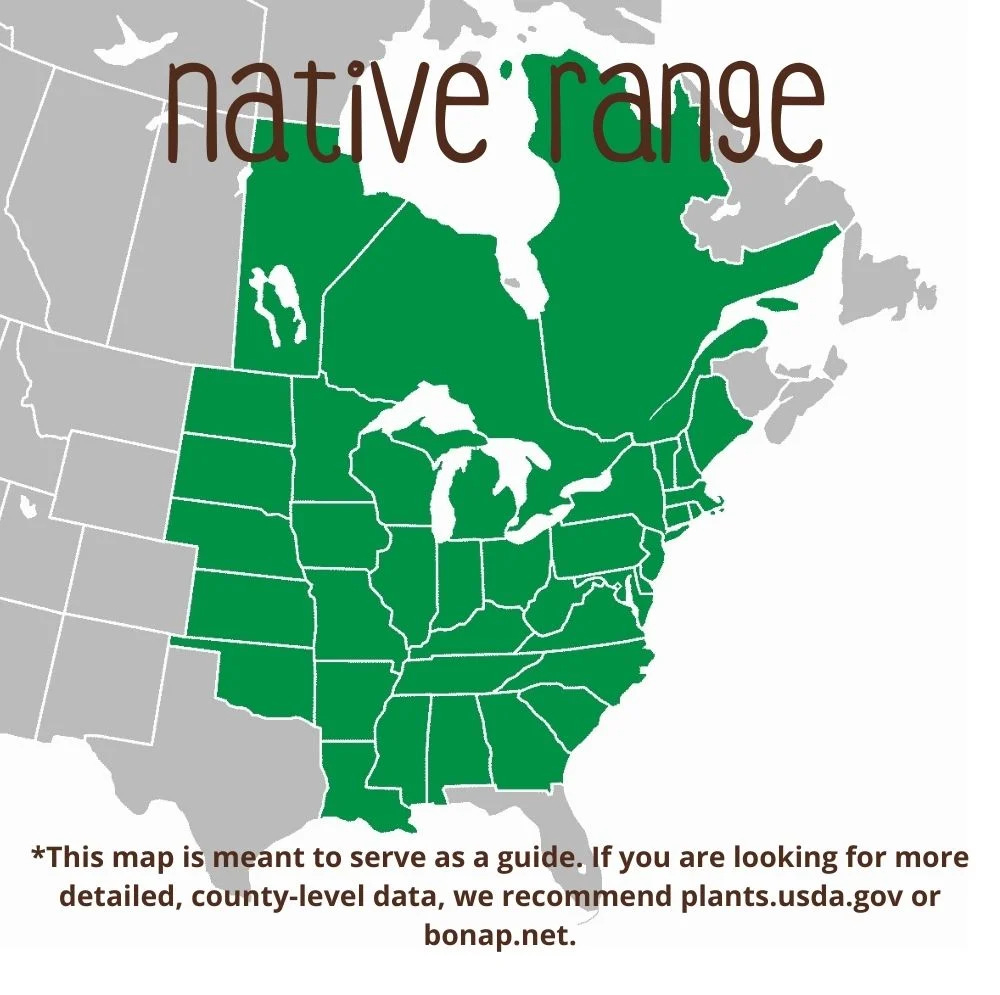
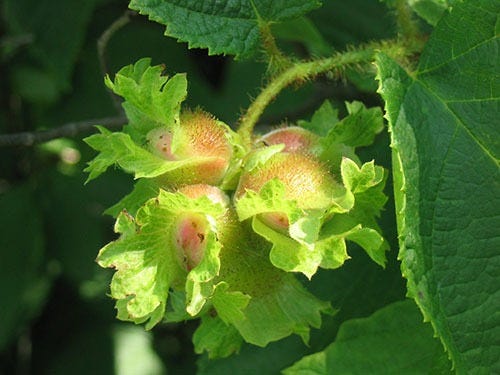
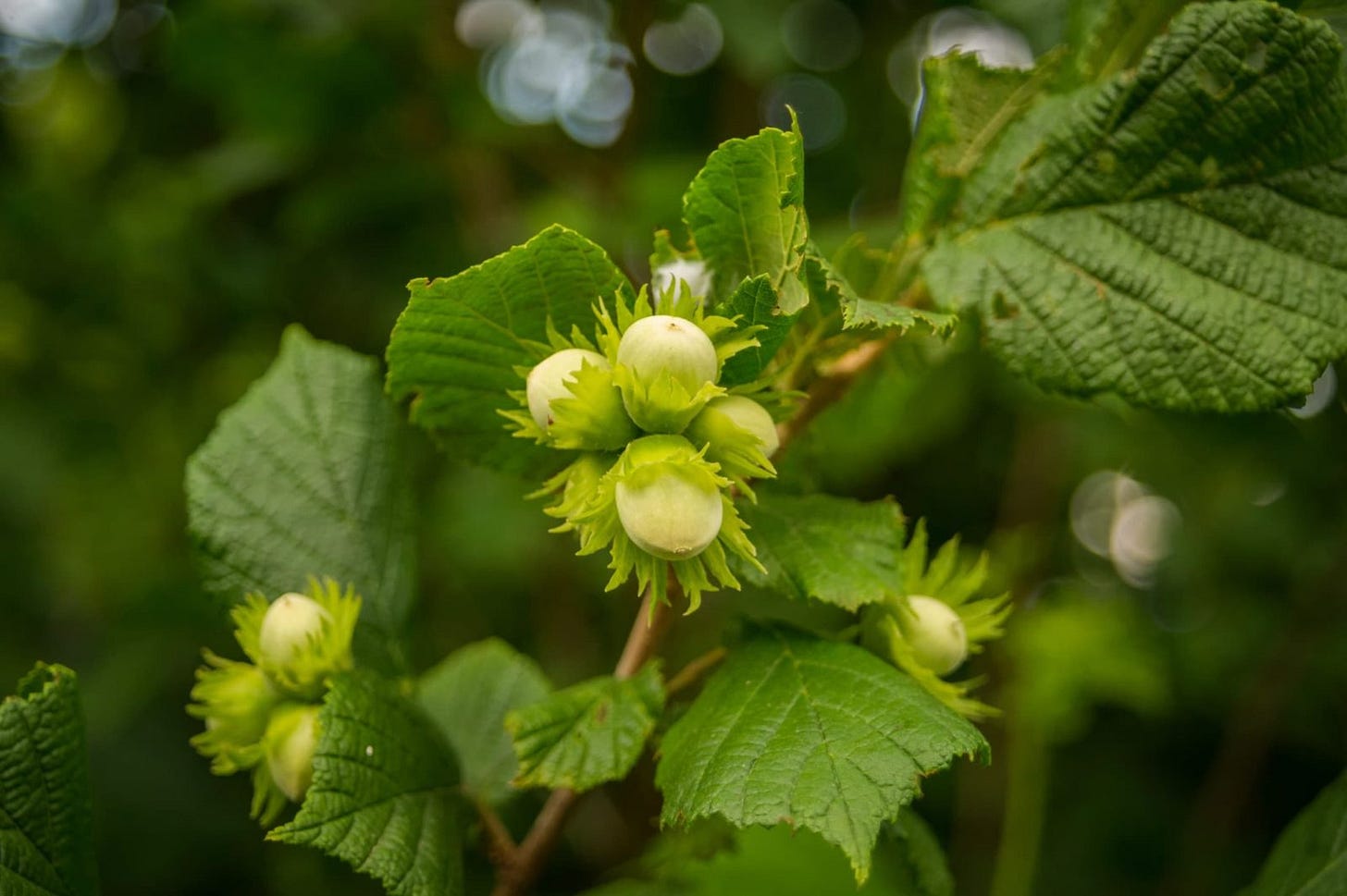



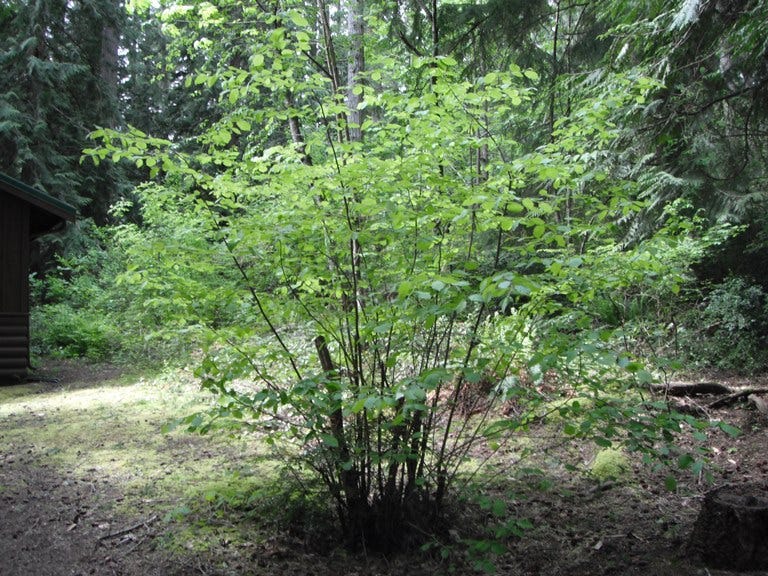

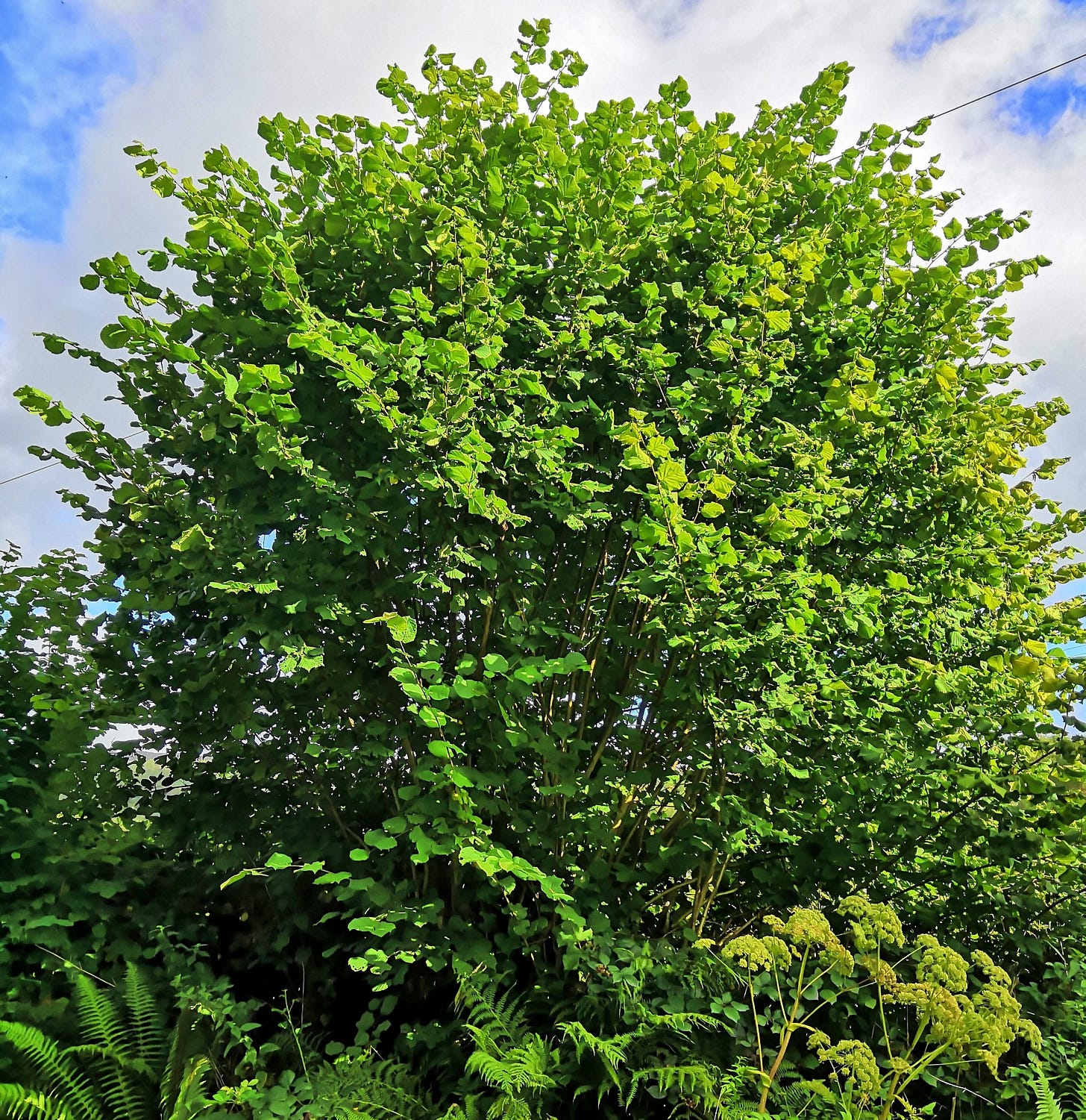
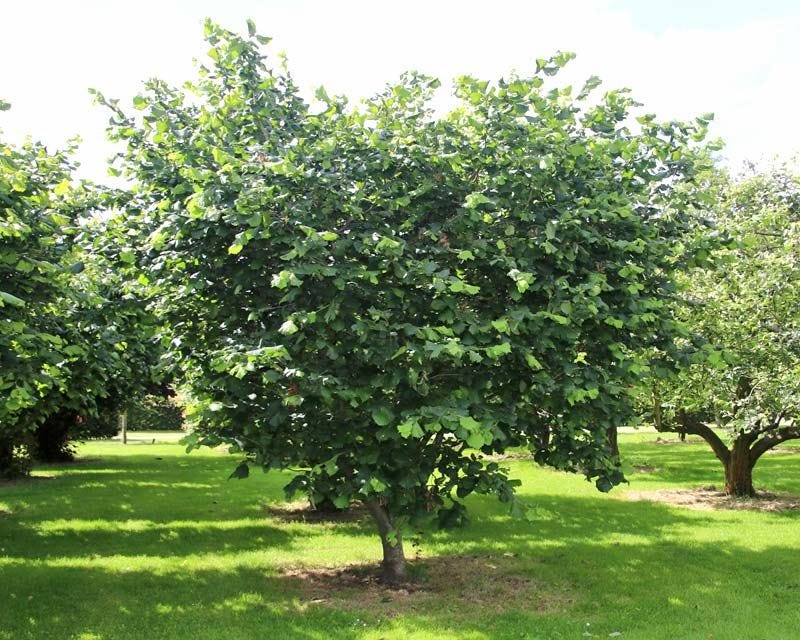
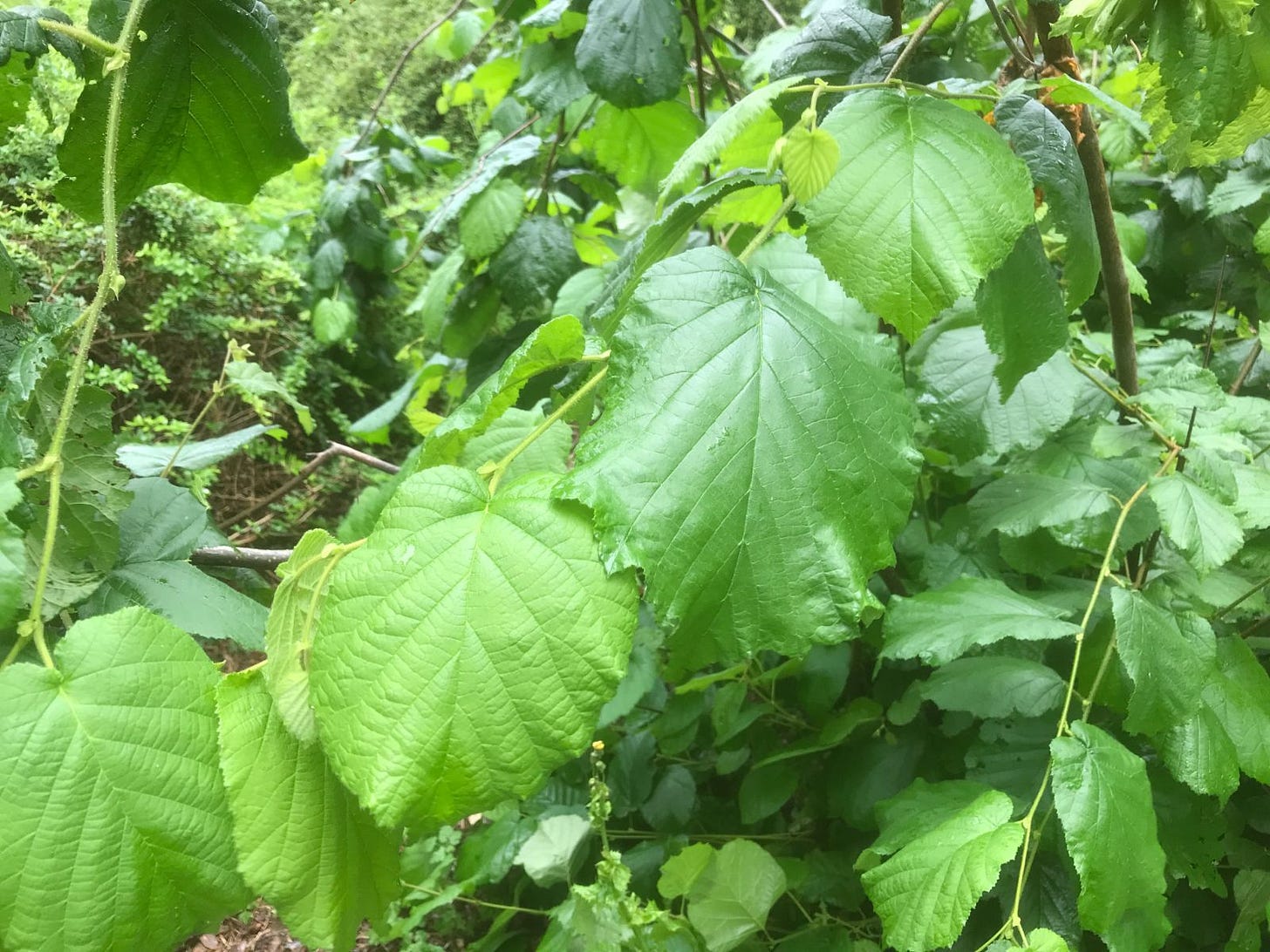
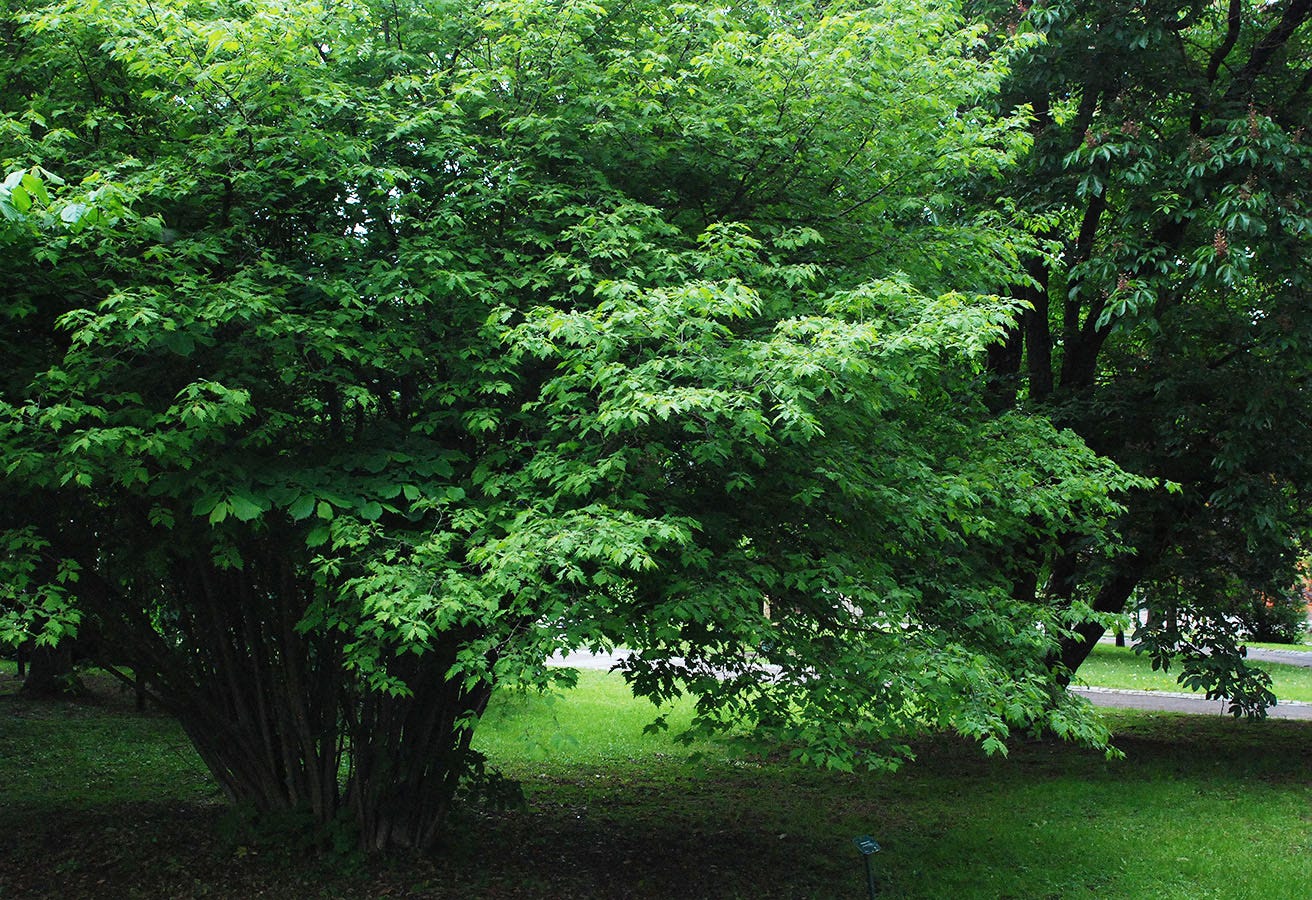

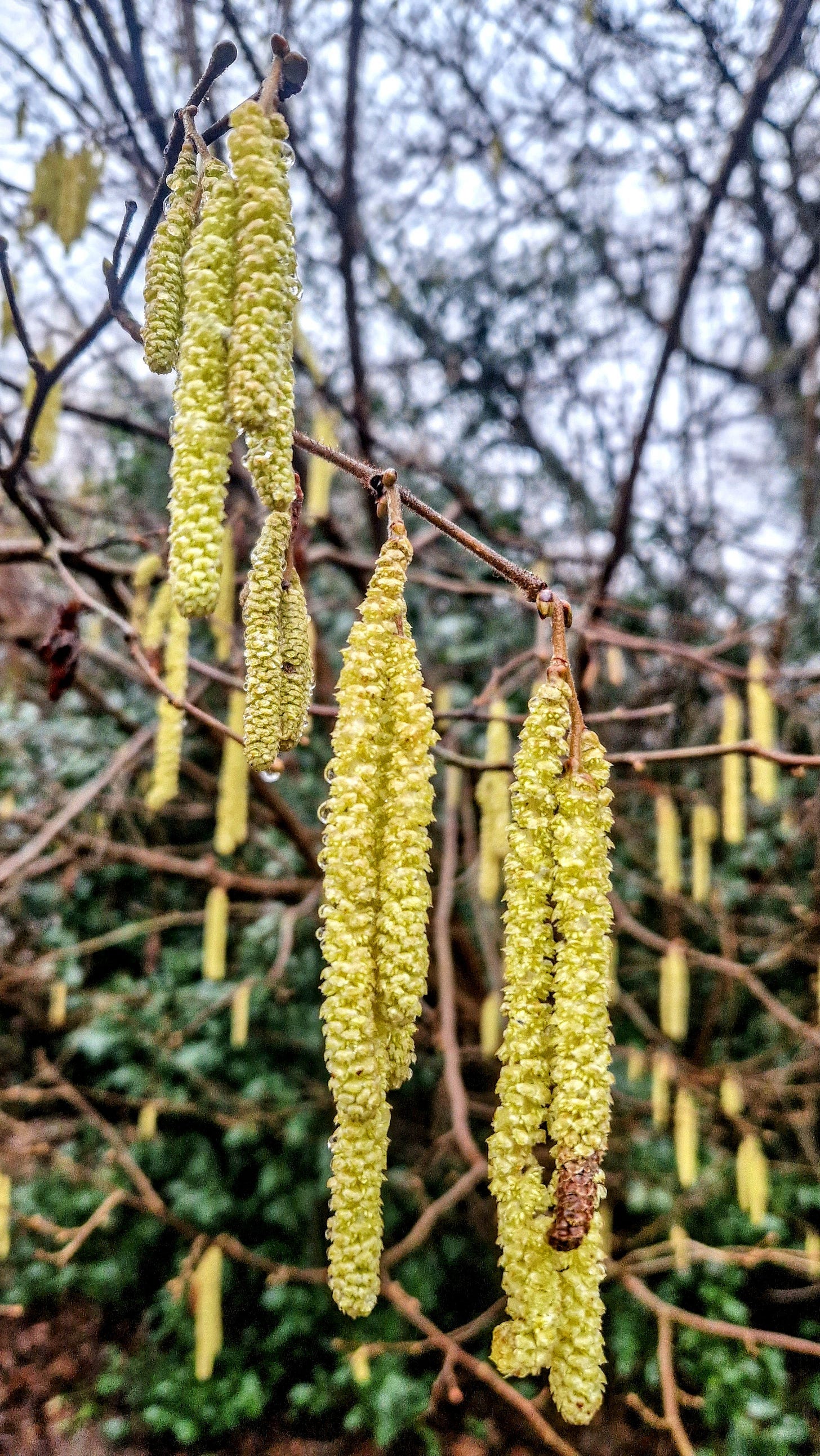
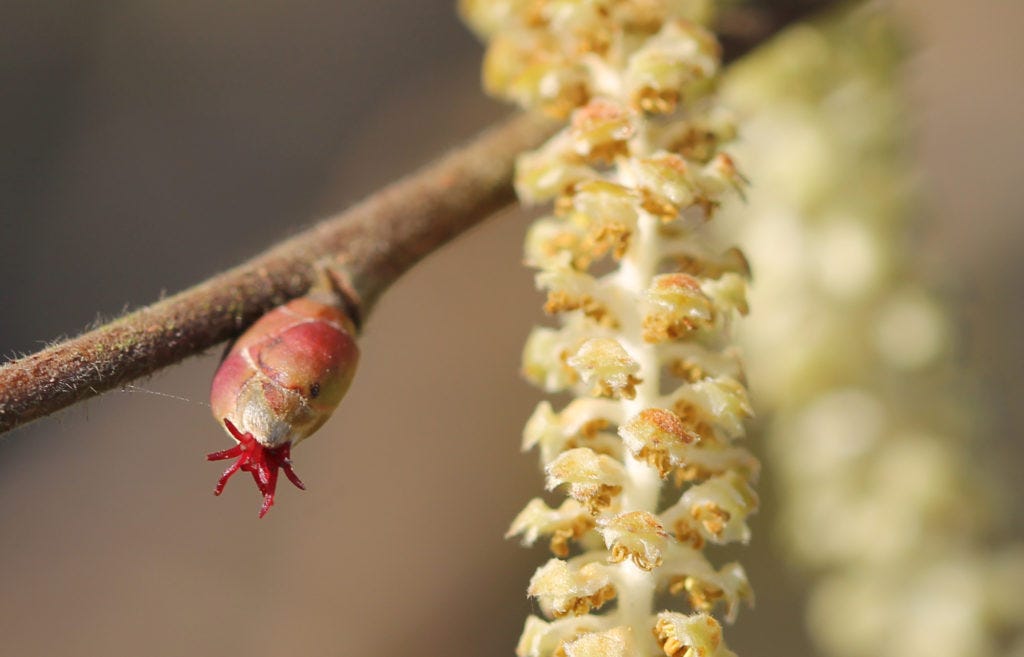
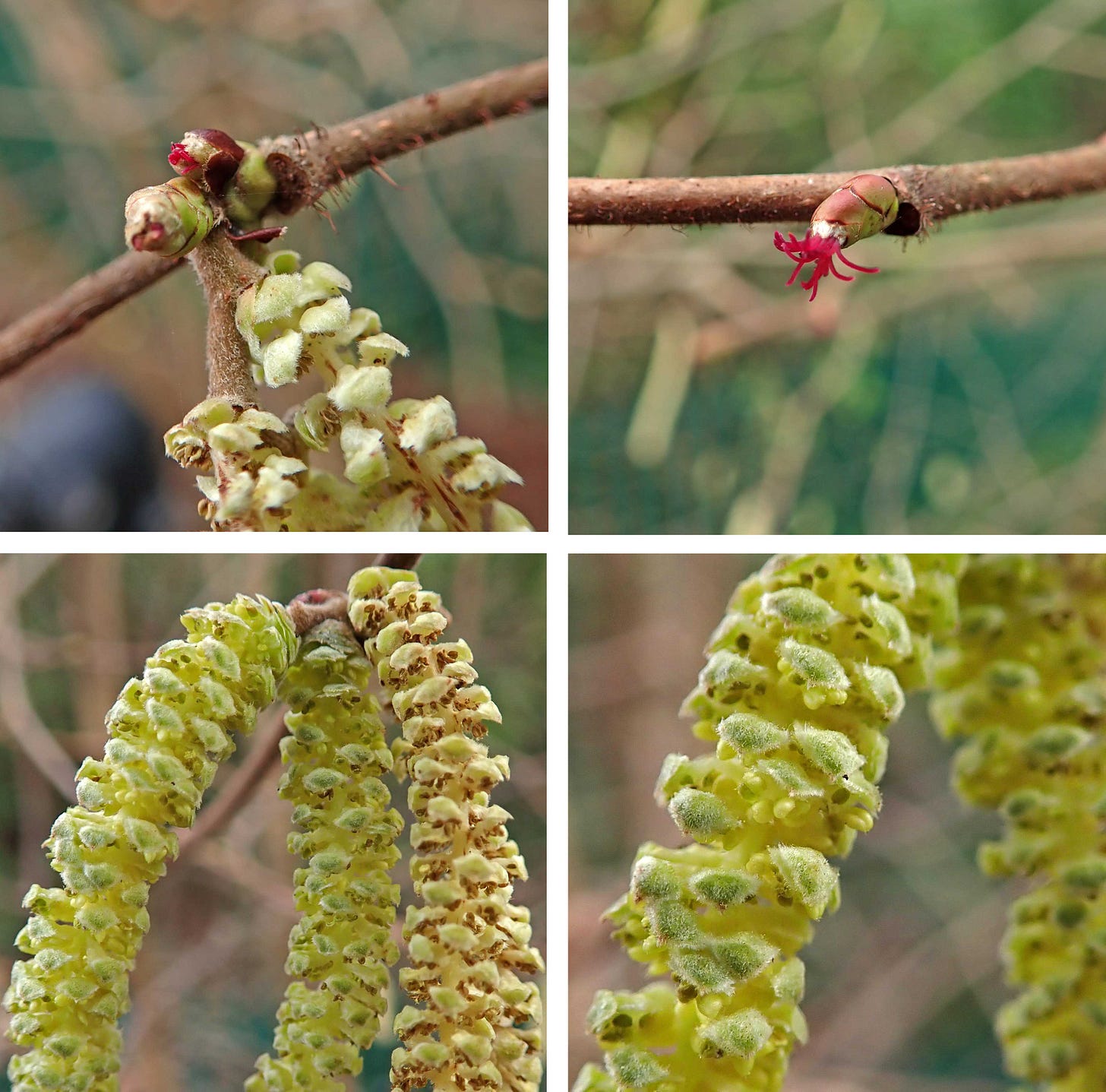
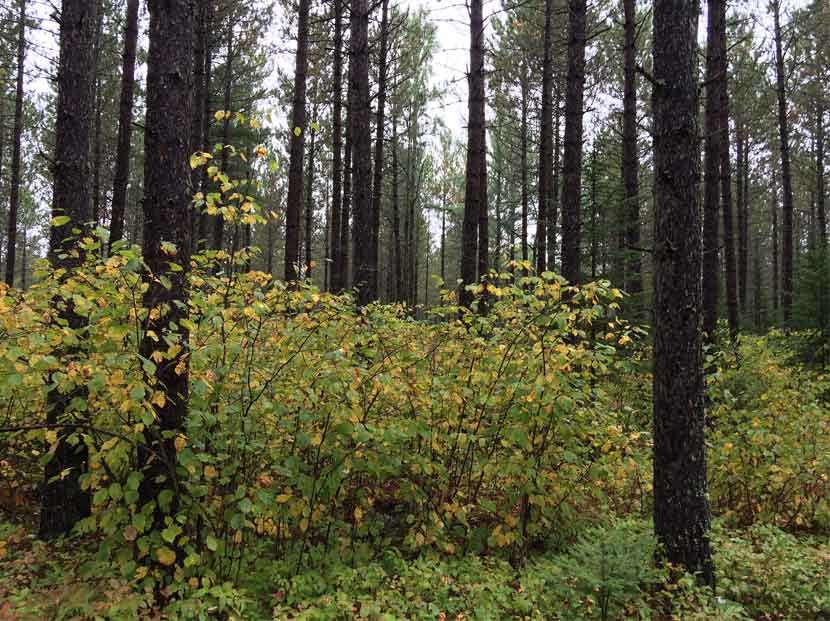
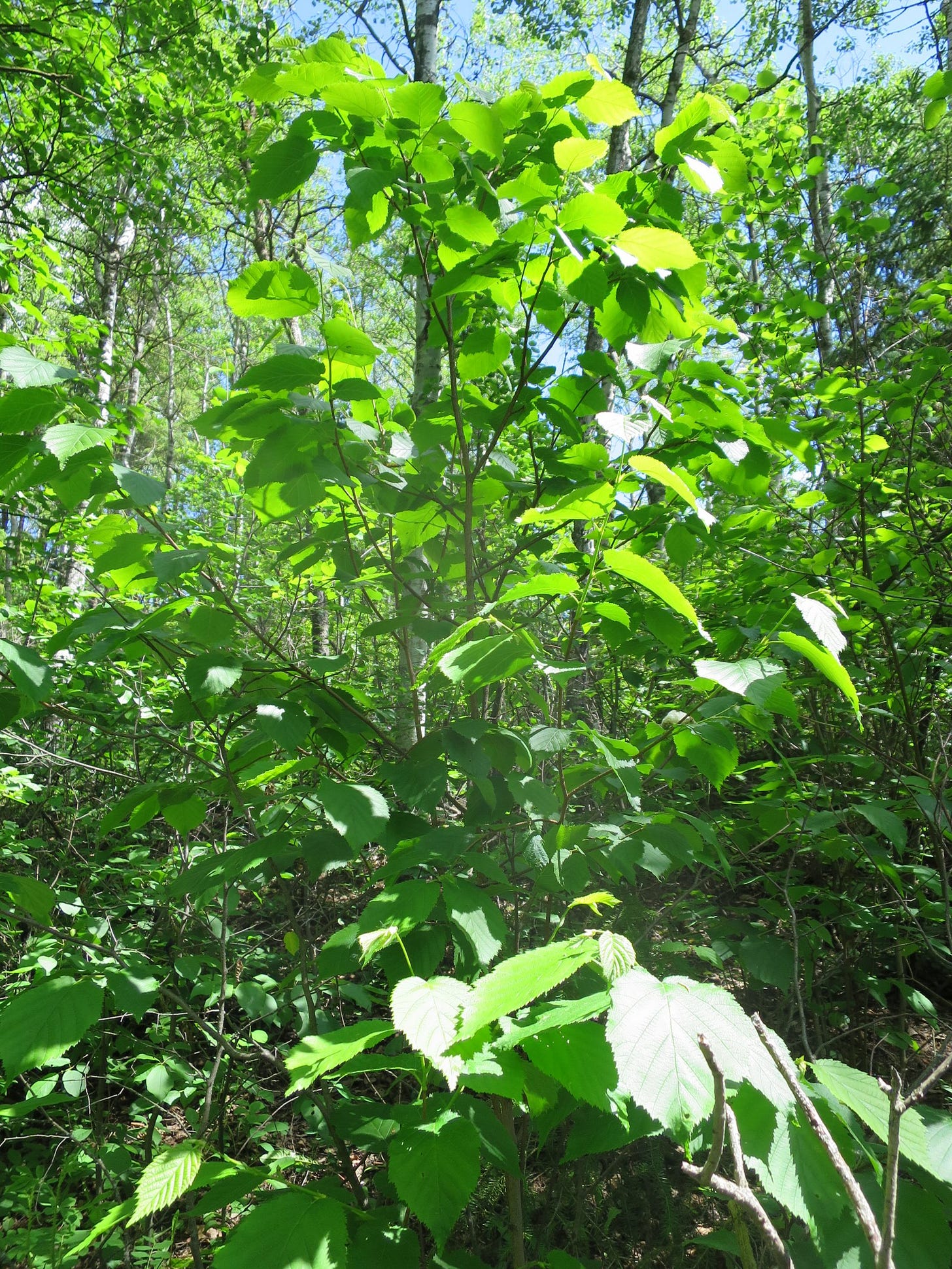
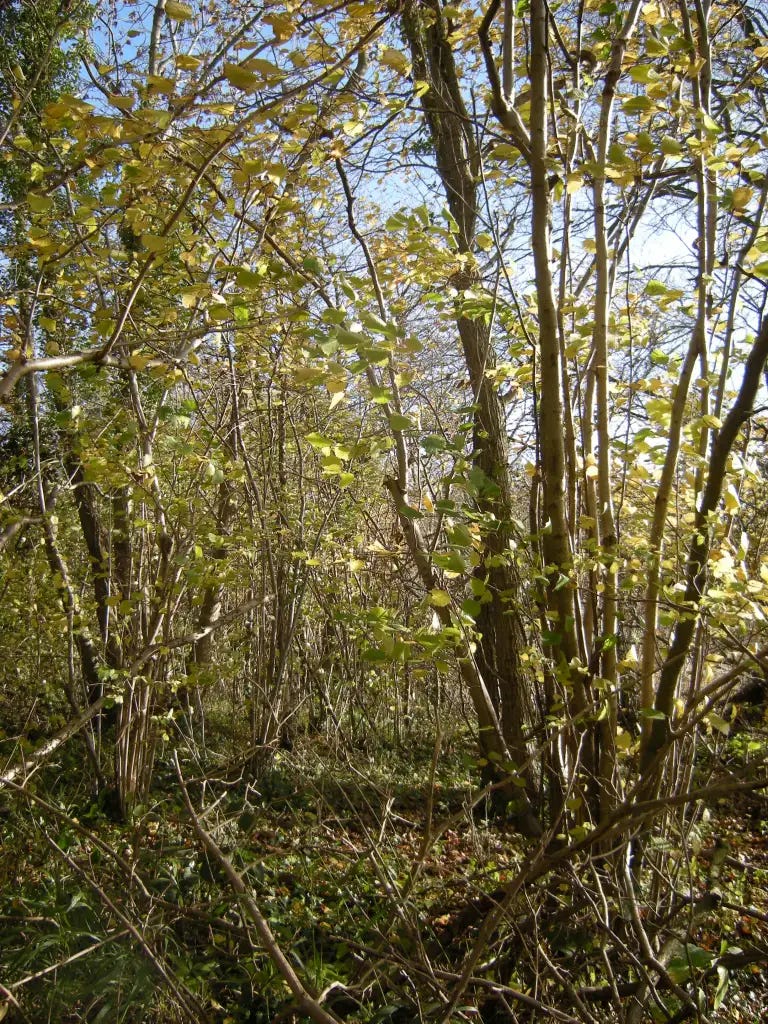

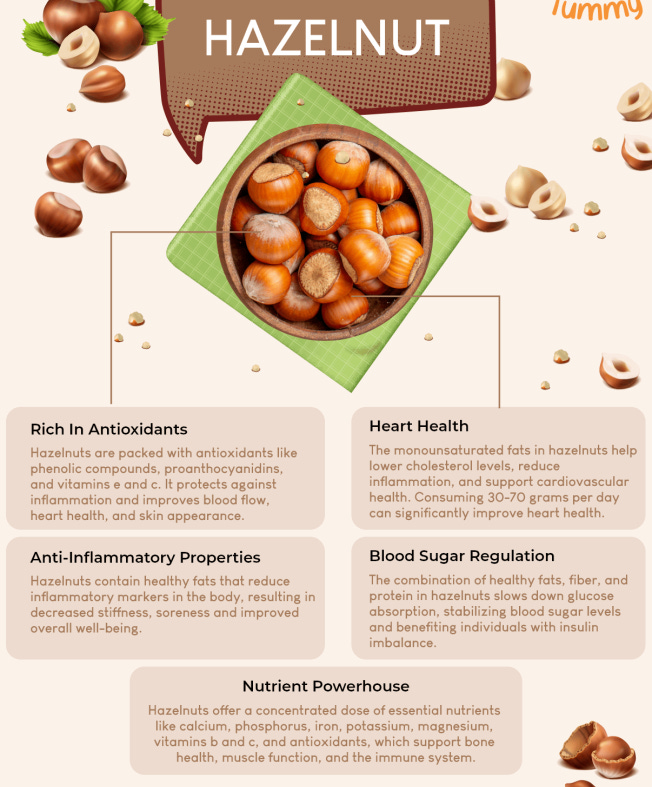

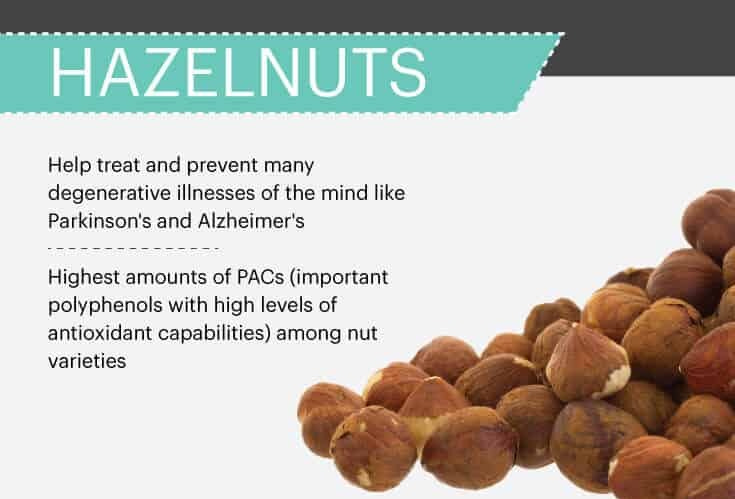
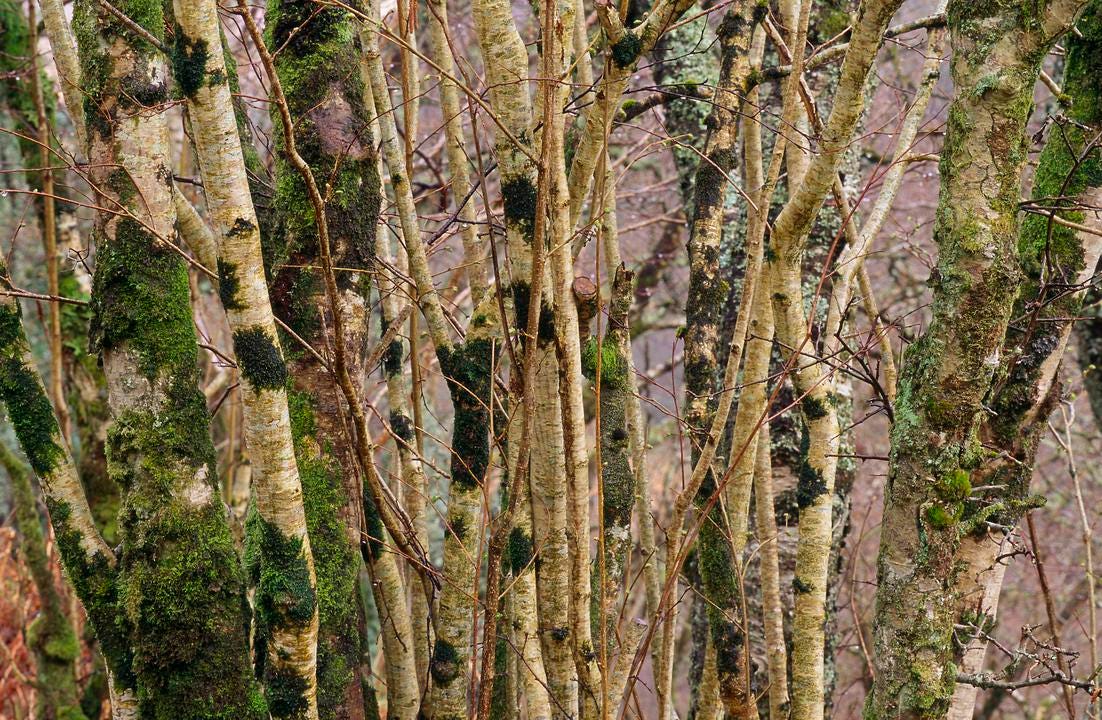
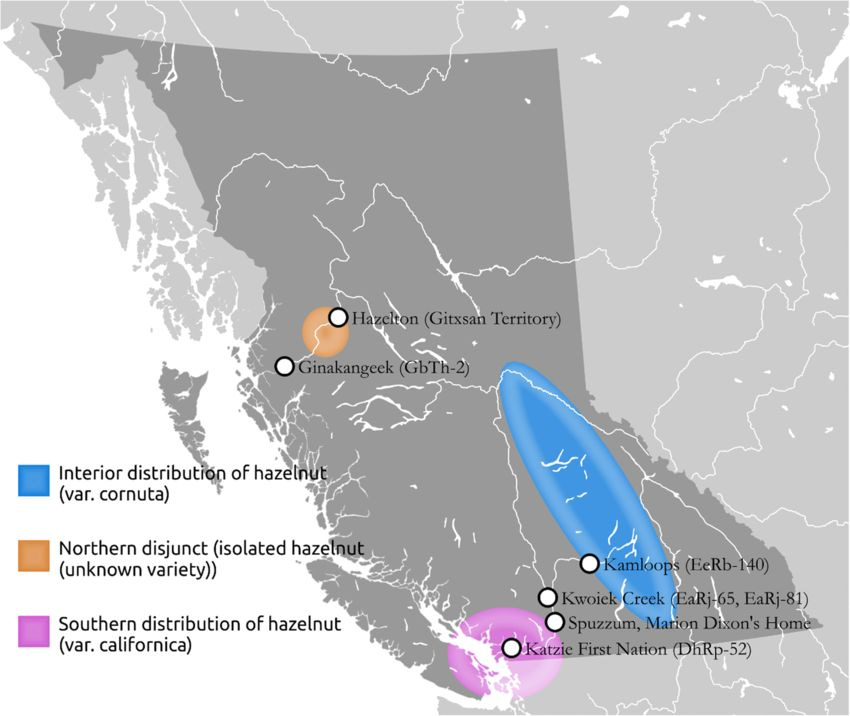
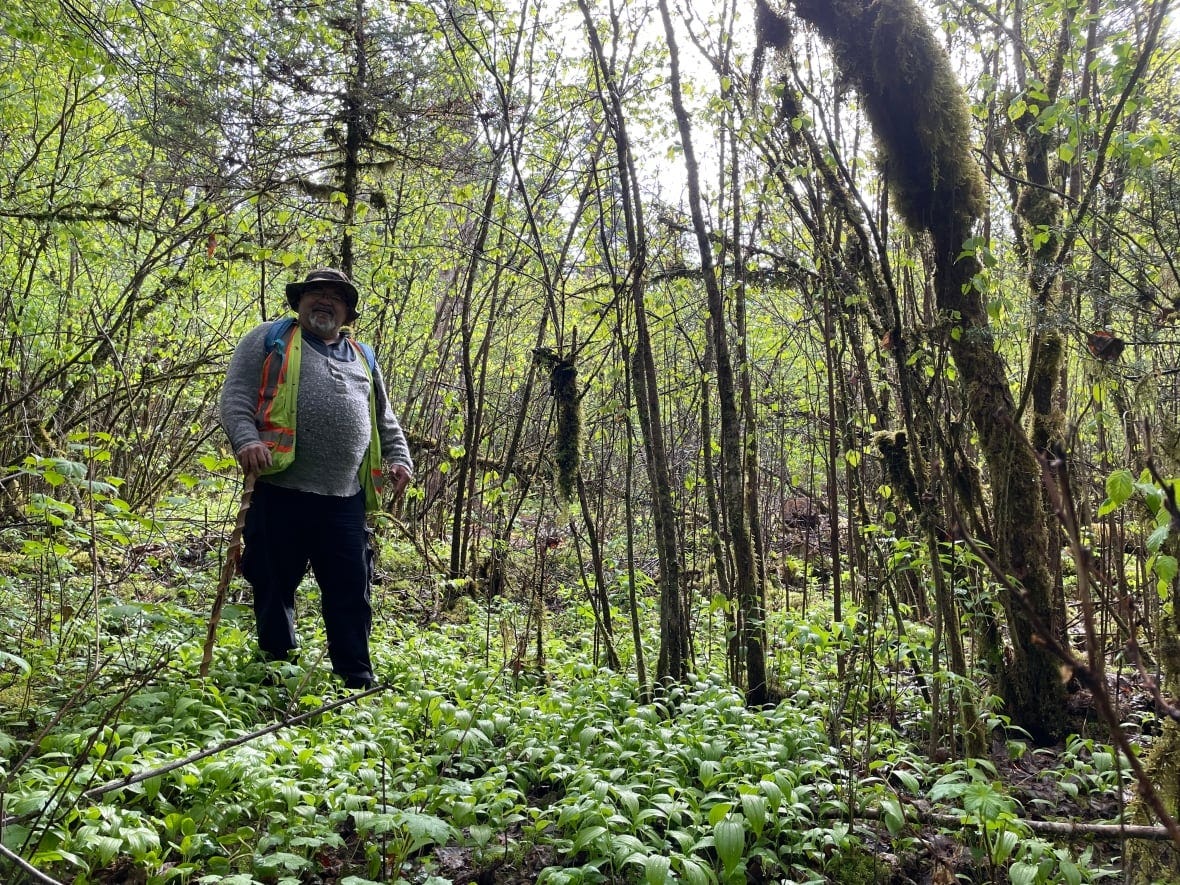

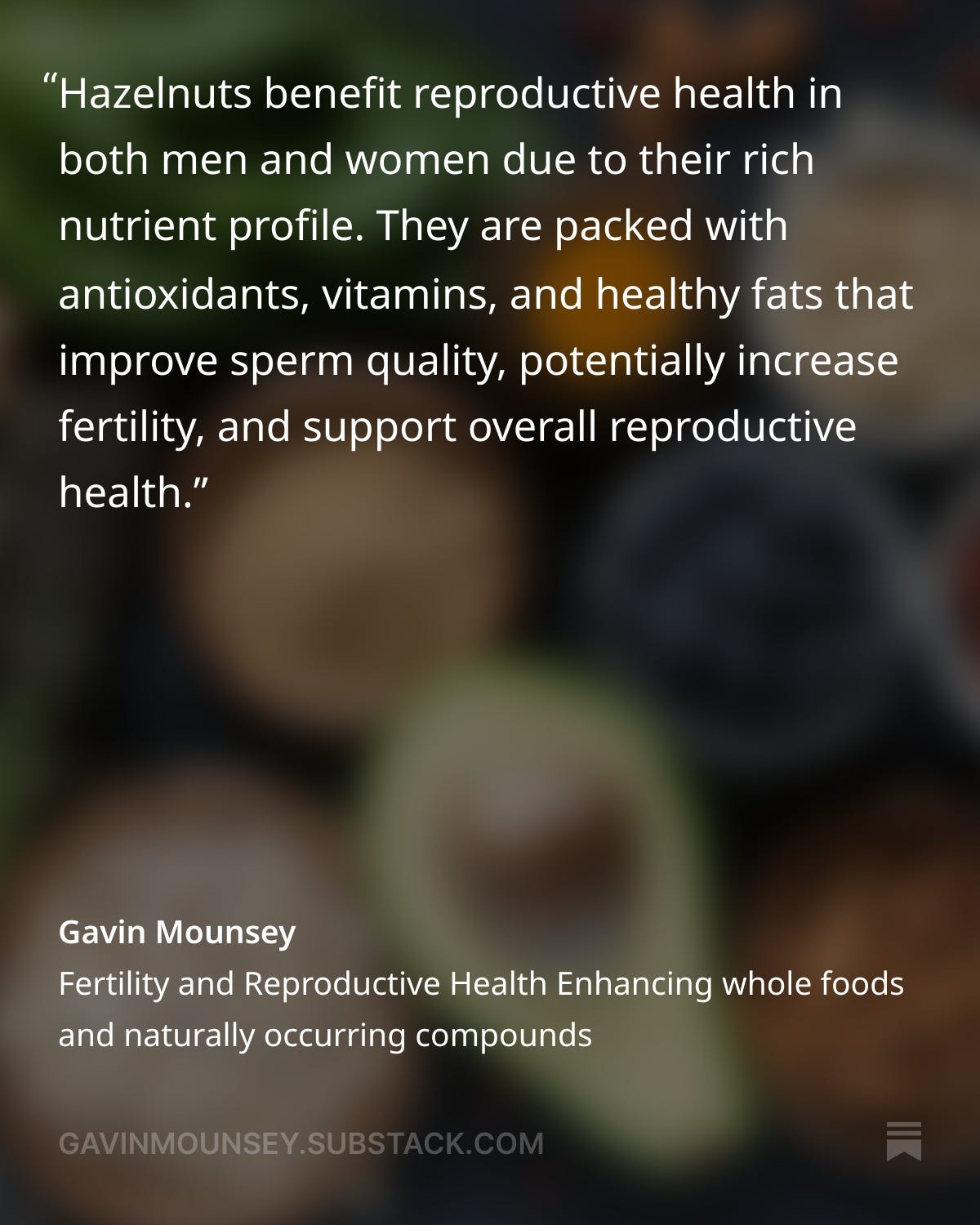


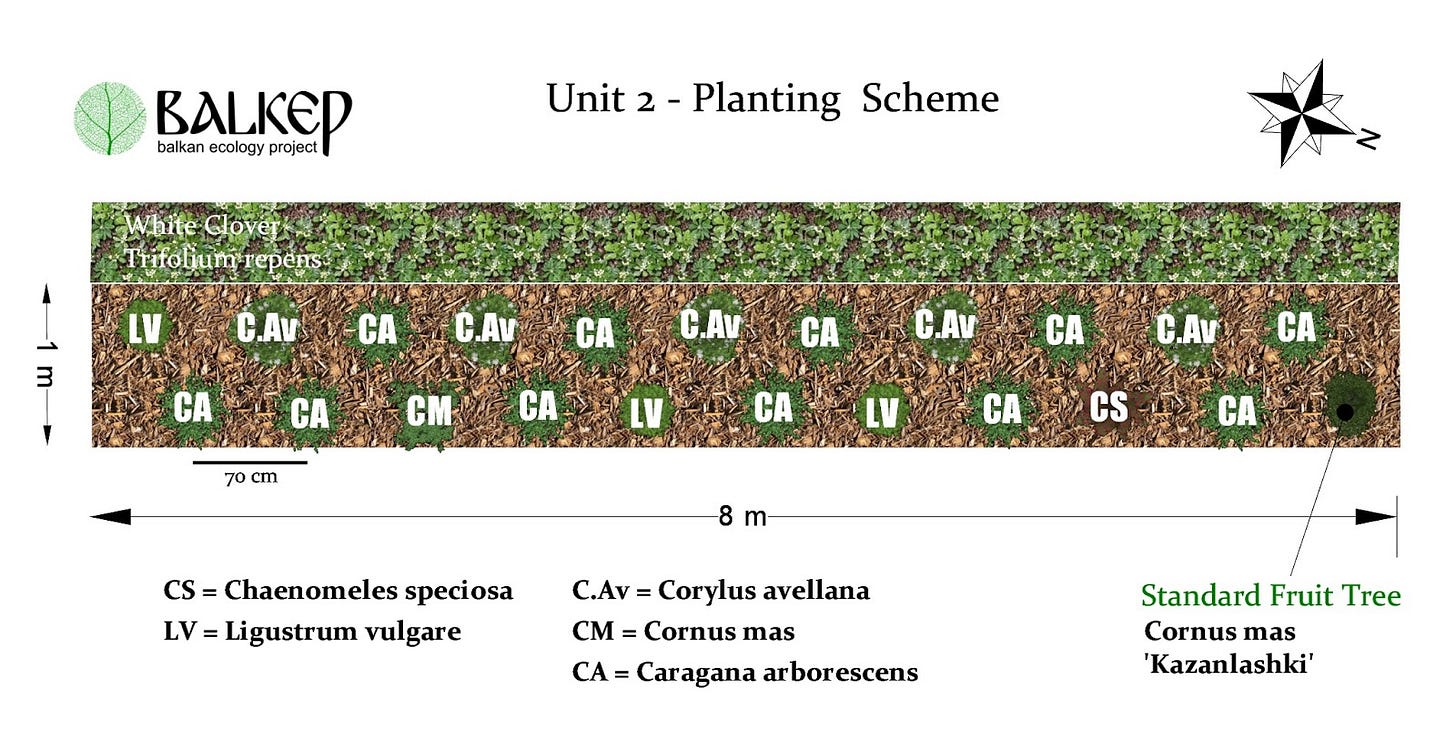
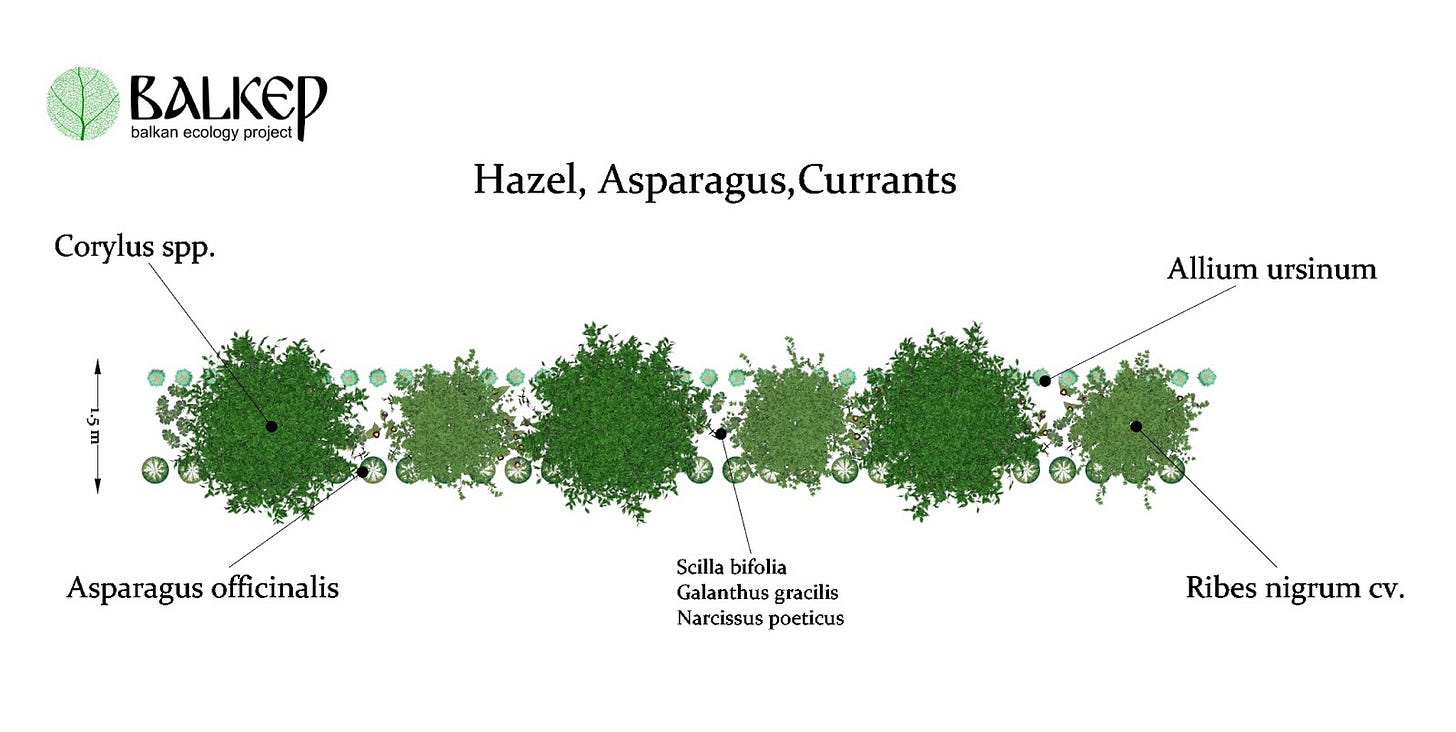

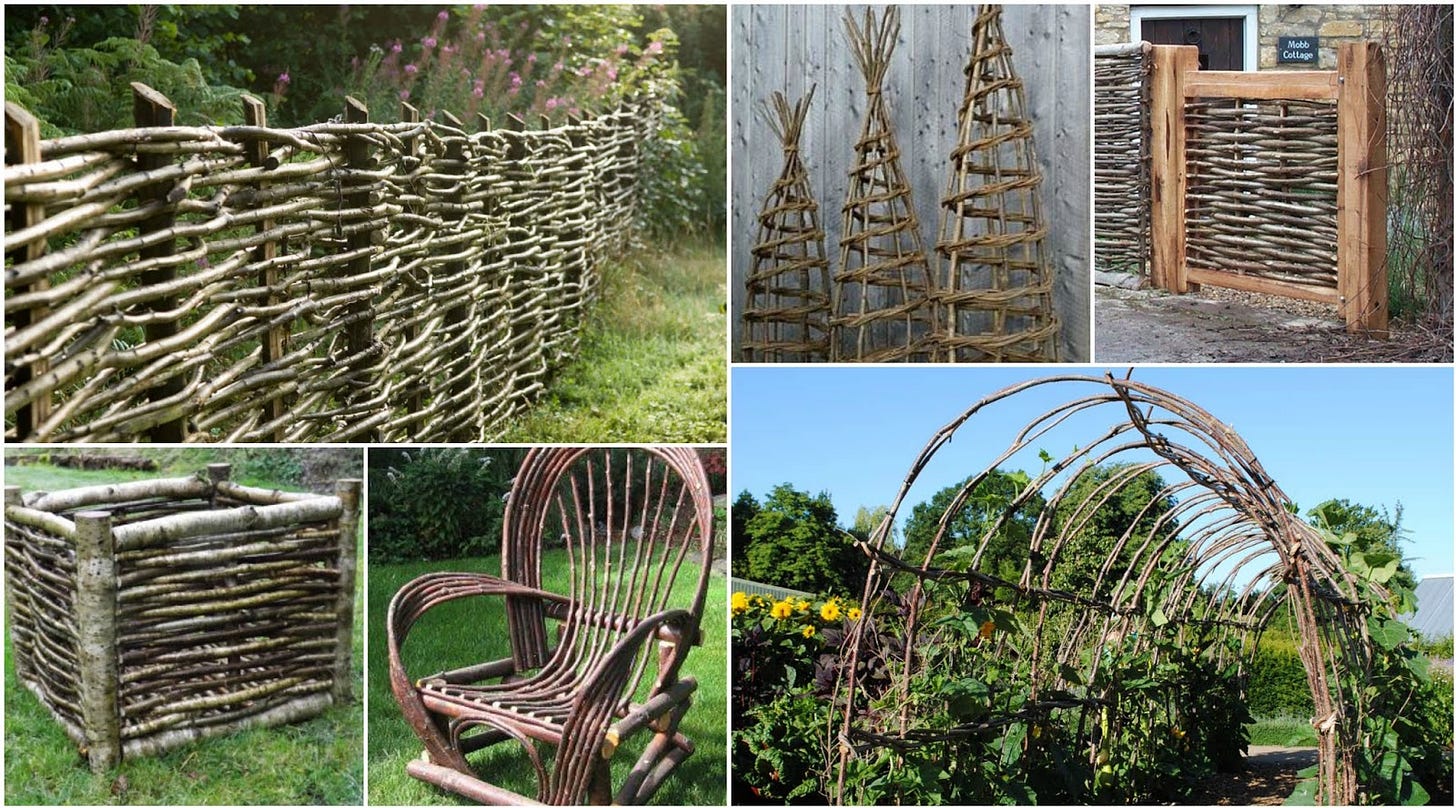
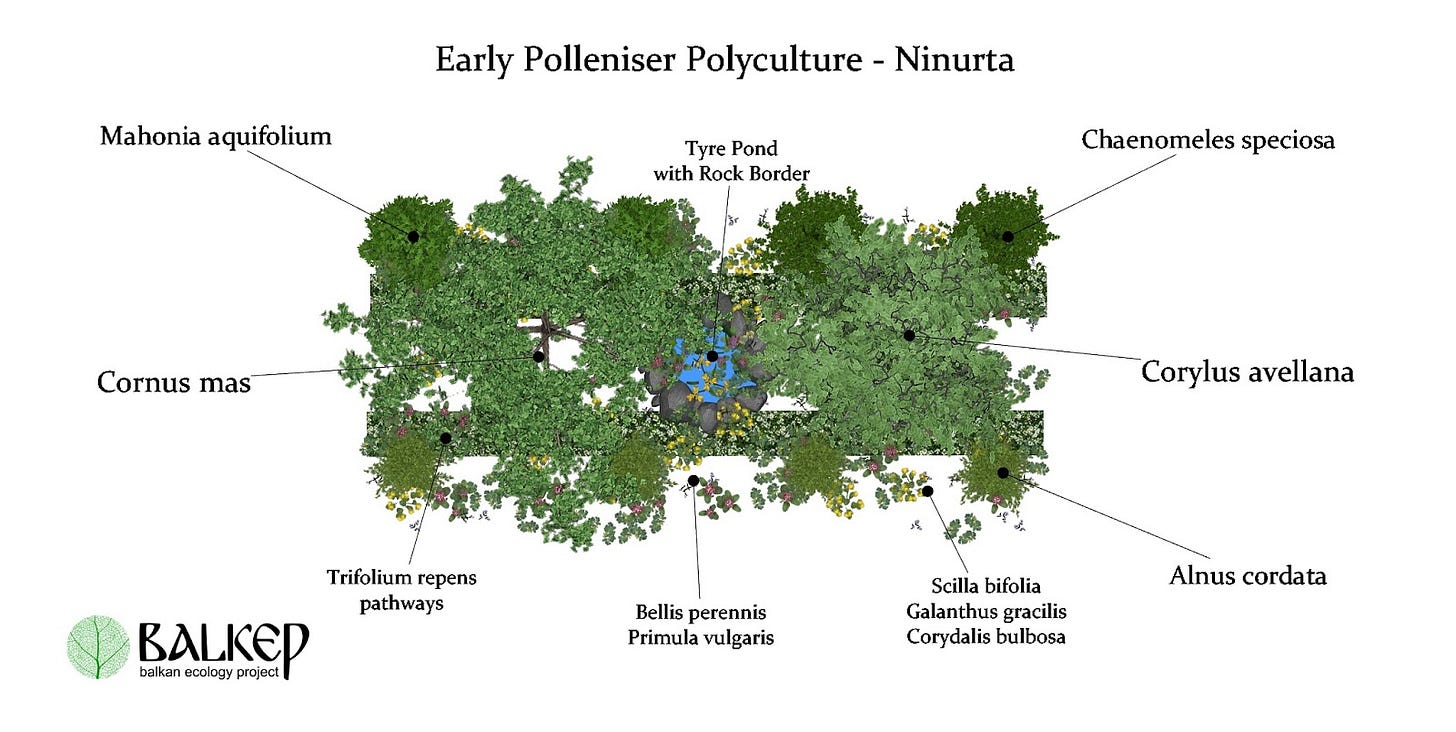




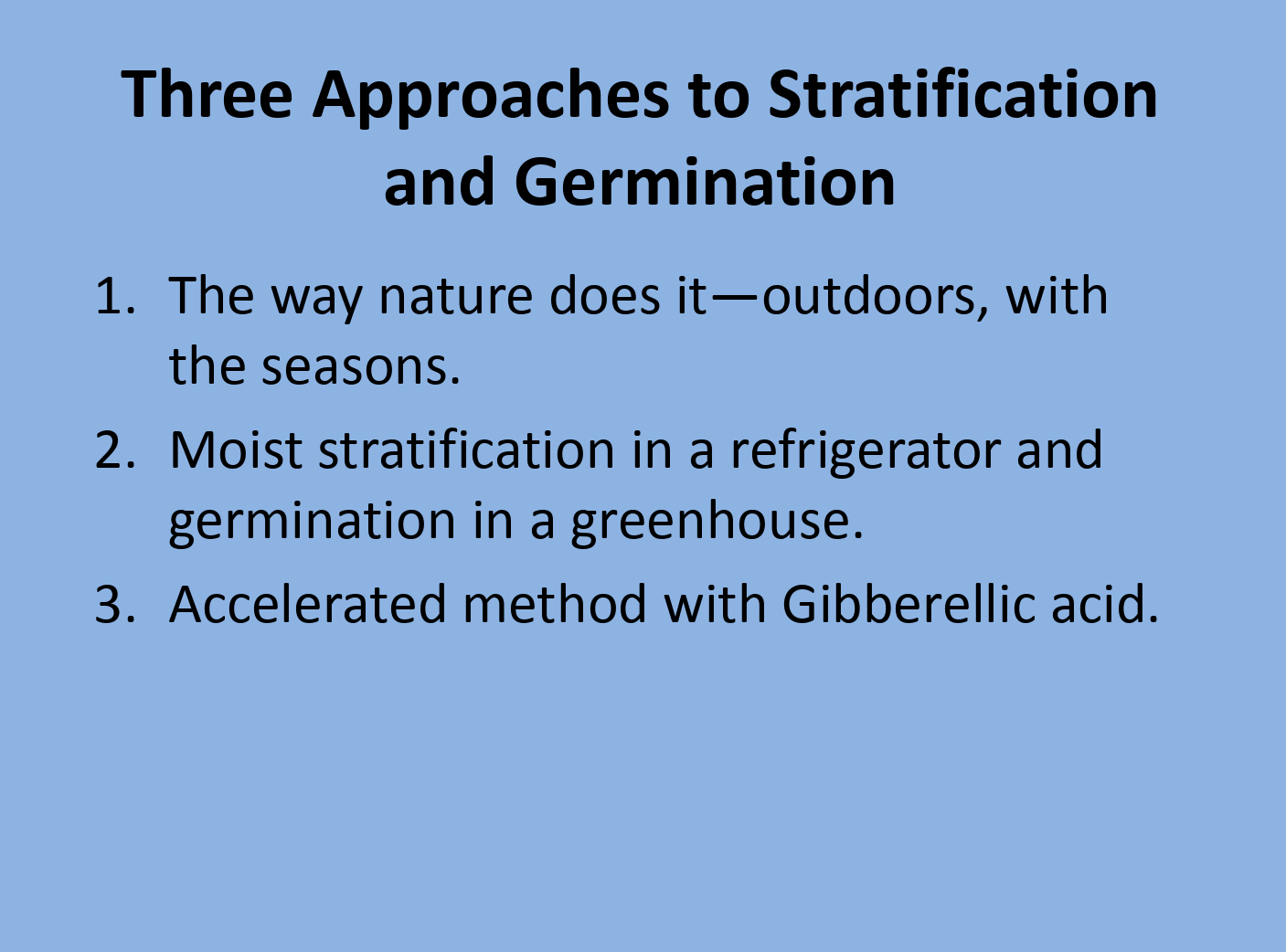

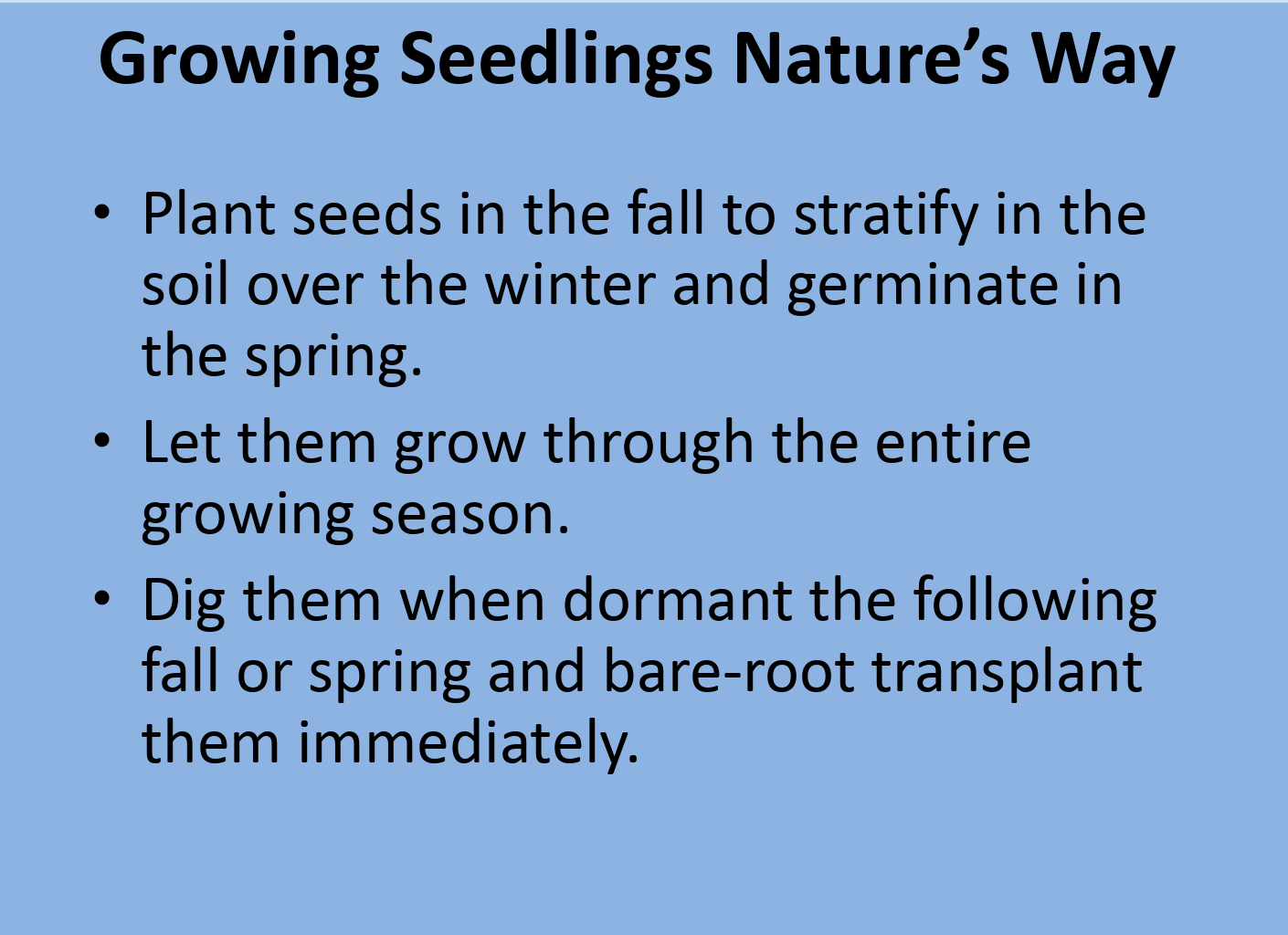
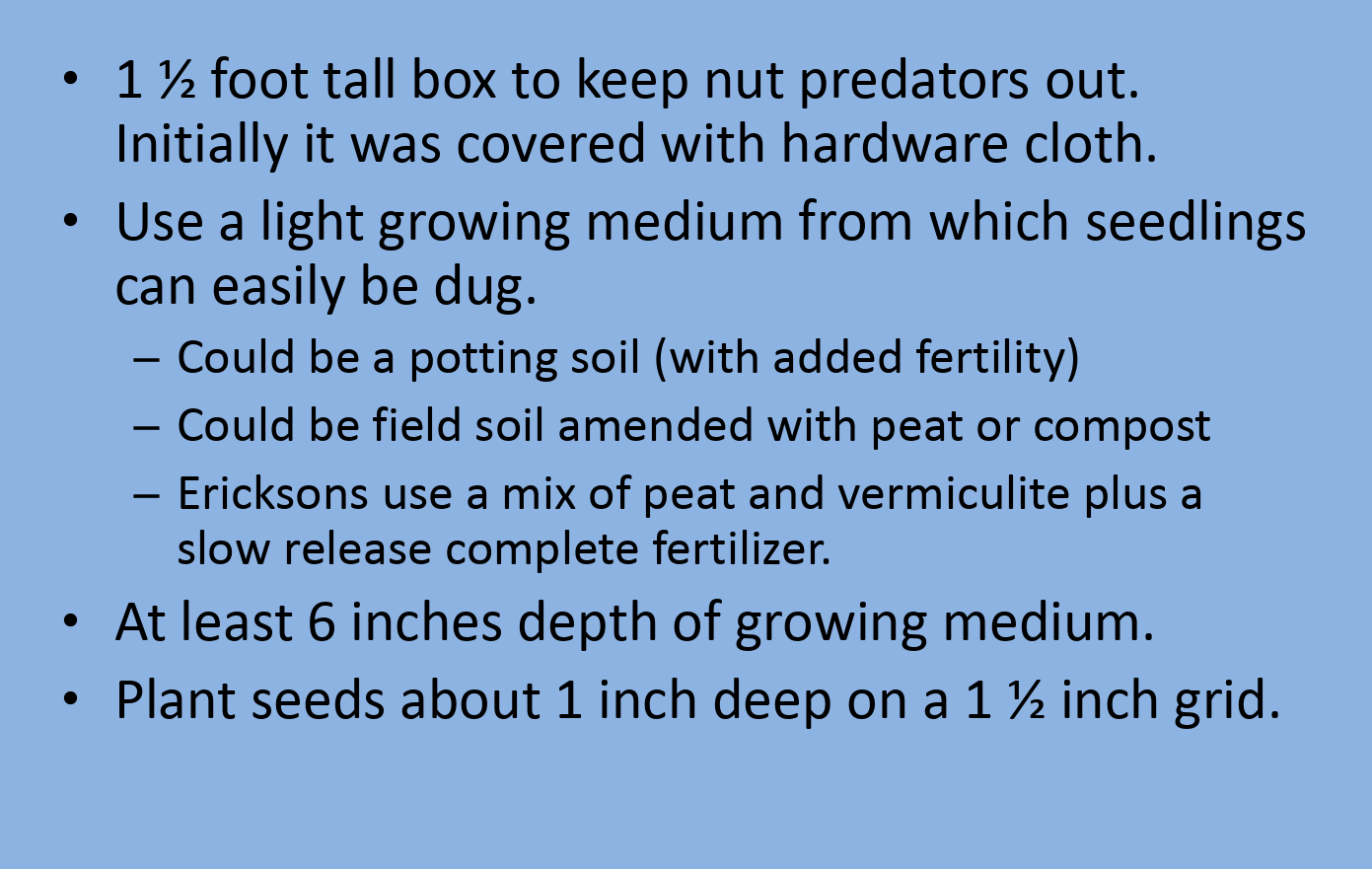
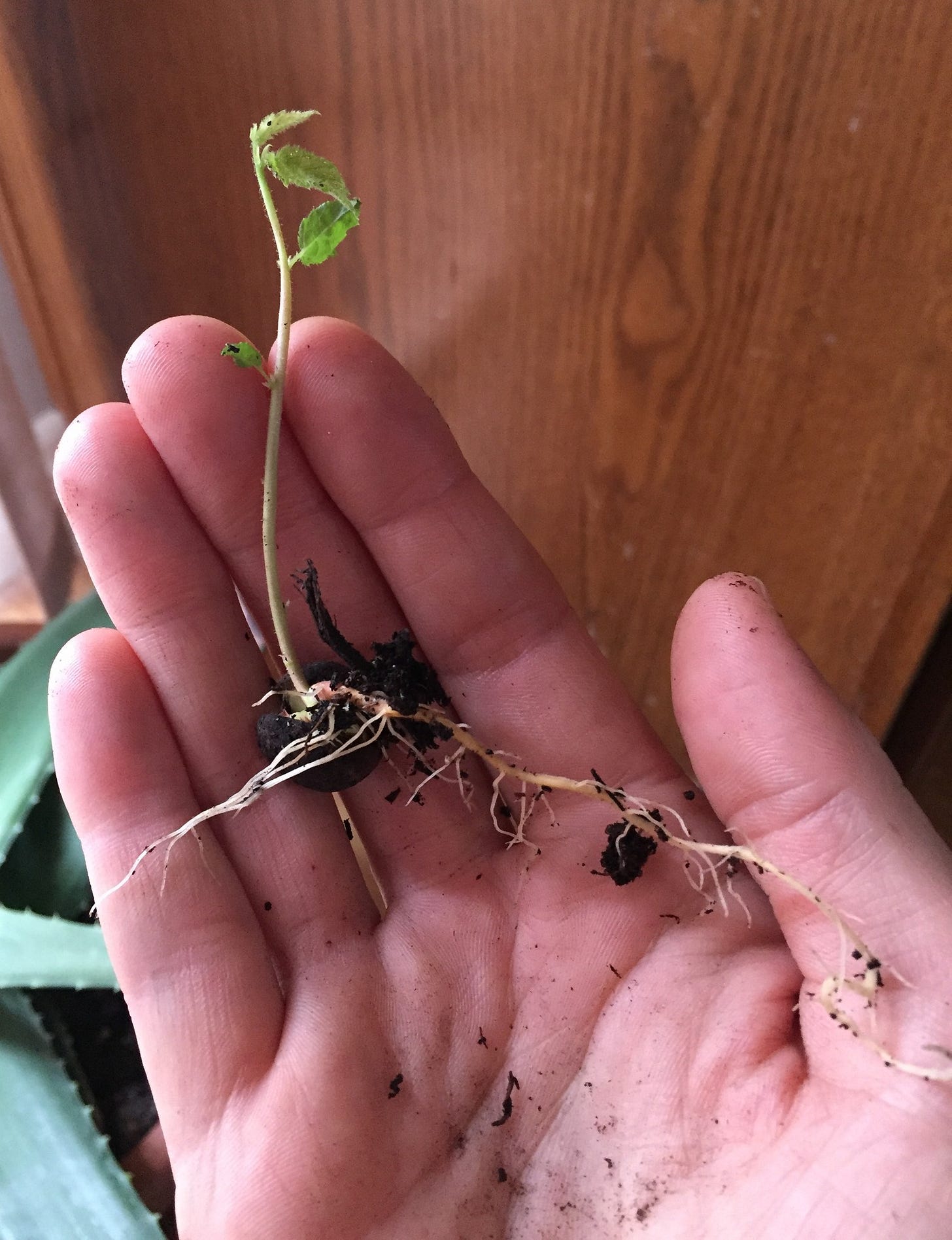
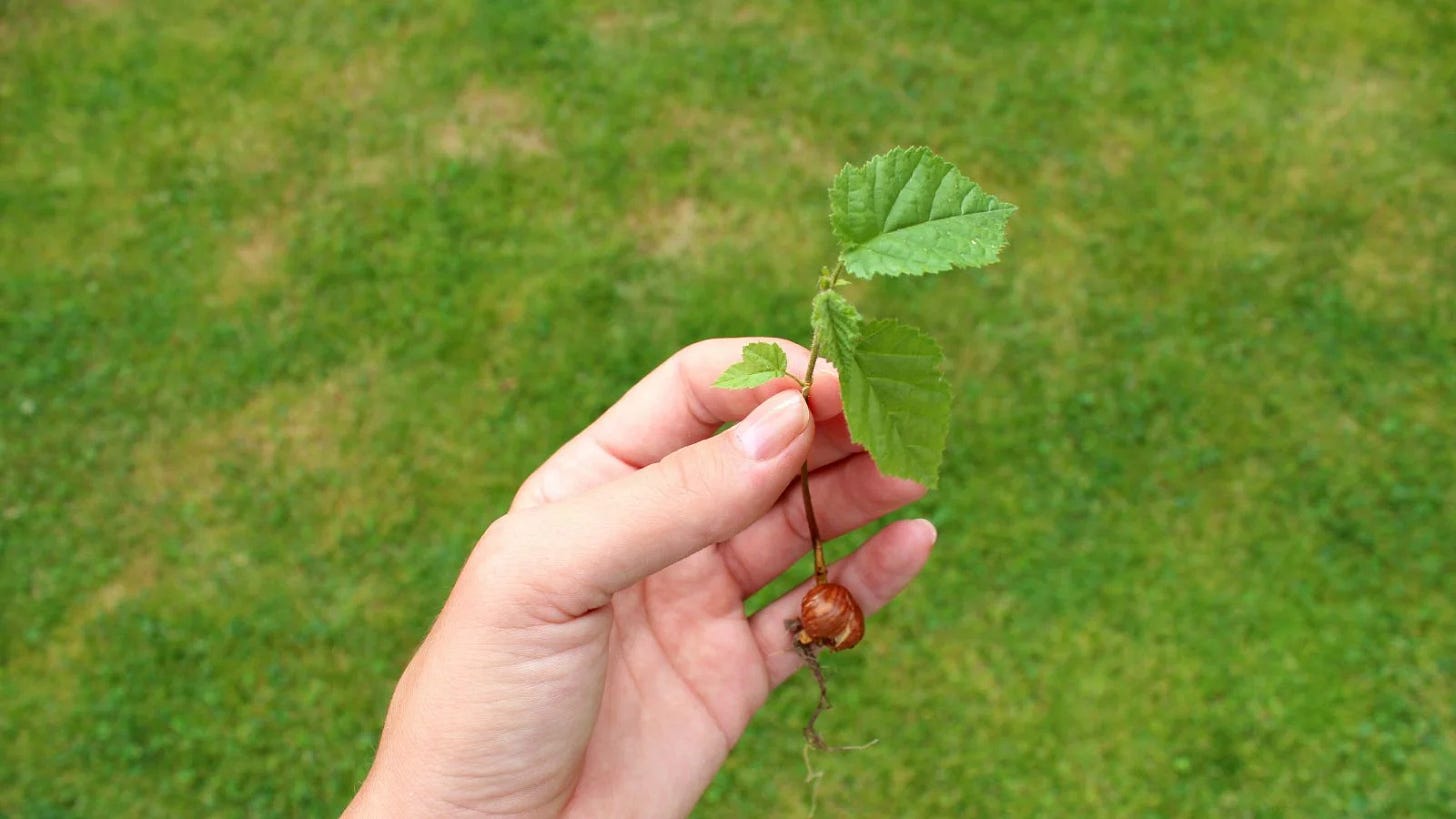
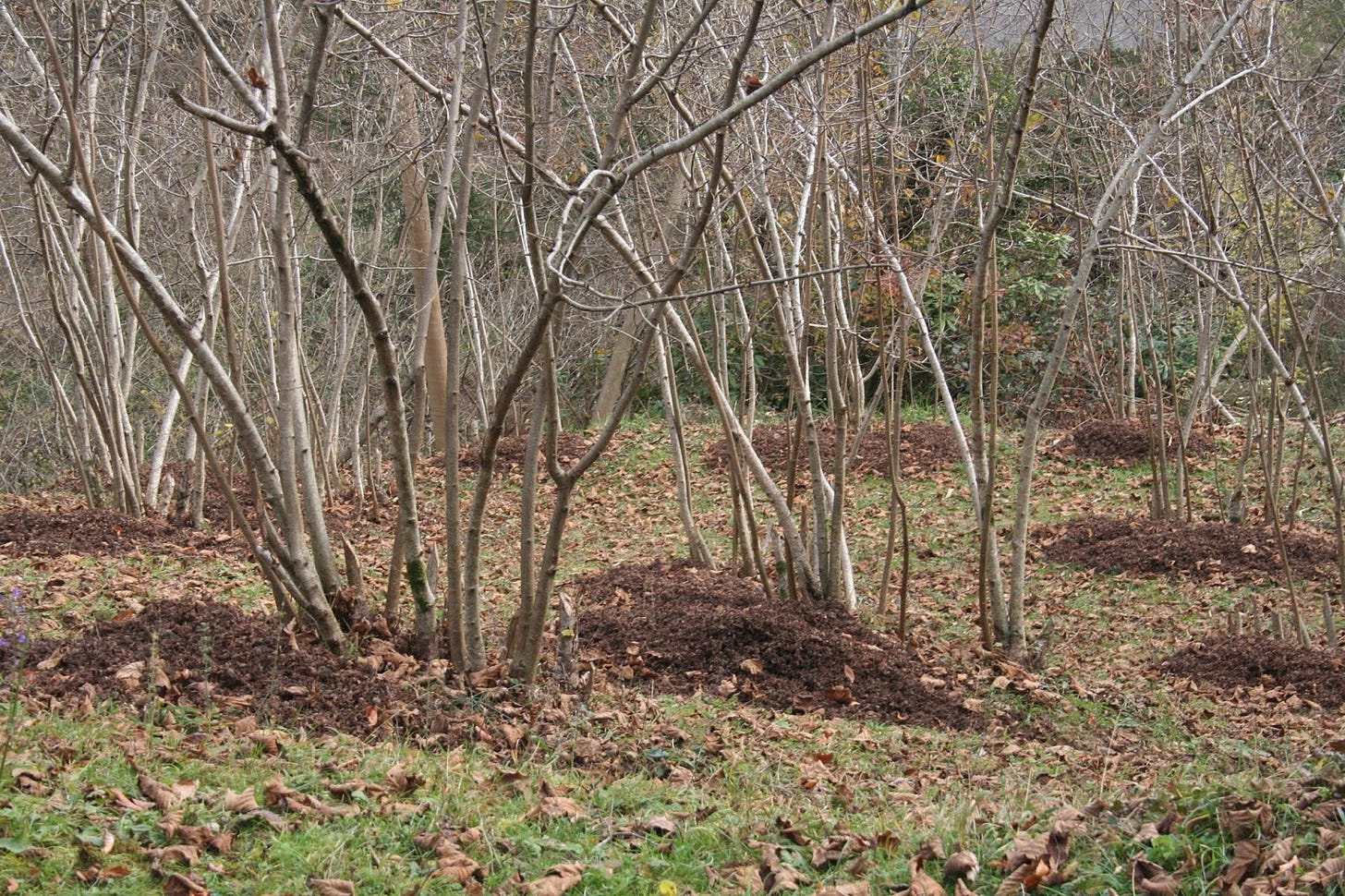
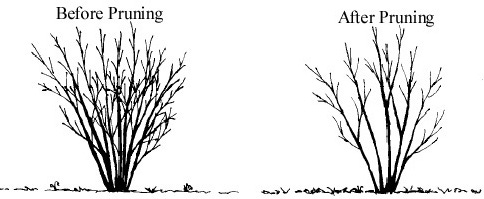

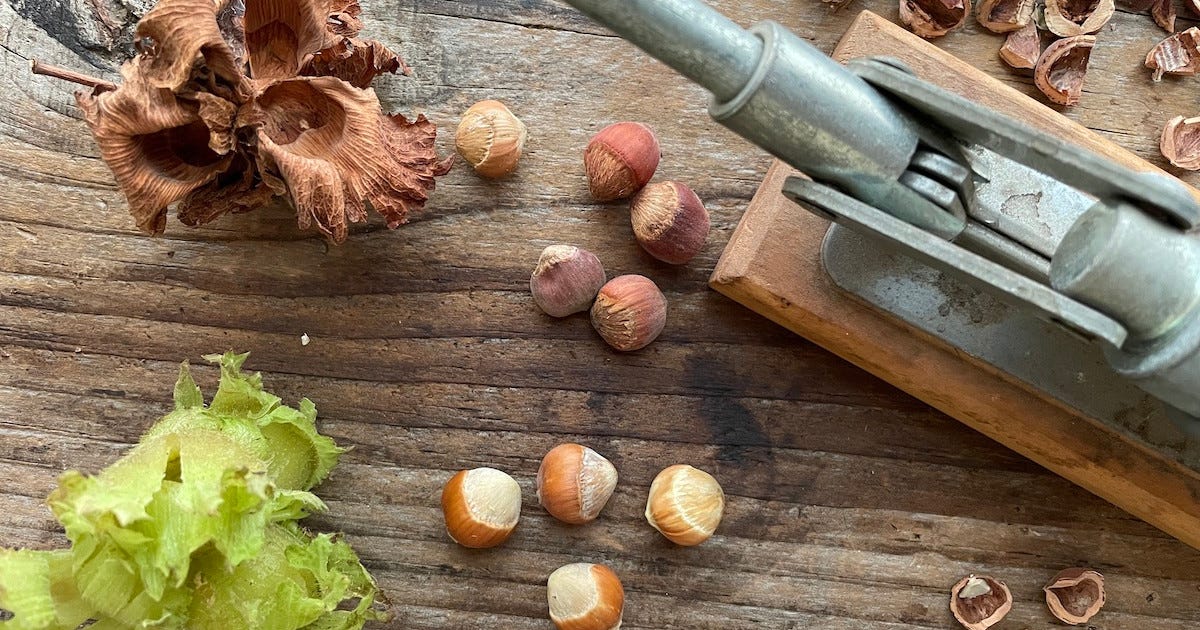
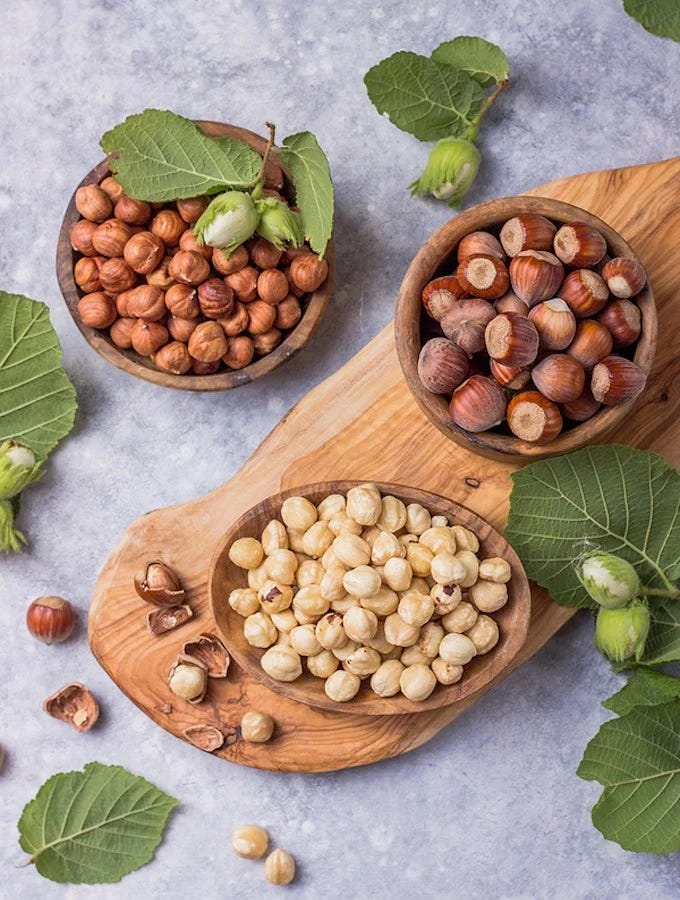
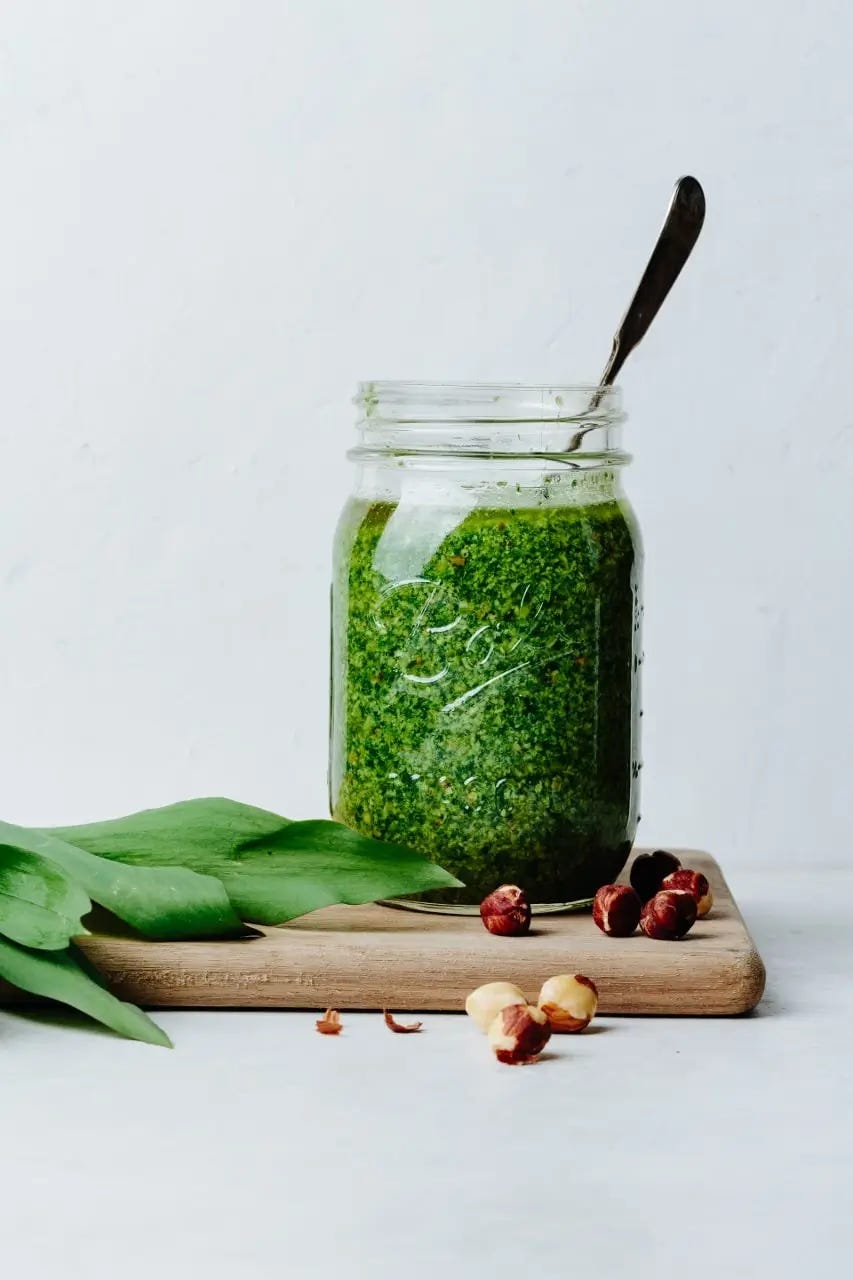
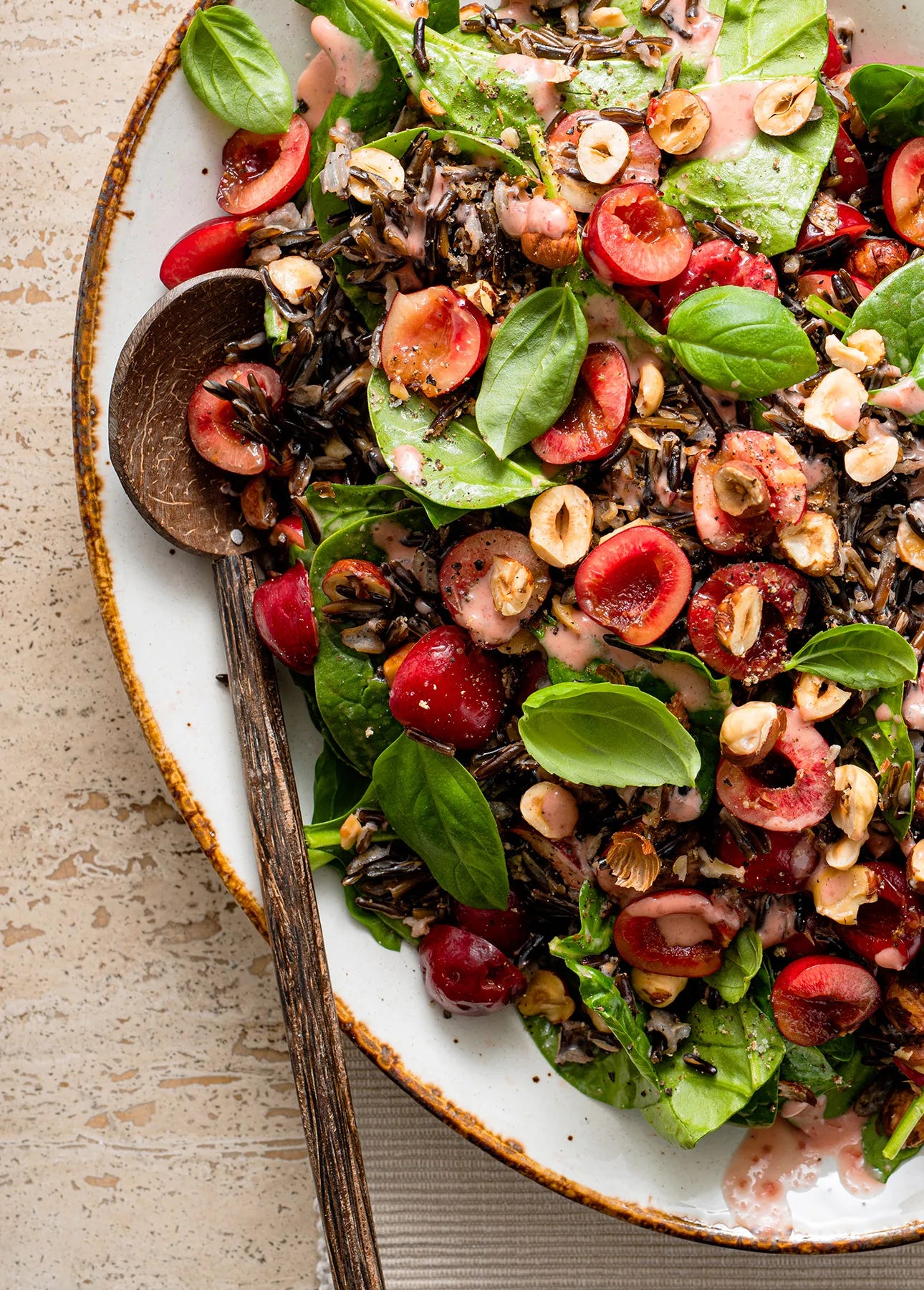
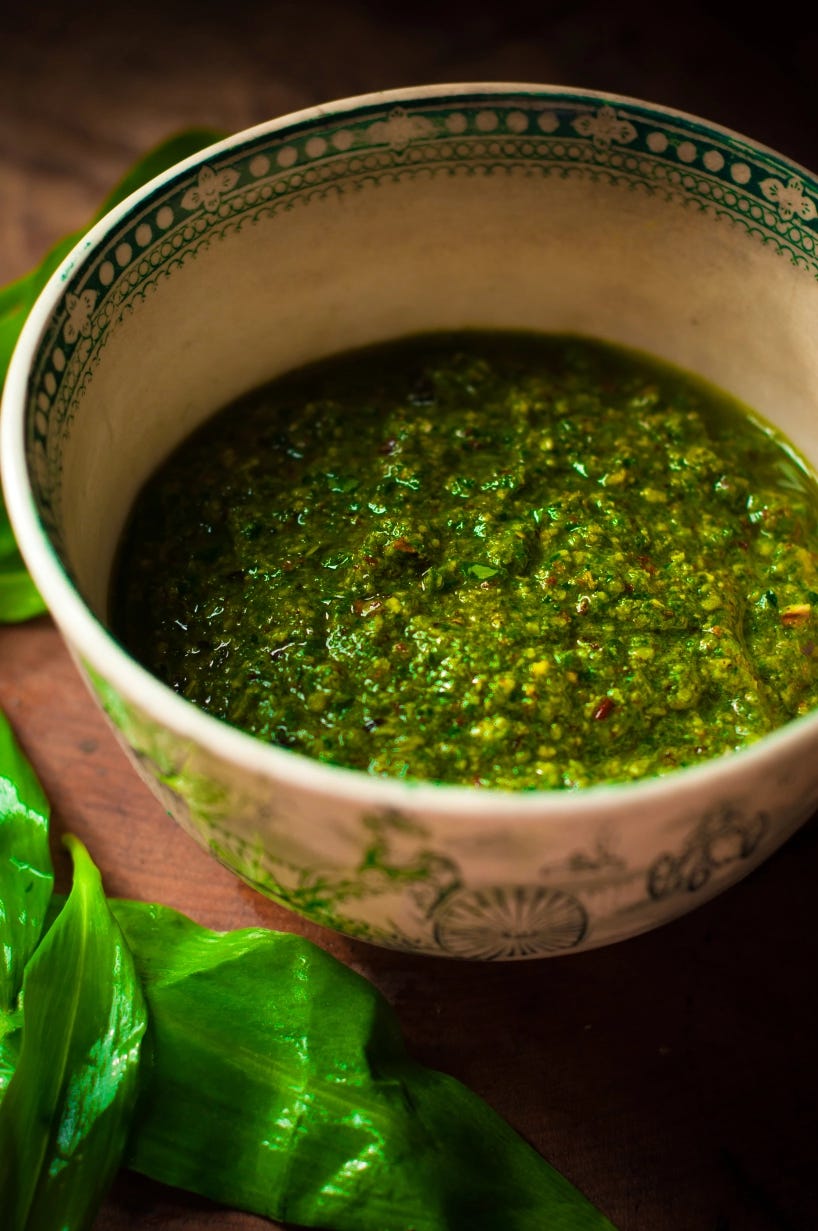
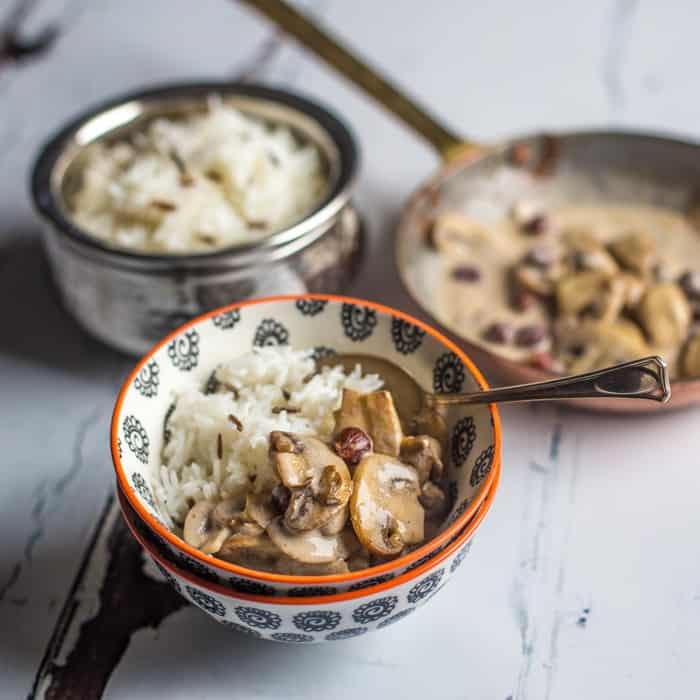

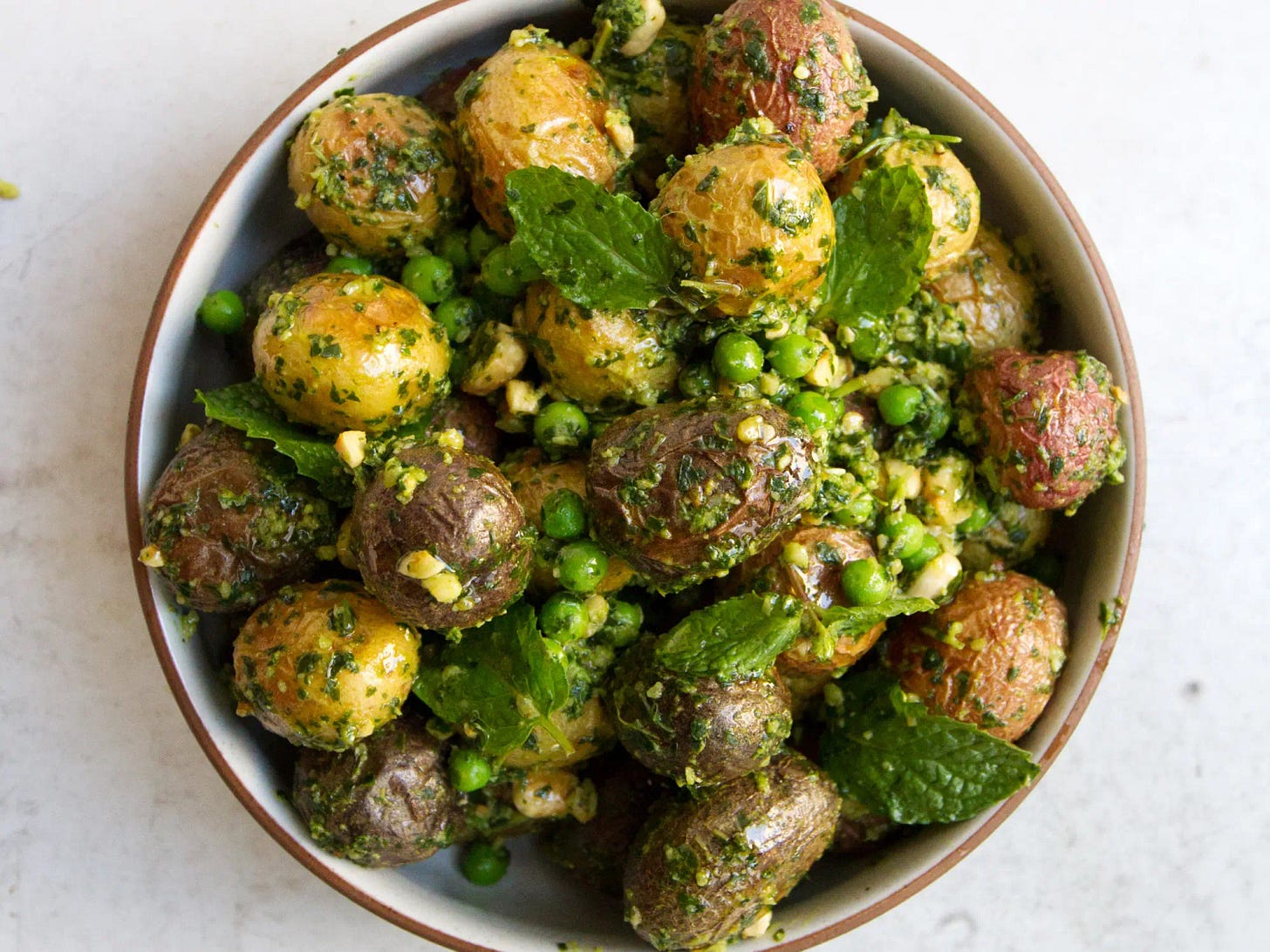
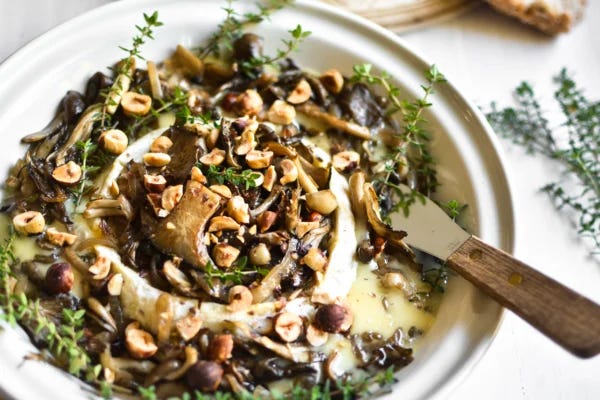
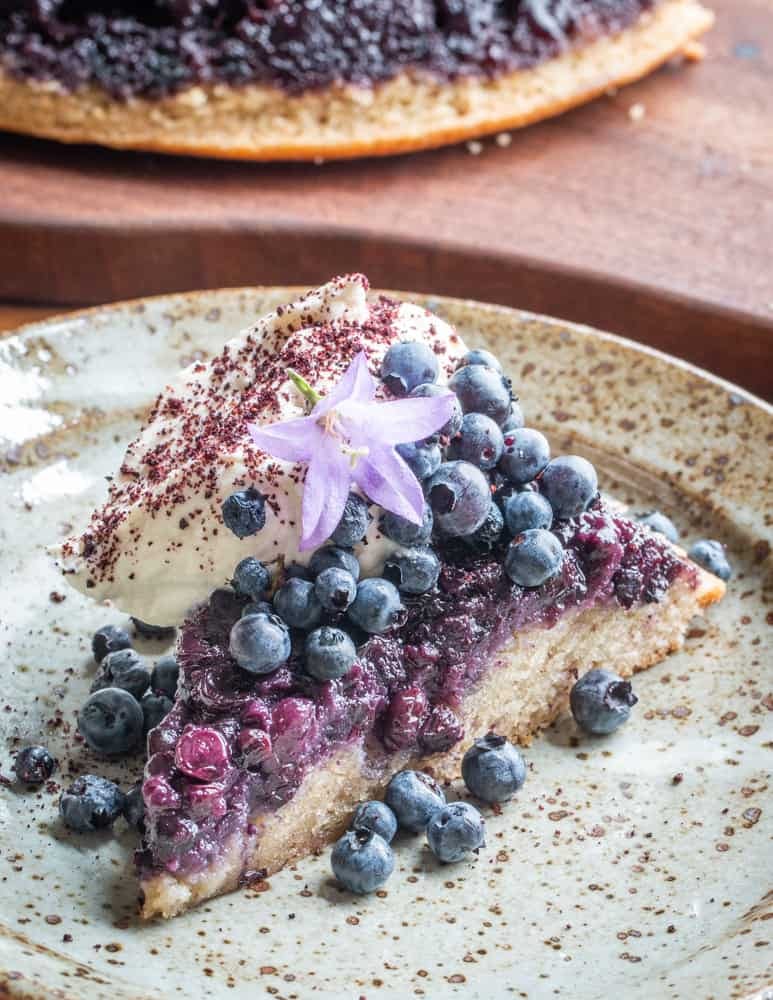

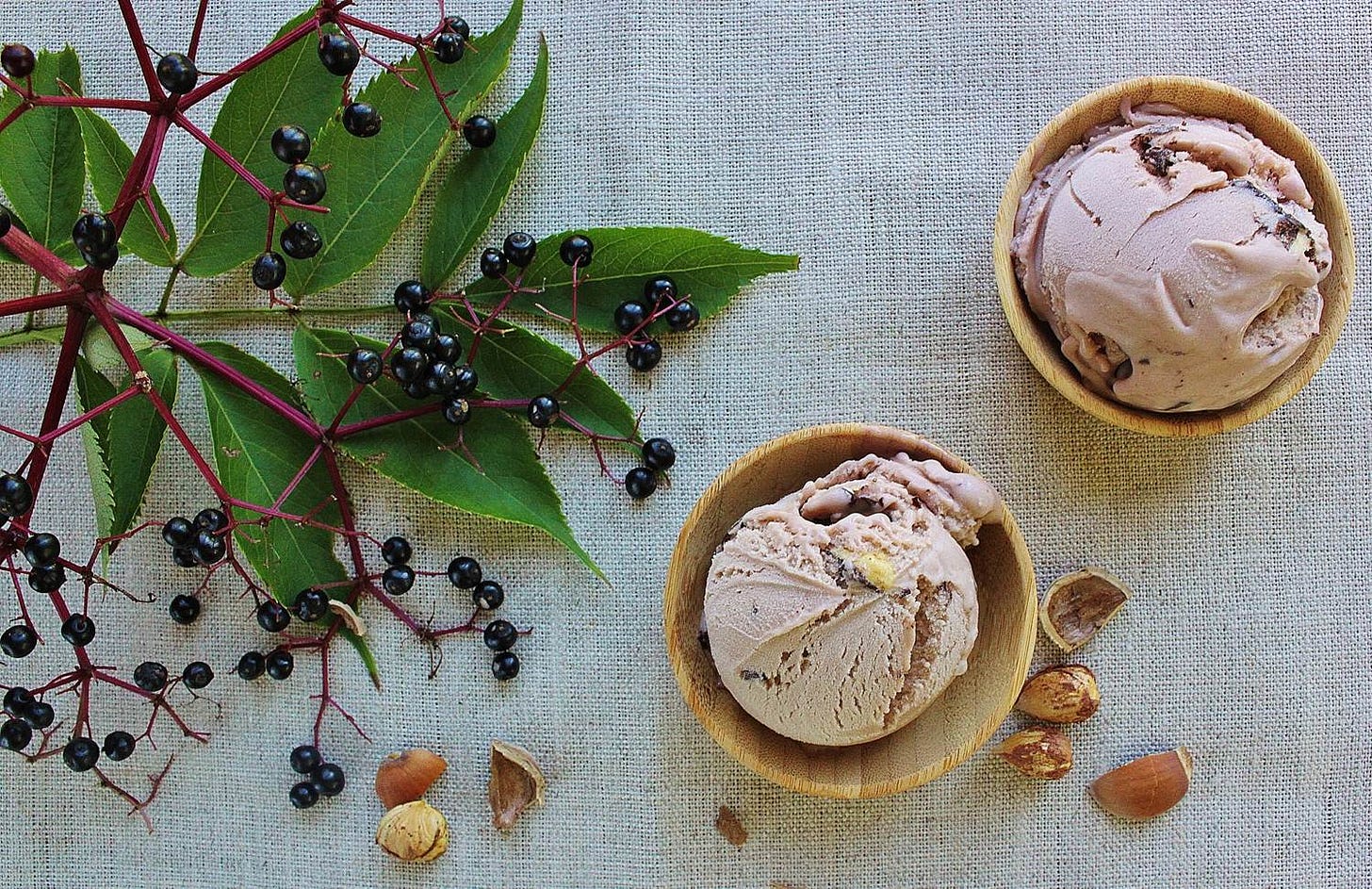
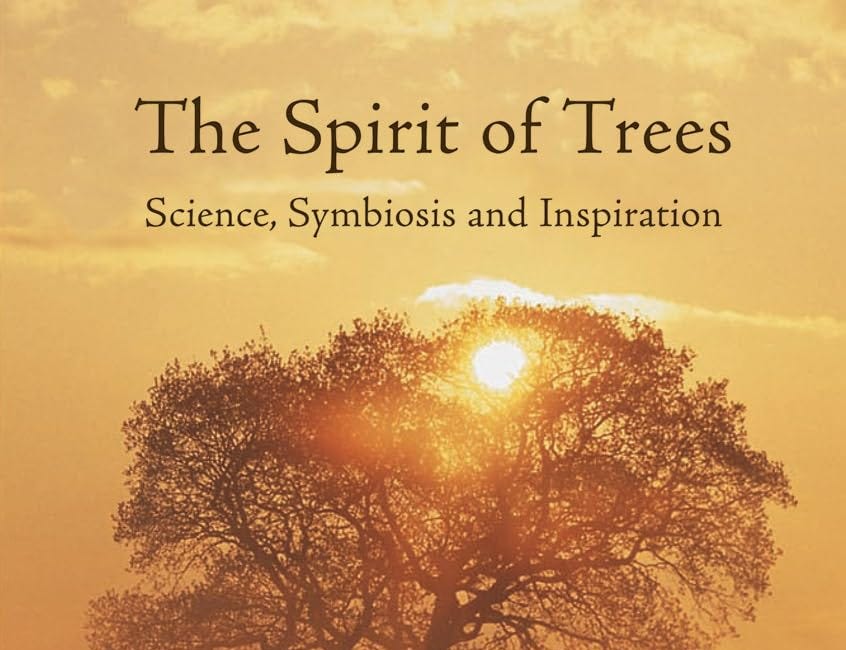




I planted 3 nursery-grown hazelnut bushes/ trees last year. I hope they start producing next year. Oh well, they’ll probably outlast me jut like the spruces and lilac bushes that delineate the old footprints of vanished homesteads.
Thank you so much for this amazing book in the form of a post! I have not read it all yet but I thought I'd add just a little bit of knowledge I gained from Graeber and Wengrow's Dawn of Everything that they found in the research of Stevens and Fuller 2012. The evidence points to the Neolithic cereal farming of southern Britain being abandoned in favour of Hazel food forests for a considerable period of time, not a regression but a choice it seems. Fascinating.